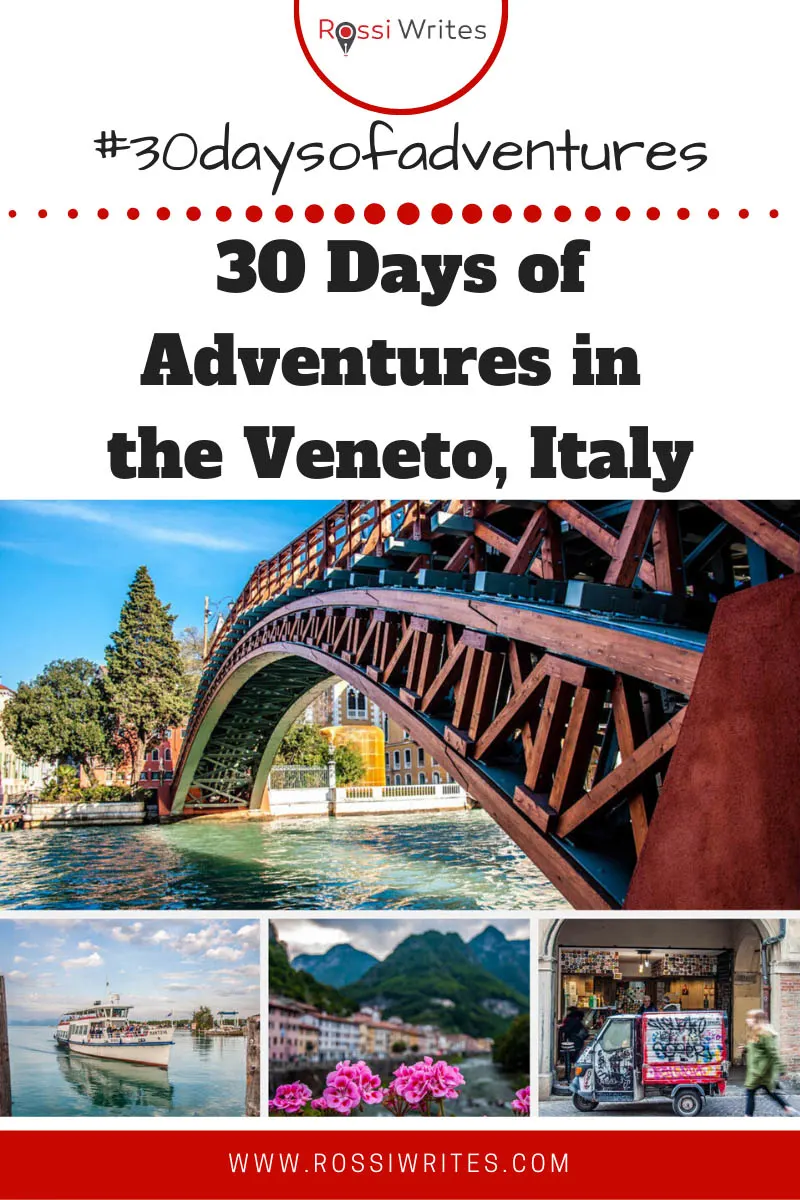Adventures make our lives a lot less ordinary. They fill us up with anticipation, give us a healthy dose of adrenalin and, once accomplished, we have the satisfaction of time well-spent and lifelong memories.
When life gets monotonous and gray, when our feelings bring us down, and a depressive mood is just about to conquer us without a fight, an adventure – no matter how small – can make all the difference.
Venturing out and about, straying just a bit off the beaten track can help us regroup and refresh. It can make us feel alive again and it can help us rediscover the beauty of the world around us.
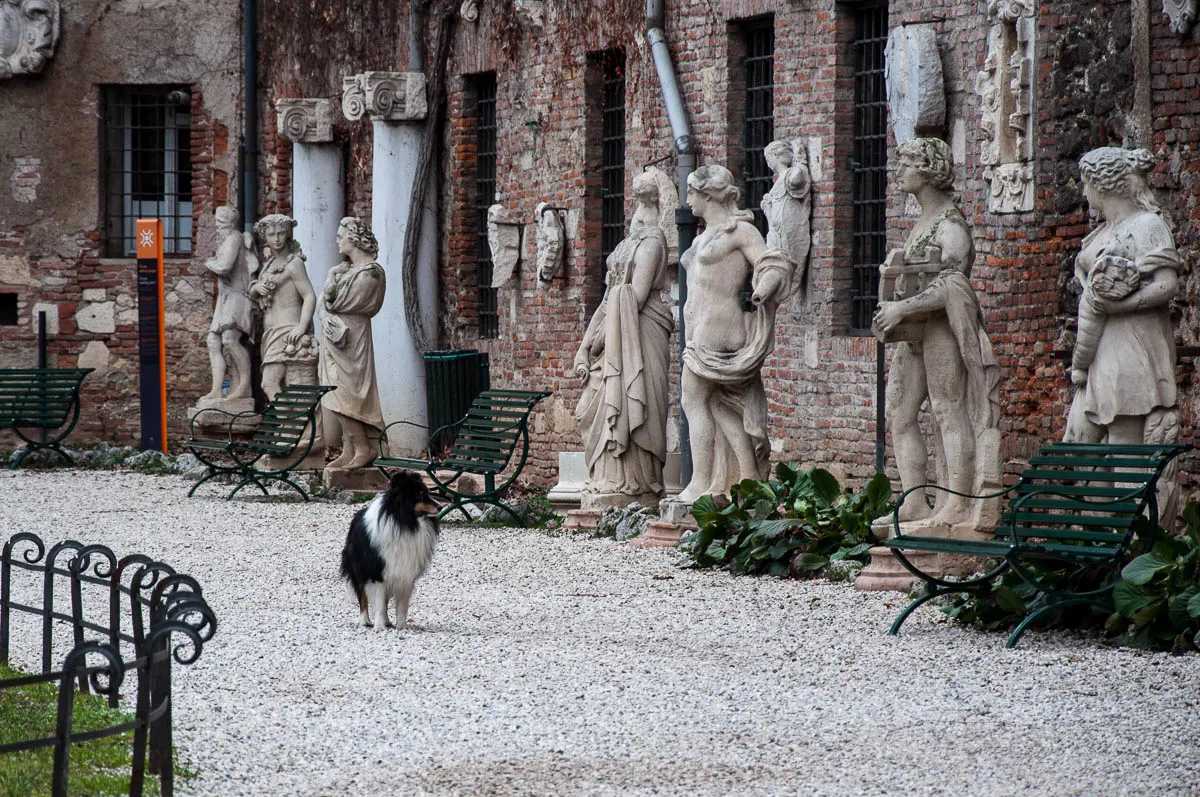
So, in the midst of this cold and rainy season, I want to give you a chance to have adventures. Not one, not two… but 30 of them! If you are feeling a bit down, a bit lost, please, pick an adventure from my list below and go out ready to face the world.
Take it as a challenge! I have called it 30 Days of Adventures (#30daysofadventures). Sounds good, doesn’t it?!
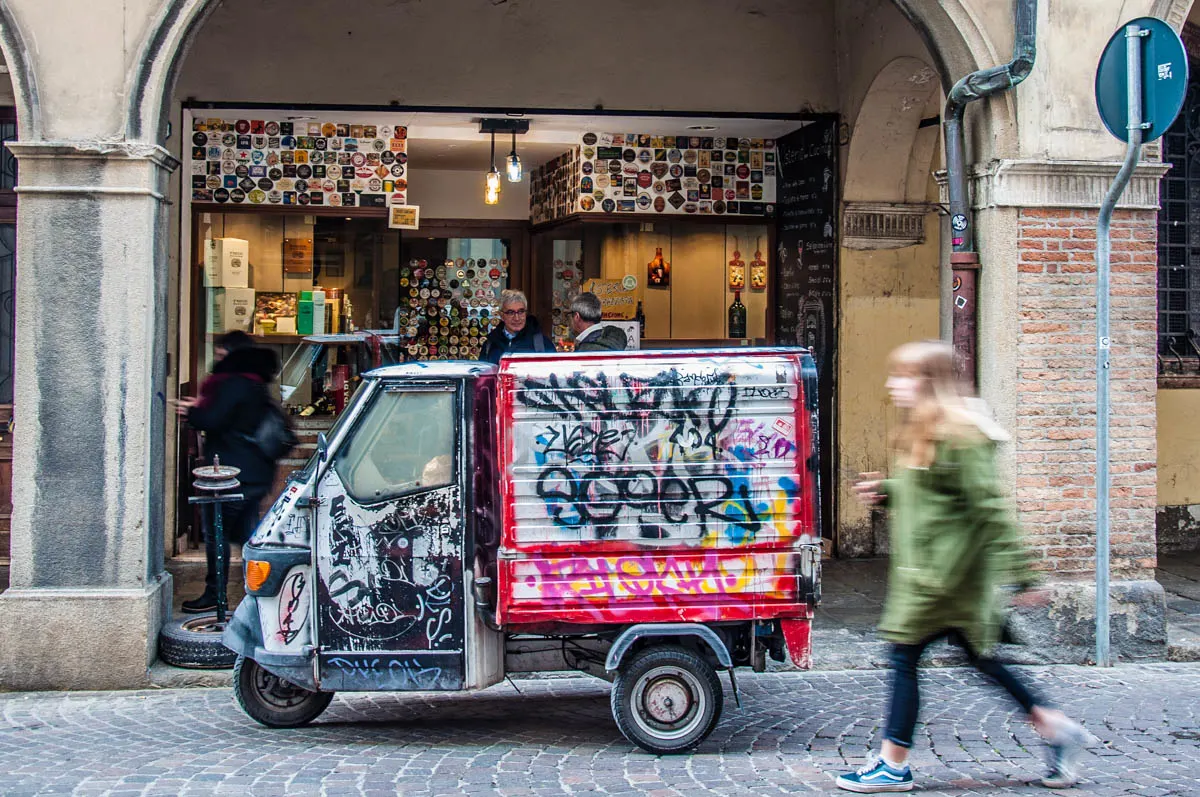
You can do it all in 30 days. Or you can split the adventures over thirty or fewer days throughout a year. The adventures don’t have to be accomplished in a particular order. Do them as you see and feel fit.
All examples and suggestions for adventures given below are based in the Veneto – the Northern Italian region where I have been living now for over five years. If you are not in the Veneto, don’t despair! You can simply adapt each adventure to the place where you currently live. I have provided tips on how to do it.
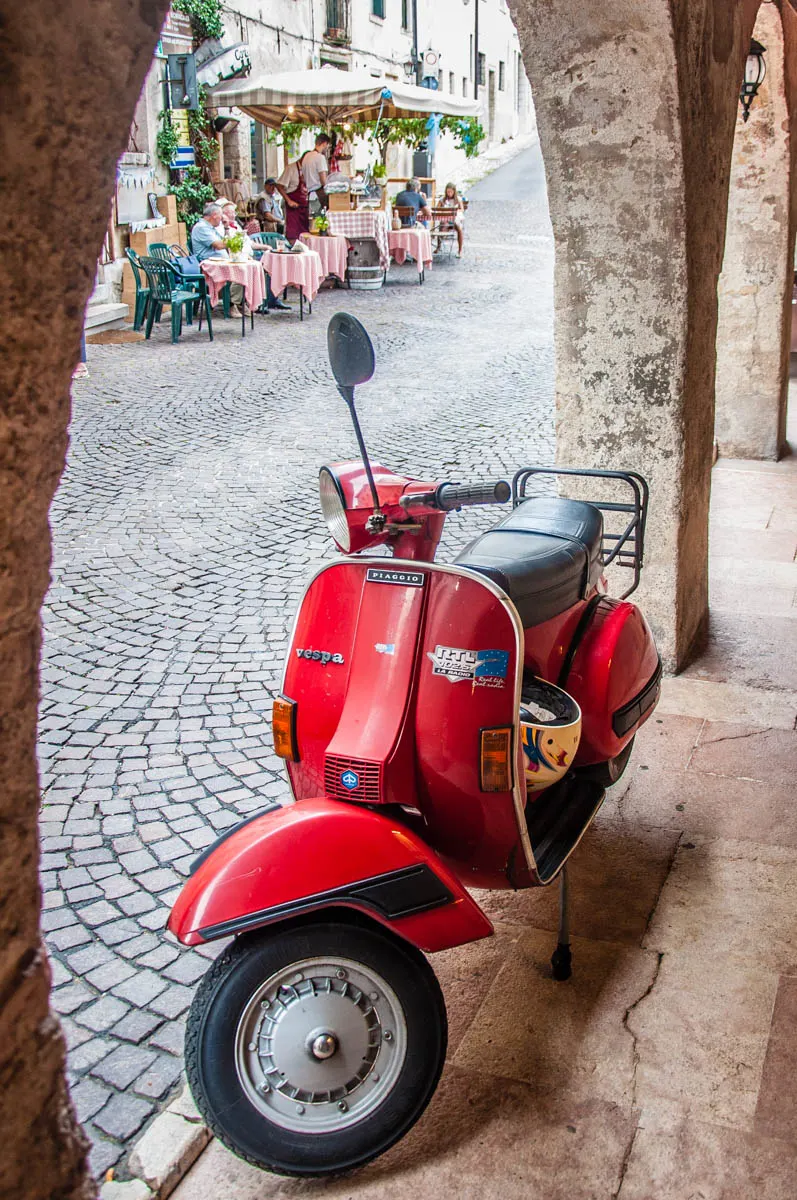
There are all sorts of adventures on my list. From city-centric and food-based to hiking-orientated and history-inspired ones. Plus, each adventure can be done in any season.
The goal is to get out of the house, have fun and discover the beauty that surrounds you so that depressive thoughts and dark moods don’t get hold of you.
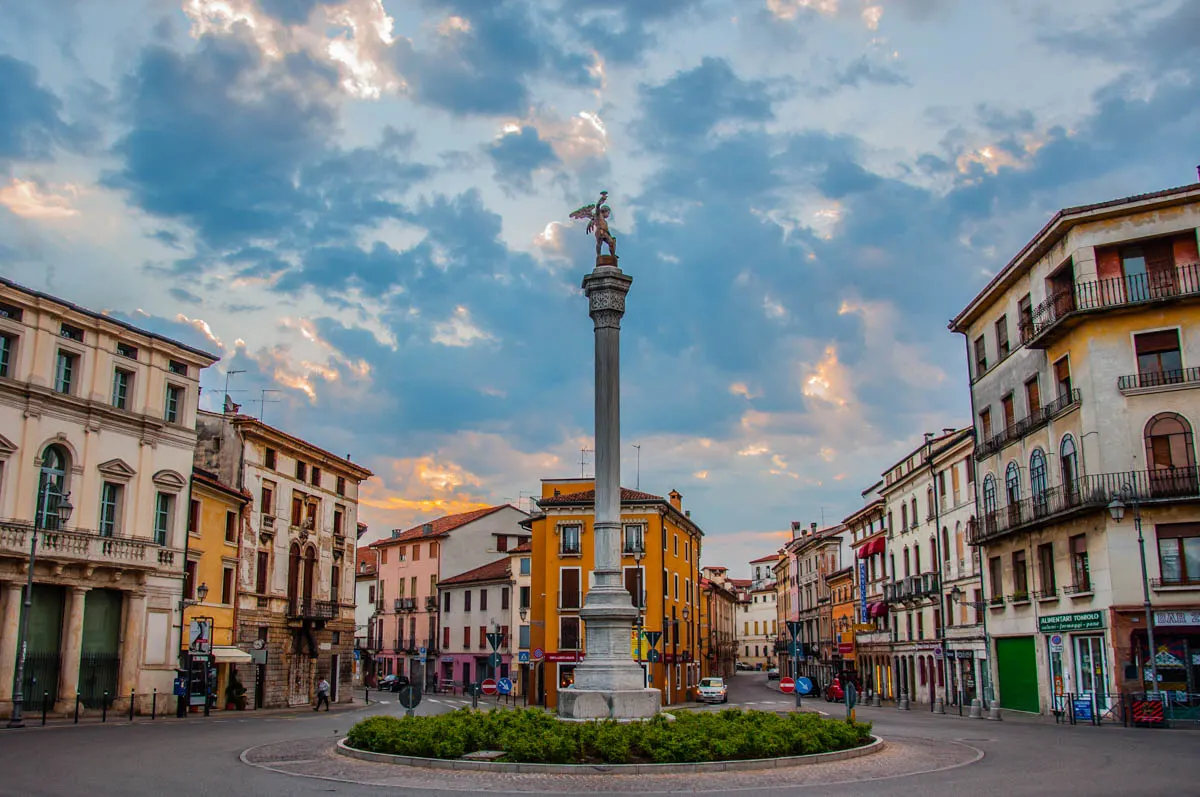
Enjoy adventuring!
30 Days of Adventures in the Veneto, Italy – #30daysofadventures
1. Cross Famous Bridges

Let’s start with a simple but satisfying adventure. Crossing a bridge is such an everyday thing to do but it can be so symbolical. Crossing from one side to the other, leaving the doubts and the dark moods behind, it’s like a new beginning. Plus, suddenly there are so many different angles to admire the views from.
Stop for a second and take it all in!
Some of the most famous bridges to cross in the Veneto are:
- Rialto Bridge and Accademia Brigde in Venice;
- Ponte Pietra in Verona; and
- Ponte Vecchio in Bassano del Grappa.
If you have the time and energy to travel to one of these three gorgeous cities in the Veneto and cross their bridges, do it!

If not, every city and town here seems to have at least one bridge the crossing of which will give you a chance to enjoy stunning views.
For example, in Vicenza, don’t miss the San Michele Bridge. With its cobbled walkway and stone arch, this early 17th-century bridge is a delight to discover and enjoy the views from in the city’s historic centre. Also in Vicenza, you can cross the medieval Furo Bridge which opens a beautiful panorama towards the gem in Vicenza’s crown – the Basilica Palladiana. See here what I mean:
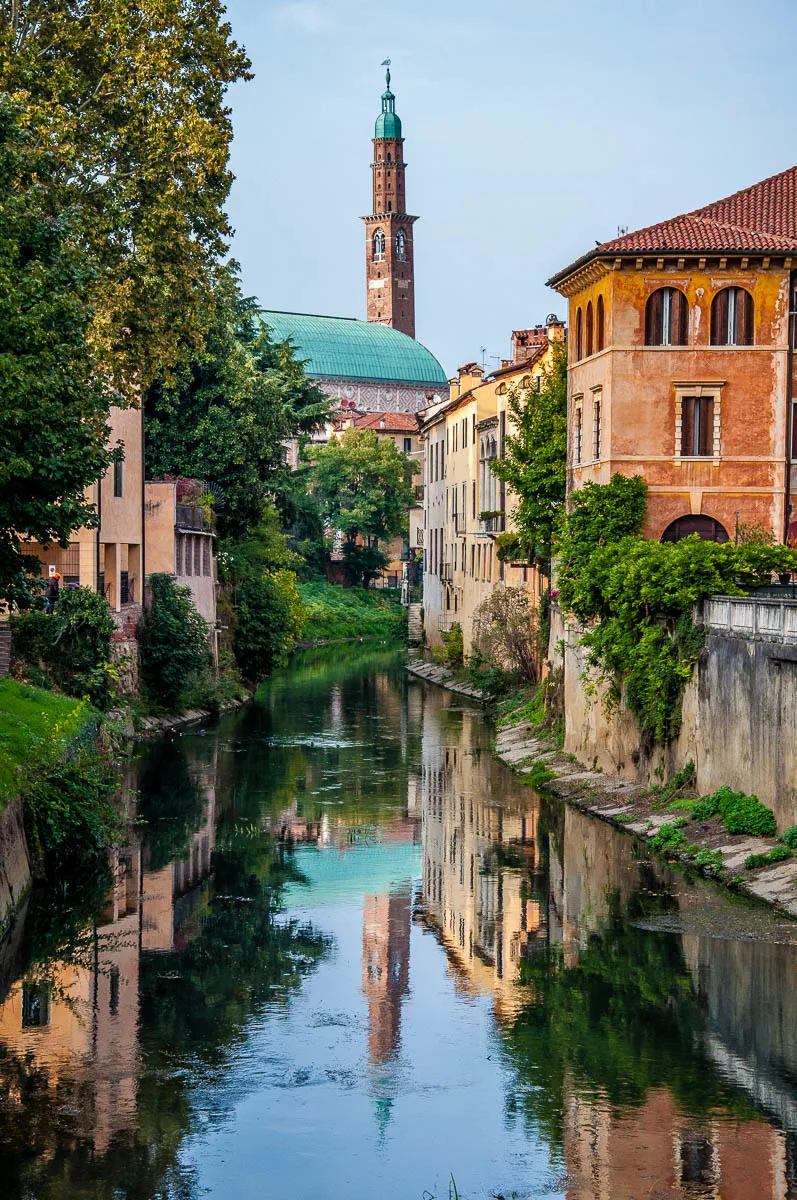
My favourite bridge in Vicenza though is the medieval Ponte delle Barche. Many centuries ago, the city’s river port used to stand in its immediate vicinity. Boats laden with precious cargo like spices and herbs would arrive from Venice there.
Often though, the best bridges and the best views are in the small picturesque towns that the Veneto is dotted with. Take Valstagna, for example:

This gorgeous view is certainly worth it the trip to Valstagna – a cute little town with colourful houses and the mighty river Brenta running right through it.
How to do this adventure if you are not in the Veneto, Italy?
That’s easy! With so many cities and towns built on the shores of rivers or close to the sea coast, nearly every place has its own bridge or a dozen with many local stories attached to them. Find a beautiful and/or interesting from an architectural or historical point of view bridge near where you live and go across it stopping to take in the views.
2. Find Out Who Each Statue at Padua’s Prato della Valle Represents
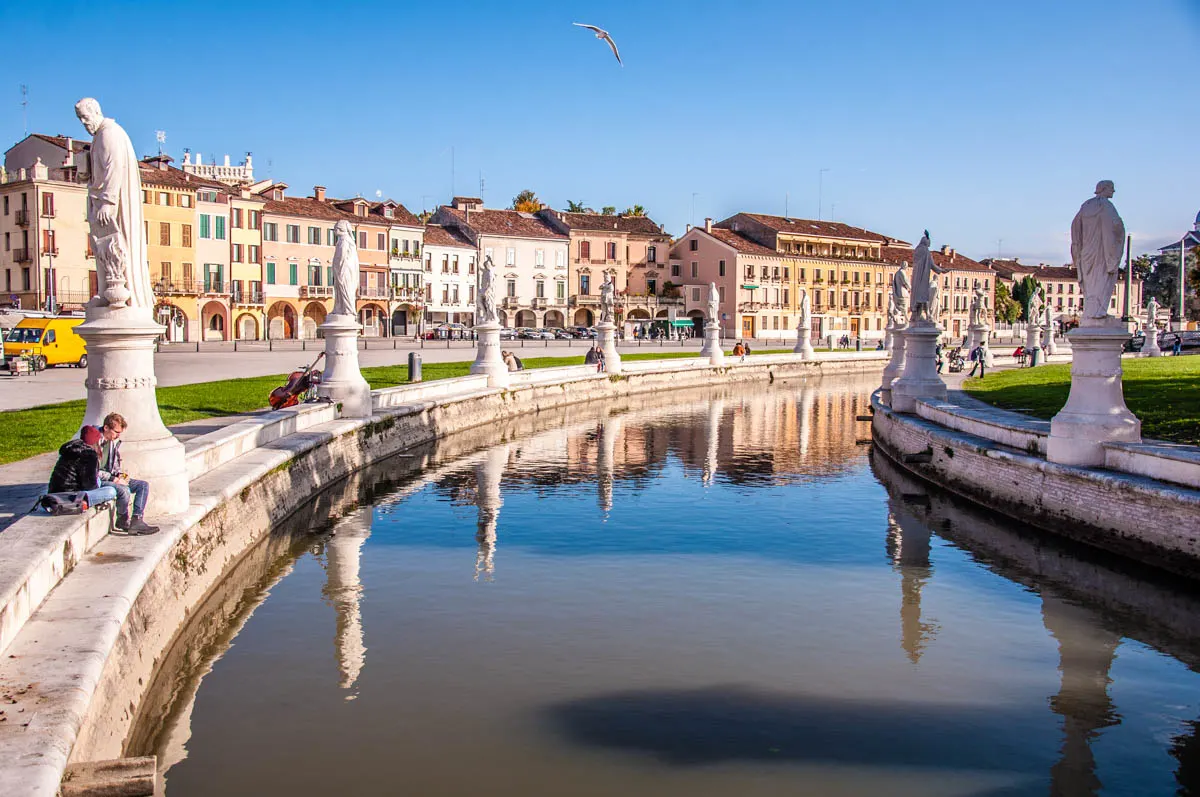
Prato della Valle in Padua is Italy’s largest square. It’s oval in shape and it has an area of almost 90,000 sq m. A canal picturesquely runs all around its perimeter thus creating an island in the middle of the square known as Isola Memmia.
The most interesting thing about Prato della Valle though is that the square is adorned with 78 statues. They represent illustrious people whose life and work have been intrinsically connected to Padua.
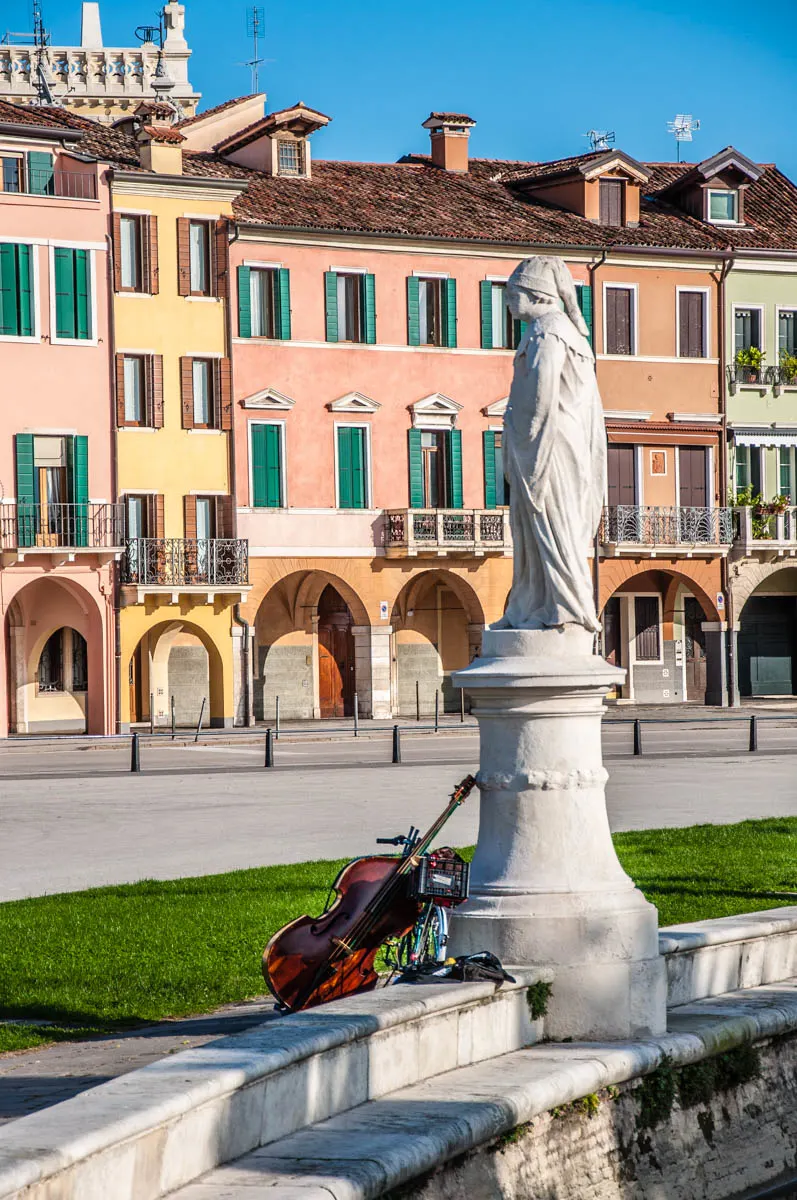
Now, Padua is one of Italy’s most underrated cities. Plus, it is conveniently located in the Veneto. So, it is very easy to reach it from all large and small cities and towns here like Venice, Verona, Vicenza, and Treviso. For example, it only takes 17 mins by train to get to Padua from Vicenza. Thus a day trip to the city is an easy and very enjoyable thing to do.
Once in Padua, head to Prato della Valle and dedicate a bit of time to this second adventure on my list of 30 days of adventures in the Veneto, Italy.

The adventure is simple, fun and it helps you get connected to Padua’s history and quirks. All you have to do is look at each statue as you walk around the square and try to find an interesting fact or two about each illustrious person represented.
You will see that there is a number carved on the pedestal of each statue. Using this handy Wikipedia list you can easily identify who’s who on Padua’s Prato della Valle.
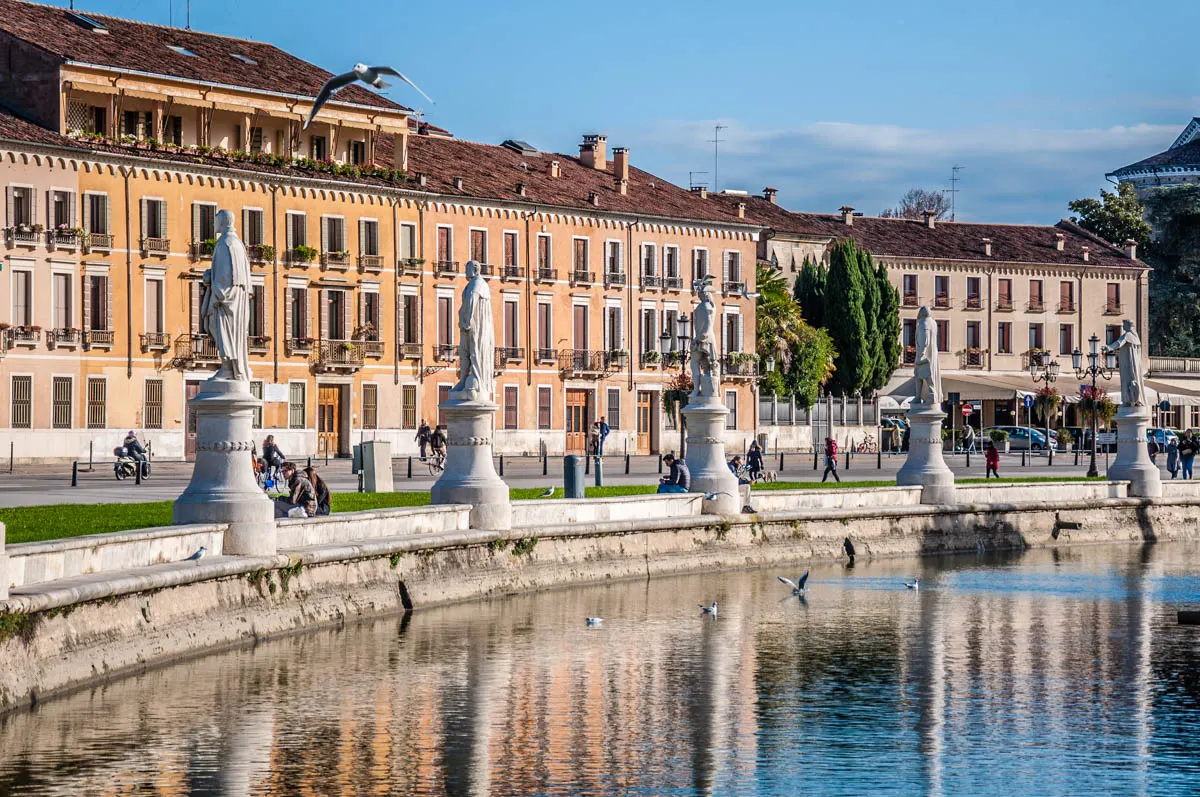
You will come across some worldwide known names like:
- Andrea Mantegna at number 21. He was a renowned Renaissance artist who recreated in his paintings the physicality and proportions of Roman statues. Mantegna also happens to be one of my most favourite painters. I love looking at his frescoes and paintings depicting people with strong, chiseled-like bodies. Mantegna was born close to Padua and spent some time in the city both to study painting and to work as a painter. You can still see his impactful frescoes in Padua’s Church of the Eremitani.
- Petrarch at number 35. He was one of the earliest and most illustrious representatives of Humanism. His writings influenced deeply the Italian Renaissance. Petrarch spent many years of his life in Padua and was crowned as Poet Laureate of the city.
- Galileo Galilei at number 36. He was a mathematician, astronomer, and physicist among many other things. Nowadays he is known as the Father of the Scientific Method and the Father of Modern Physics. Galileo spent the happiest (in his own words) 18 years of his life teaching at Padua University.
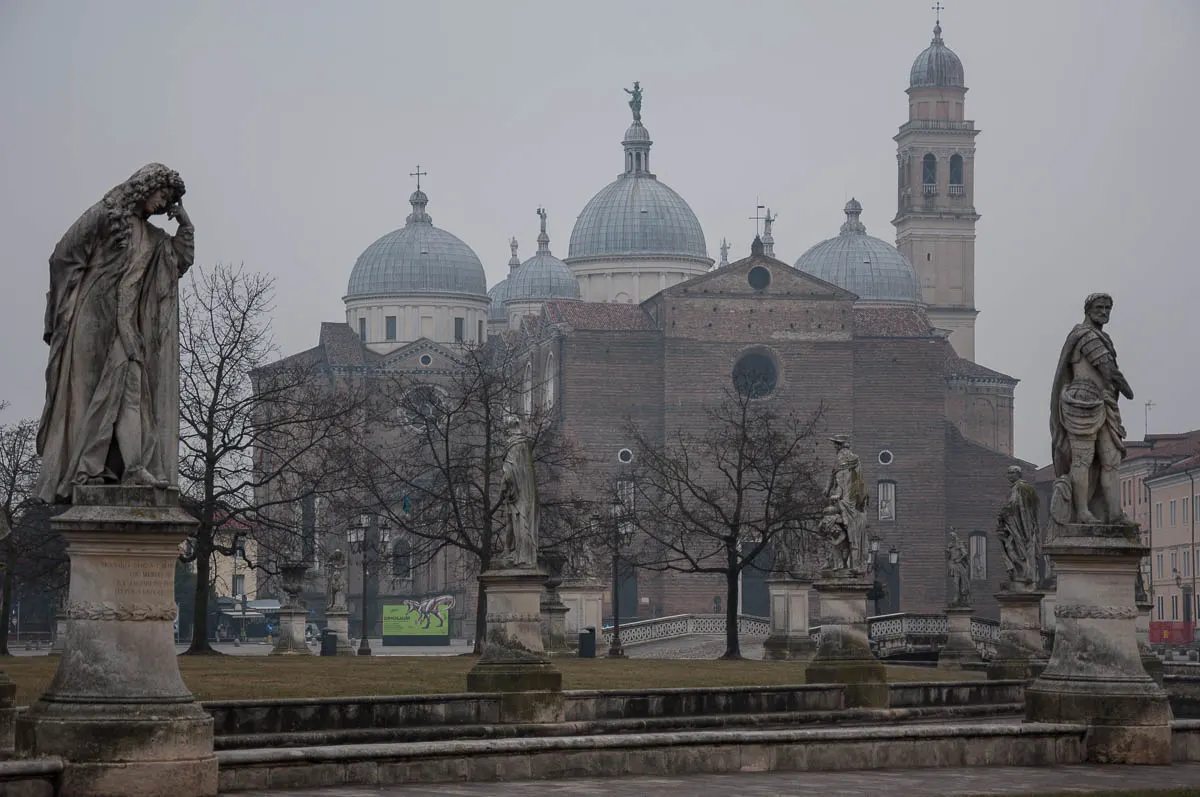
And you will come across people whose names these days are not widely known beyond Padua and the Veneto. Yet, they have led exciting lives and have contributed to the glory of the city. For example:
- Giulio Pontedera at number 71. A Tuscan botanist, in the 18th century Pontedera was the director of Padua University Botanical Garden. This is the world’s oldest academic botanical garden which is still in its original location.
- Nicolo’ Tron at number 72. Born in Padua, he was an entrepreneur, a friend of the British mathematician Isaac Newton and an ambassador of the Republic of Venice to the court of King George I.

Learning a curious fact or two about each of the people memorialised on Prato della Valle is a great way to feel more connected to the city of Padua. It’s also an adventure helping to expand one’s horizons which is always a great antidote to feeling down and disconnected from the world.
How to do this adventure if you are not in the Veneto, Italy?
No problem! You don’t need a huge square with dozens of statues to do this adventure. Find a statue or a monument in your place of residence that you have always been interested in but have never had the time to learn more about it. Do a simple search online to see what information you can find. Or go to the local library and see if they have any interesting books about the statue or the monument and the people and events it represents. Who knows?! You may end up uncovering some really curious stories.
If you have more time and resources on your hands, then find out which is the biggest square in your country. Then organise a day to visit it yourself. Once there, explore the statues and/or other elements that decorate it and learn the stories behind them, too.
More information:
- Padua, Italy – 89 Reasons to Visit the City of the Saint
- 10 Reasons to Stay in Padua During your Italy Holidays
- The War on Art or the Loss and Reconstruction of the Mantegna Frescoes
- The Sunset That Petrarch Enjoyed
- Padua’s Botanical Garden and the Basilica of Santa Giustina – A Great Contrast of New and Old
- For more on Nicolo’ Tron, please, see this article I wrote for BBC Travel – The Italian Town Obsessed with Great Britain
3. Hunt for Fossils
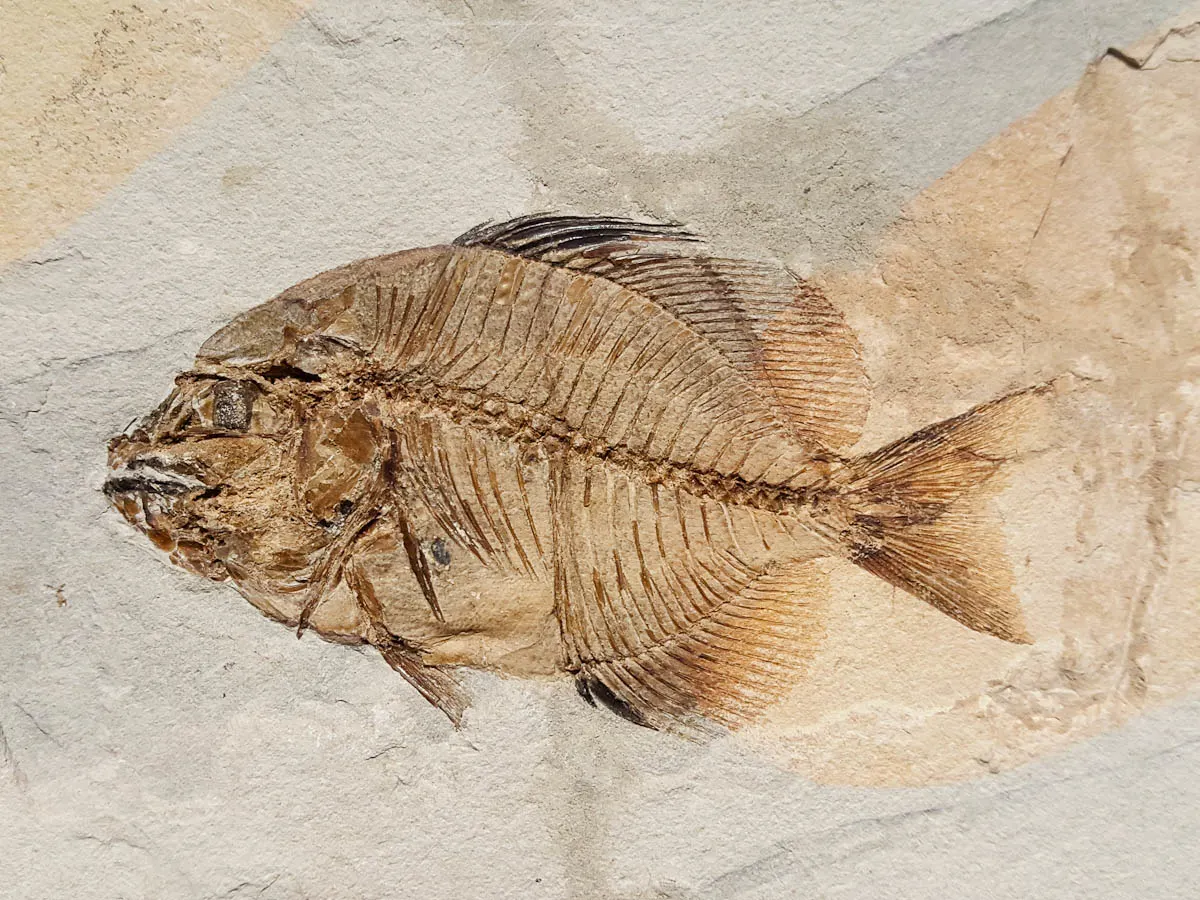
Hunting fossils in the Veneto is a lot of fun. Plus, it provides an outlet for some pent-up energy as at certain places in this Northern Italian region you can, actually, get to bash large boulders with a hammer yourself to see if there are any fossils inside them.
Allow me to explain!
There are several spots rich in fossils in the Veneto. Visiting them is a great adventure on one of those days when you don’t know what to do with yourself. Especially if you like being in nature and learning curious facts.

So, here are three places in the Veneto where you can see many perfectly preserved fossils, learn more about the geological past of this part of Italy and, at the same time, engage in a nice physical activity like a spot of hiking and/or extracting fossils yourself:

- Bolca in the province of Verona – would you believe it that there is a place in the Veneto which used to be at the bottom of the ancient Tethys Ocean?! Well, this is Bolca. Nowadays, Bolca is a small village but during the Mesozoic Era, it was the place where prehistoric fish swam and prehistoric underwater plants grew. Hence, today, Bolca is where many incredibly well-preserved fossils have been discovered. A small museum in the village holds some of the most high-quality fossils in Europe. Plus, it organises visits to the fossil-rich site of Pesciara. In addition, visitors can get searching for fossils and shark teeth themselves by renting hammers, gloves, and protective glasses to bash open rocks rich in microfossils.
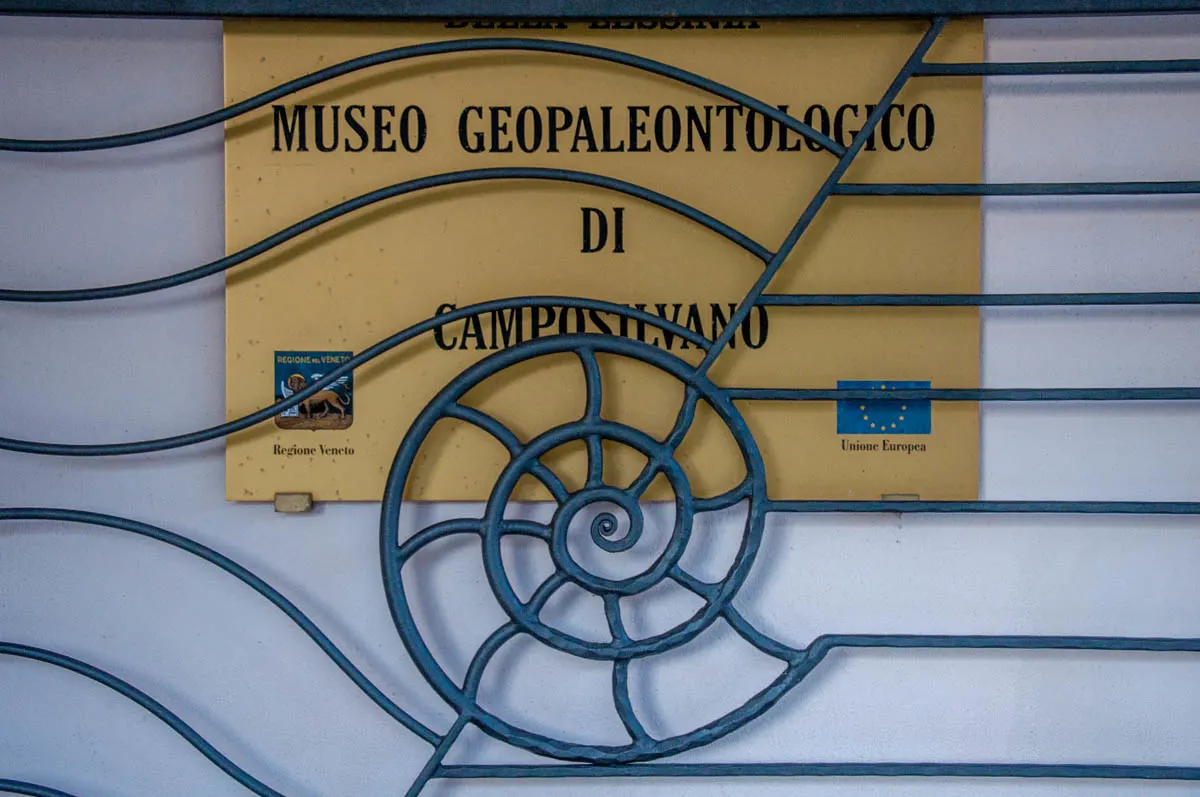
- Camposilvano in the province of Verona – in a small village in the folds of the beautiful Lessinia Hills, you will discover a very well-appointed geopaleontological museum. It has an excellent collection of ammonites and other high-quality fossils (there is a full skeleton of a cave bear, too). The museum was born out of the passion of a local man – Attilio Benetti – who dedicated his life to the study of fossils and became one of the world’s leading experts on ammonites.
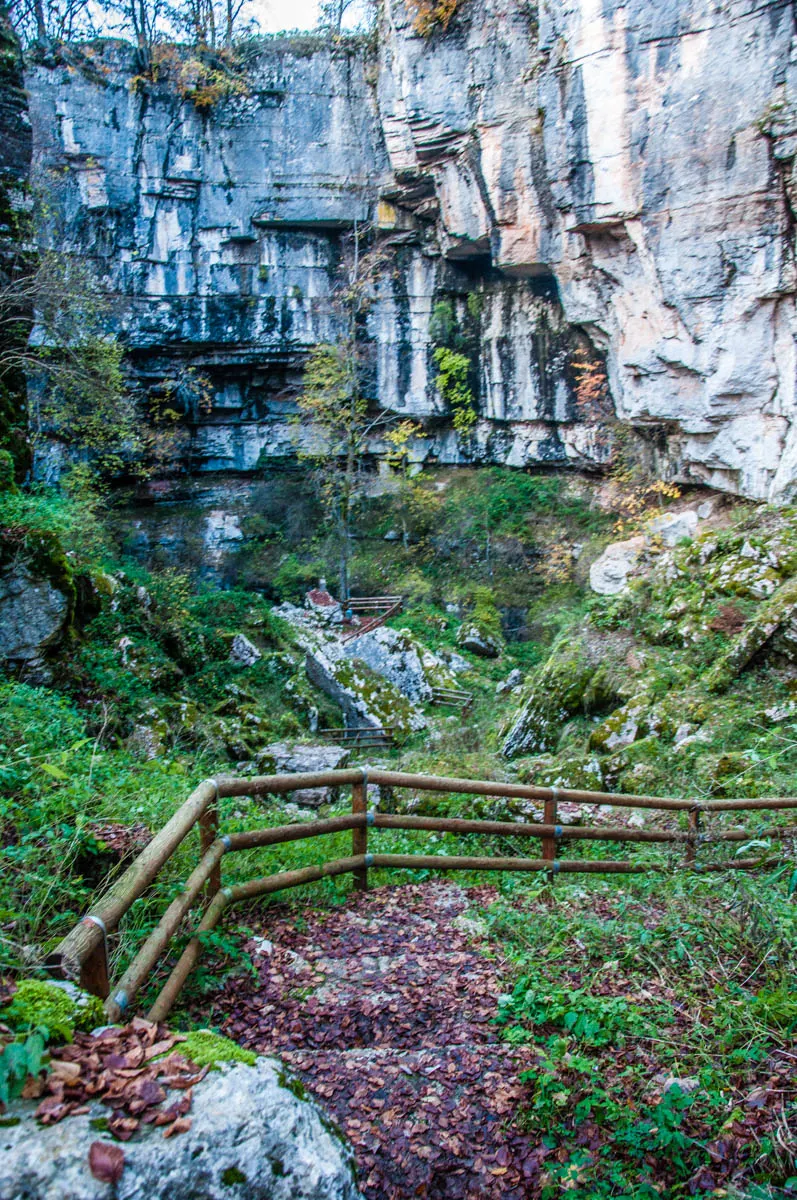
A visit to this museum also includes a short hike to the Covolo di Camposilvano – an enormous natural cavity with its own microclimate which can lead to summer snowfalls inside the Covolo. In addition, very close to Camposilvano is the Valley of the Sphinxes – a very interesting place dotted with large rock formations that look quite out of this world.
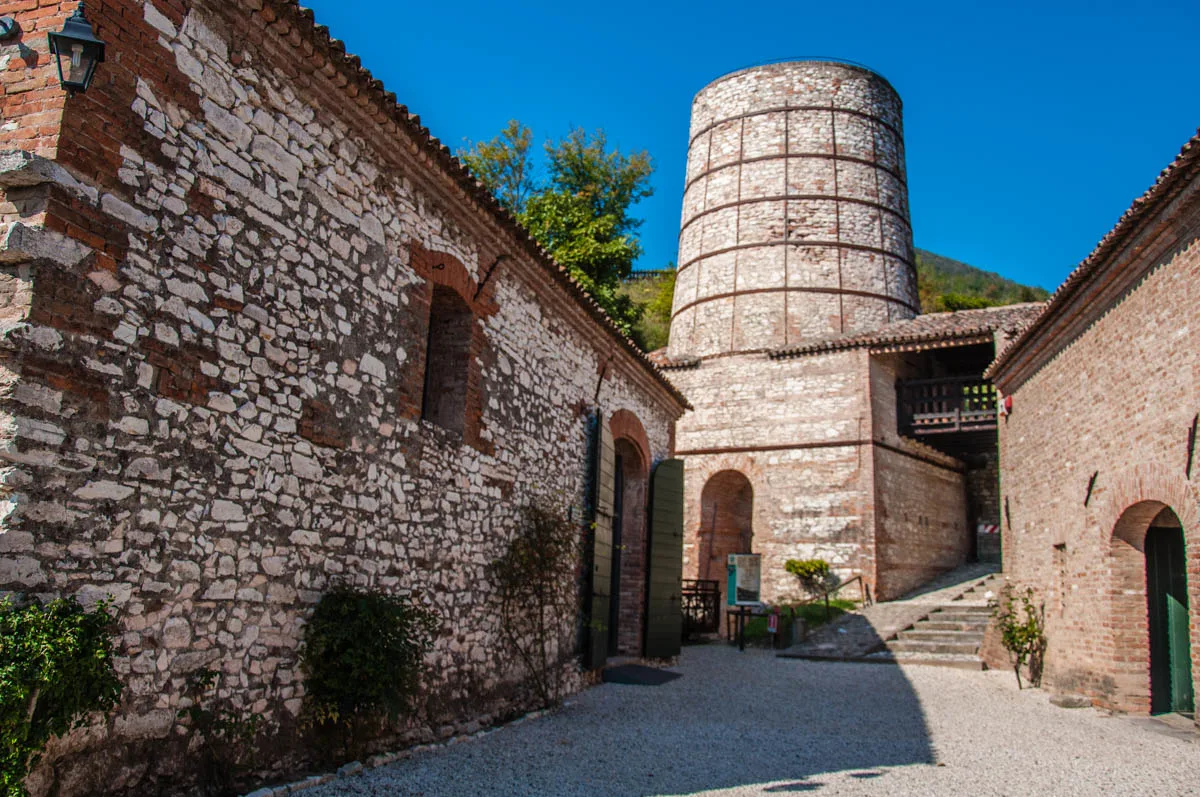
- Cava Bomba Geopaleontological Museum in the Euganean Hills in the Province of Padua – a very well-appointed museum in a former lime furnace with a rich collection of fossils and gemstones among many other things. Plus, there are a couple of life-size models of dinosaurs and you can go on a short hike in the hills around the museum to say hello to the dinos and admire the natural beauty of the place. Once your visit to the museum and the hike are out of the way, for a small fee you can get a hammer, protective glasses and a pair of gloves and engage in some boulder-bashing in search of fossils. It’s a lot of fun!
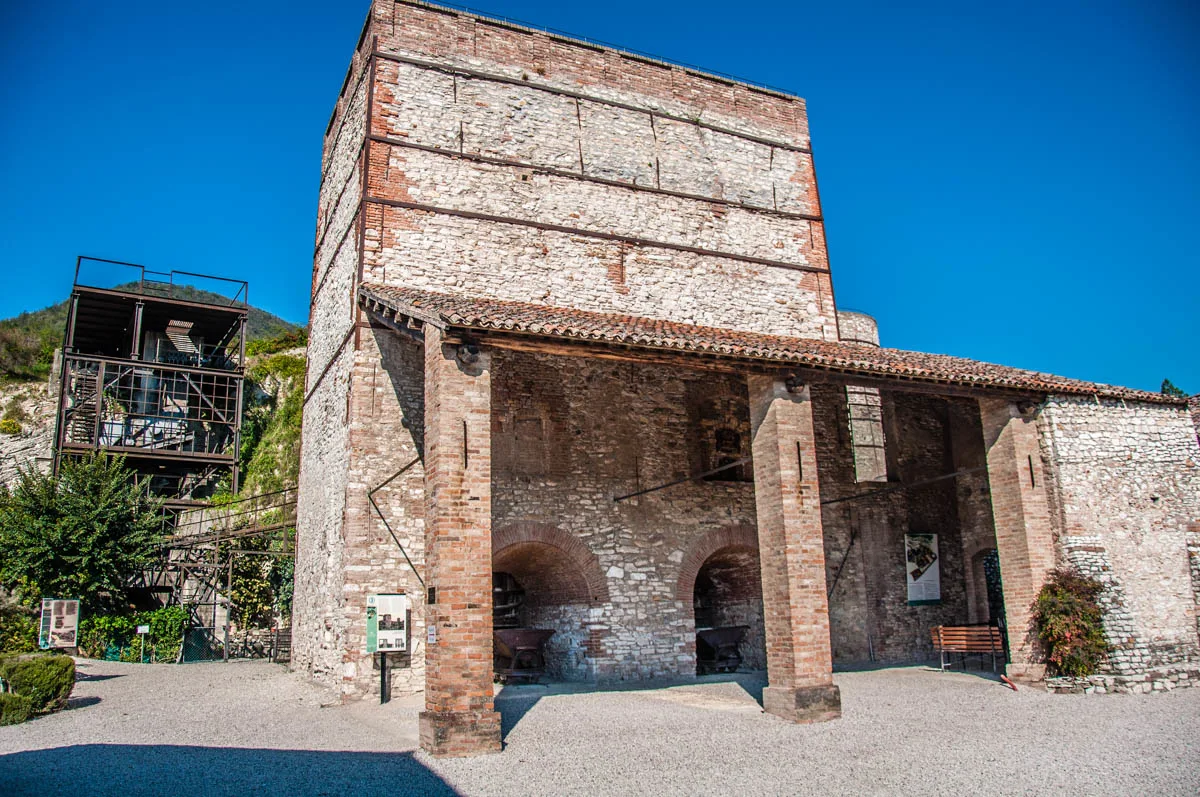
Learning about fossils and life on Earth millions of years ago is an excellent adventure to put in perspective any existential queries and worries you may have. It’s quite lucky that the Veneto is so rich in fossils and one can visit several places to discover more about them and see some really stunning specimens both local to the Veneto and discovered in other spots around the world.
How to do this adventure if you are not in the Veneto, Italy?
Easy! Just head to your local paleontological or natural history museum and spend some time browsing its collection of fossils. You will learn lots of interesting information which is bound to take your mind off things. You never know, there may also be a nearby site where you can engage in a fun fossil hunt.
More information:
- Fish, Fossils and Frog or My First Hike in Italy
- Photos of the Valley of the Sphinxes near Camposilvano
- Photos of the Cava Bomba Geopaleontological Musem
4. Get Close to the Veneti
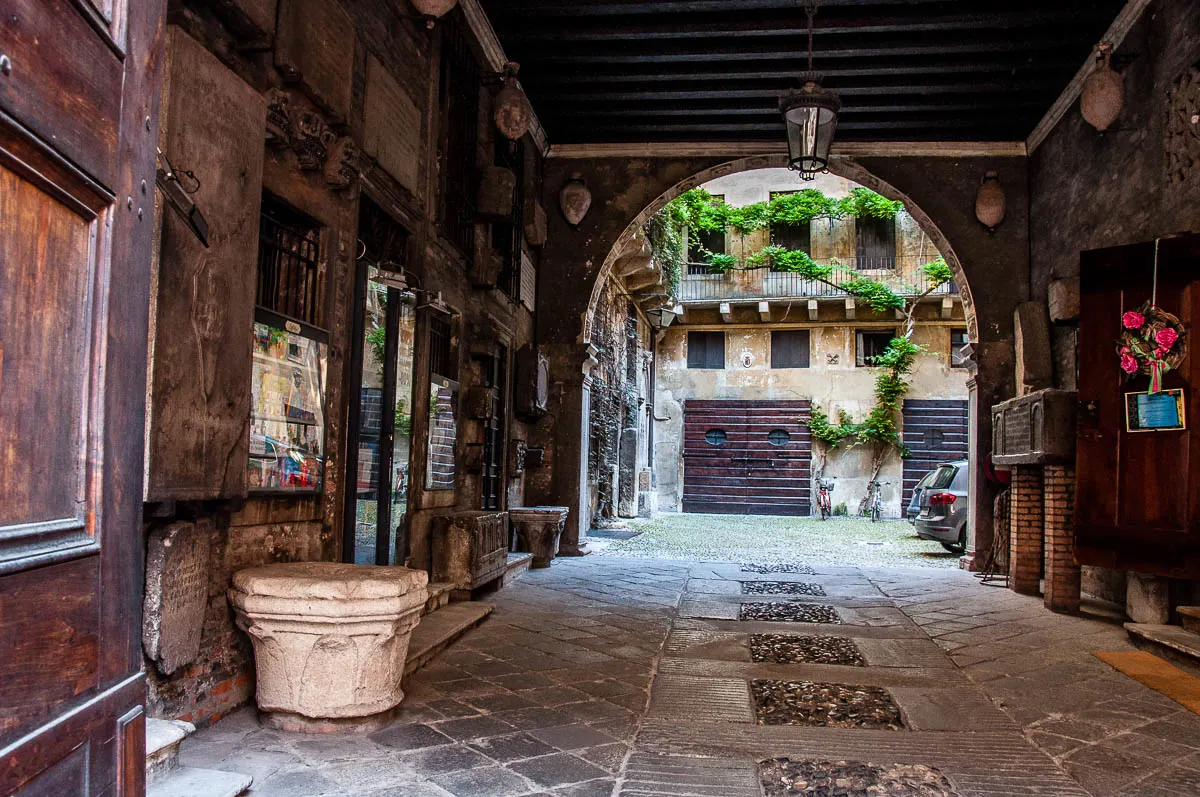
Seeing that this list is all about having adventures in the Veneto, let’s put a day aside to pay a visit to the people who populated this Northern Italian region several millennia ago.
Called the Veneti, they were an Indo-European tribe and can be traced in these lands as far back as the 8th century BC.
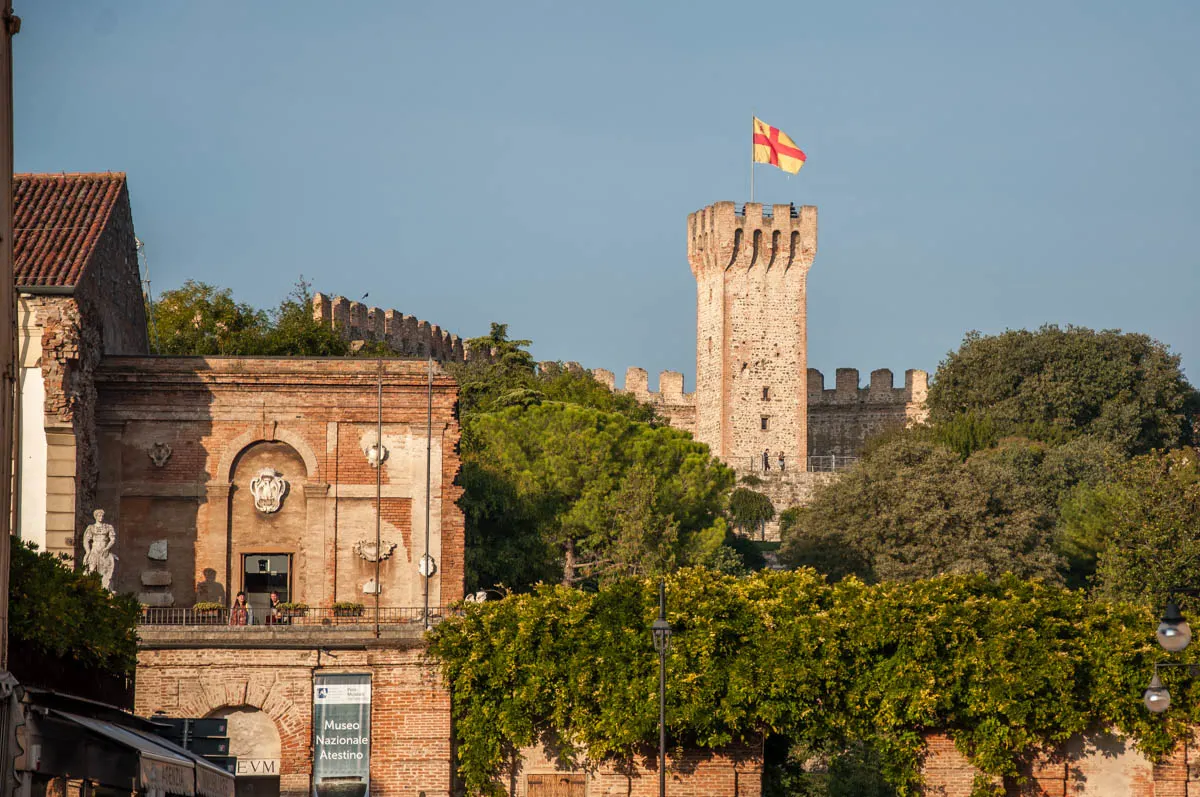
The Veneti had a rather advanced civilisation. They knew how to cultivate the land, make wine, breed animals, work metal and ceramics, produce art and jewellery. They had their own writing system and, curiously enough, their name ‘Veneti’ was derived from the Proto Indo-European root ‘wen-‘ meaning ‘to strive, to wish for, to love’. Etymologically, the Latin word ‘venus (veneris)’ for ‘love, passion, grace’ comes from the same root.
The Veneti left many artifacts for us to learn more about them. From stones covered with their writings to stunning pottery, the life of the Veneti can be explored at many spots around the Veneto. Here are a few. To complete this adventure, make sure that you visit at least one of them:
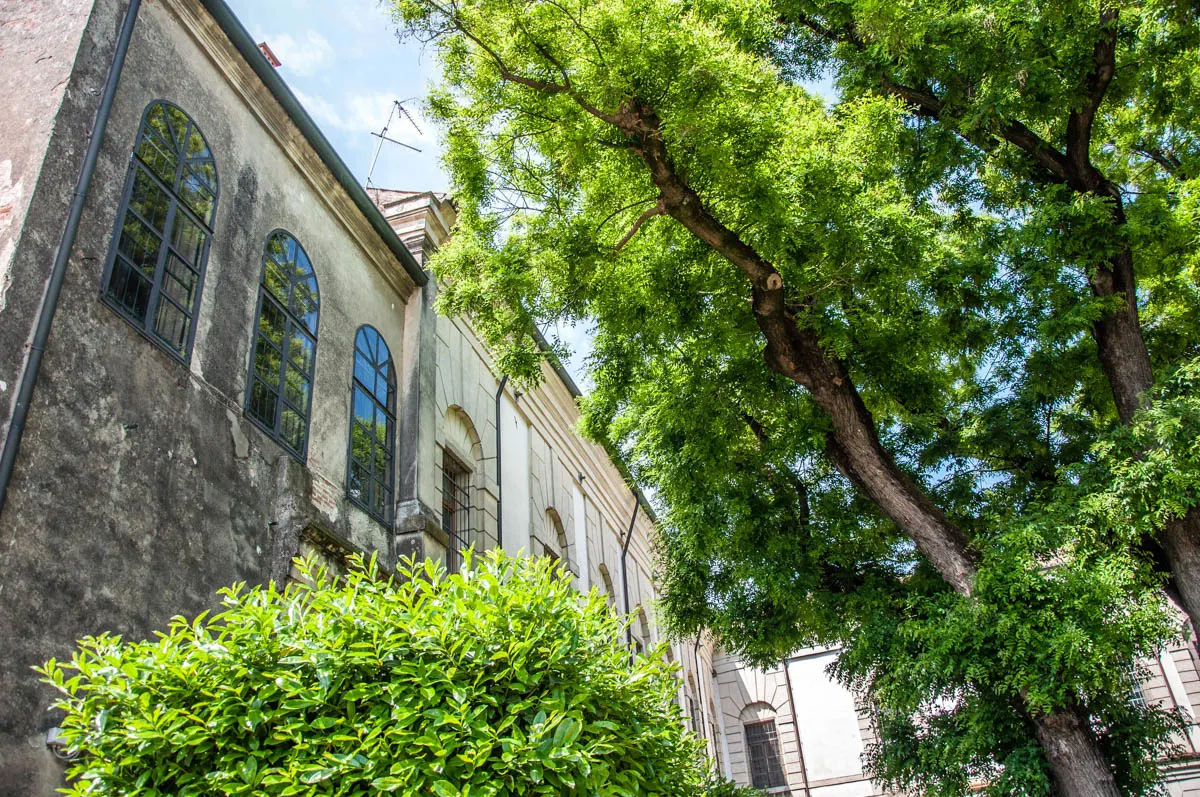
- Este – this gorgeous small town in the Veneto’s Euganean Hills keeps many vestiges of the Paleovenetic civilisation. For detailed information and beautiful artifacts head to the National Atestino Museum and the archaeological area of the Paleovenetic necropolis of Via Santo Stefano. If you have time, walk the Este’s Archaeological Itinerary which takes you to 16 sites of important archaeological discoveries as well as necropolis and sanctuaries over 6 km.
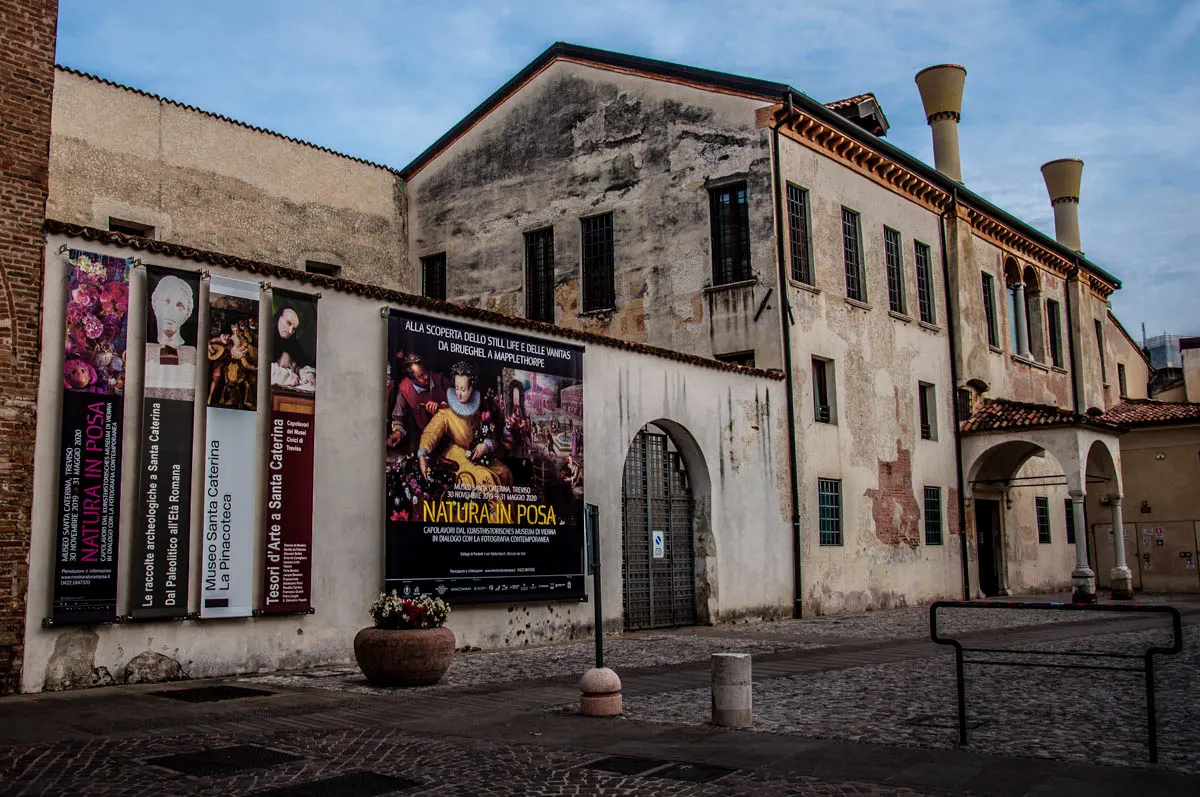
- Treviso – the Archaeological Section of the Museum of Santa Caterina in the city has several priceless artifacts pertaining to the Venetic civilisation. Particularly striking are five bronze disks adorned with a series of complex images.
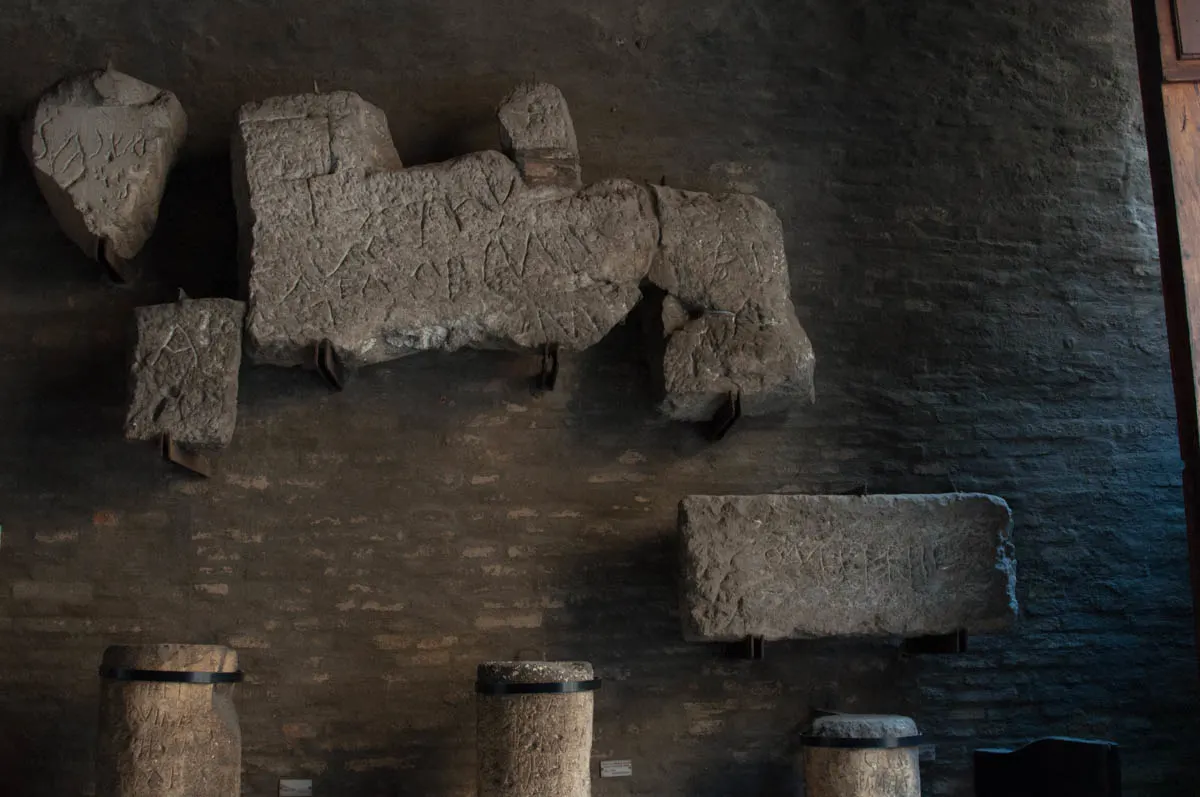
- Vicenza – pop into the courtyard of Palazzo da Schio (also known as Ca’ d’Oro) on Corso Palladio in the historic centre of the city. Here you will find a small lapidarium – a collection of stone plaques and signs among which are some with Venetic writings carved on them. The local Archaeological Museum also holds many Venetic artifacts revealing the life and activities of the Veneti tribe in what nowadays we know as the city of Vicenza.
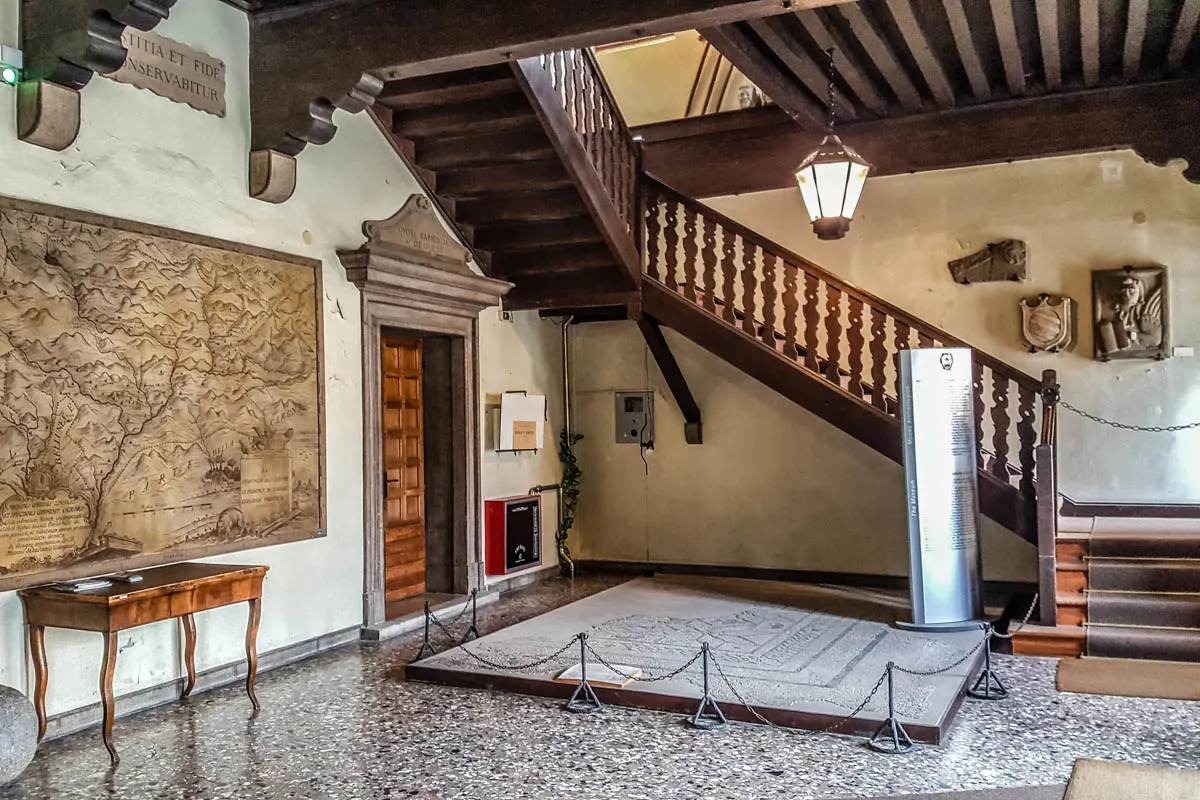
- Pieve di Cadore’ – the area of this small town in the Dolomites has been inhabited for thousands of years and vestiges of the culture of the Veneti are abundant in the region. Many archaeological excavations have been conducted there unearthing, among other things, evidence of the existence of a large cult centred around the nearby sulphuric water springs. There are also important findings with regard to the language and the writings of the Veneti. You can find lots of information and see priceless artifacts at the local Archaeological Museum. Nearby you can also visit Lagole’ – an area famous for its thermal waters which the Veneti considered to be sacred.
The great thing about this adventure is that it encourages you to visit smaller and lesser-known places in the Veneto. This way, you can discover many hidden corners of this beautiful land and feel refreshed and re-energised in the process.
How to do this adventure if you are not in the Veneto, Italy?
You can easily adapt this adventure to your place of residence! Pop down to your local Archaeological Museum and find out interesting facts and details about the ancient people who called those lands their home. You may be surprised by the amounts of interesting information you can uncover in an hour or two spent at a museum and/or an archaeological site. This will give you a new understanding of and appreciation for your current home town.
More information:
- Este, Italy – Top 9 Things to Do in This 3,000-Year-Old Walled Town
- Pieve di Cadore’, Italy – 6 Things to Do in Titian’s Birthplace
- Batimarso – The Thousands of Years Old Ritual of the Venetian New Year
5. Tuck into Fresh Seafood
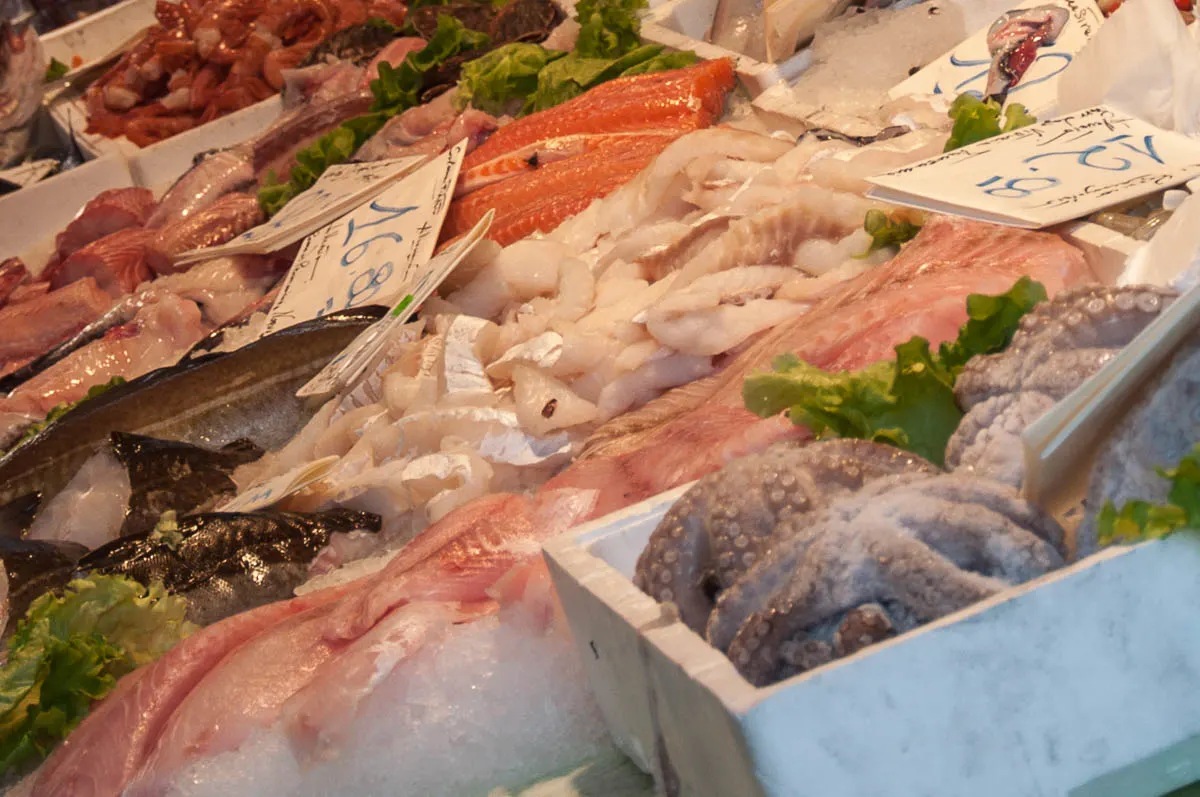
Hugged by the sparkling Adriatic Sea, Veneto is the right place to feed your seafood obsession. And to experience with many different types of seafood if you are new to its delights.
Daily fish markets operate in several of Veneto’s cities and towns bringing fresh fish and crustaceans to the tables of the locals and the local restaurants.
Here are three of the most famous ones. Wake up early one morning and head out to explore them. You will find a wonderful variety of fish, mussels, and crabs both from the Adriatic Sea and the oceans of the world:

- Rialto Fish Market in Venice – ten centuries old, this traditional fish market is a must-see in Venice.
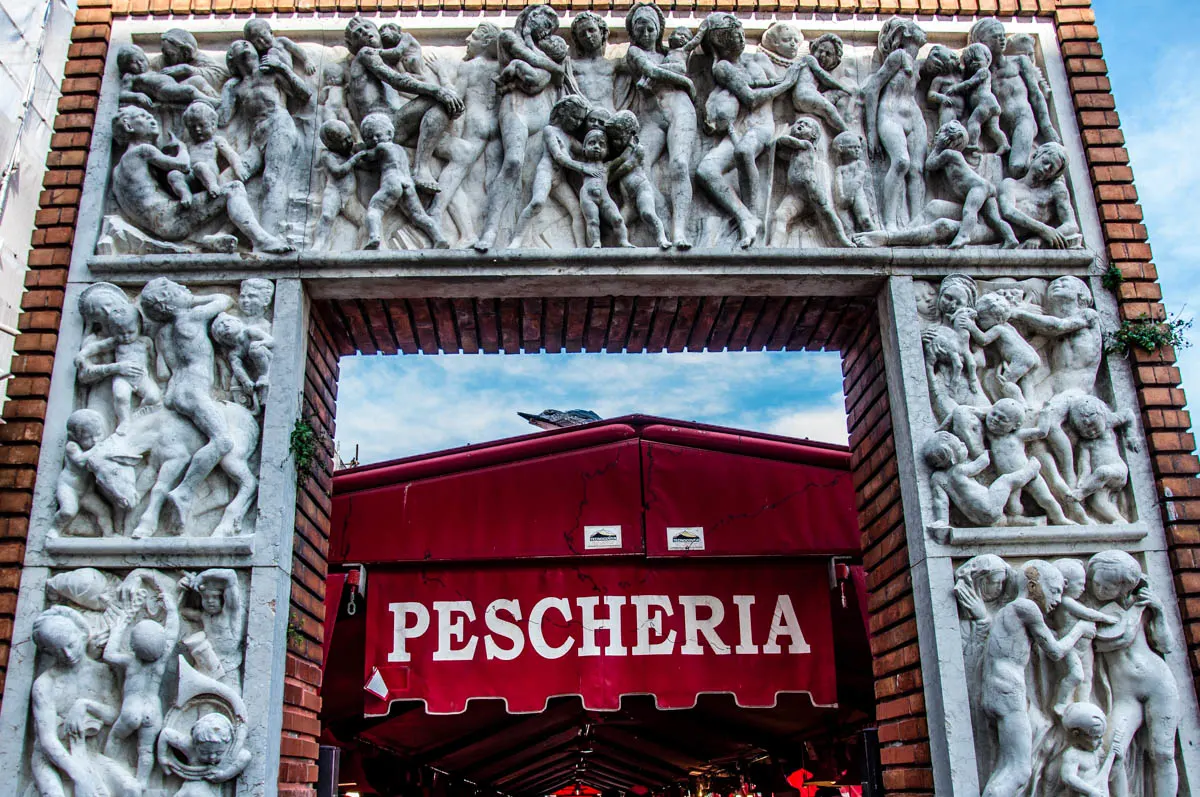
- Fish Markets in Chioggia – Italy’s second-largest wholesale fish market (called Mercato Ittico) and a lively retail fish market (called Pescheria) operate in the town of Chioggia on the southern end of the Venetian lagoon. Chioggia is one of the biggest and oldest fishing ports in Italy and has the largest number of fishing boats in the country.
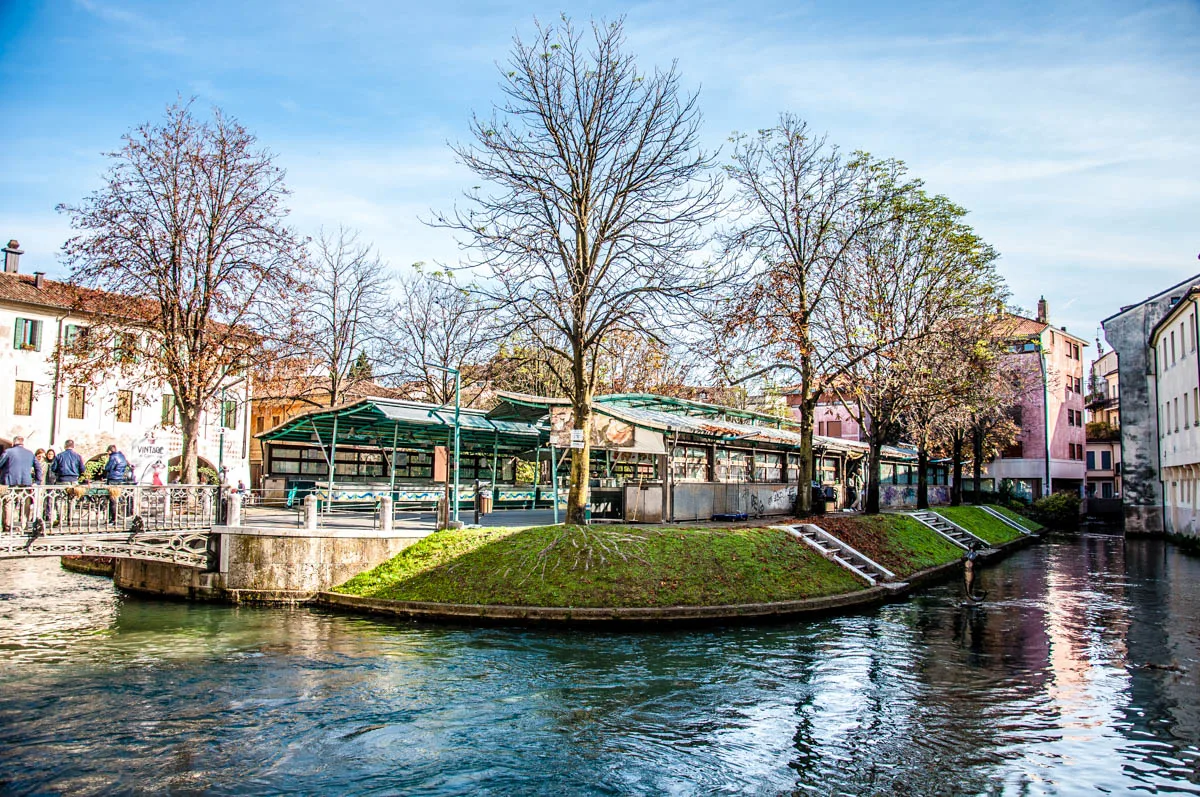
- Isola della Pescheria in Treviso – nestled on an island surrounded by the river Cagnan, this fish market is a great place to visit to feel Treviso’s vibe and to admire the surrounding beautiful buildings.
To make your adventure with seafood in the Veneto even easier, here are a couple of recommendations for fish shops and seafood restaurants:

- Vicenza – for the catch of the day head to:
- Sarde Inn – a huge selection of fresh fish and seafood dishes. Advice is gladly given about how to prepare a certain fish or crustacean. As you pass by, you can also look right into their kitchen and see their cooks busy preparing seafood dishes and salads.
- La Pescaria da Claudio – a very popular seafood shop in the heart of Vicenza’s historic centre. The owners also run a very nice seafood restaurant just off Piazza dei Signori in Vicenza. It’s called La Bottega and there you can taste bite-sized portions of many typical for the area seafood dishes.
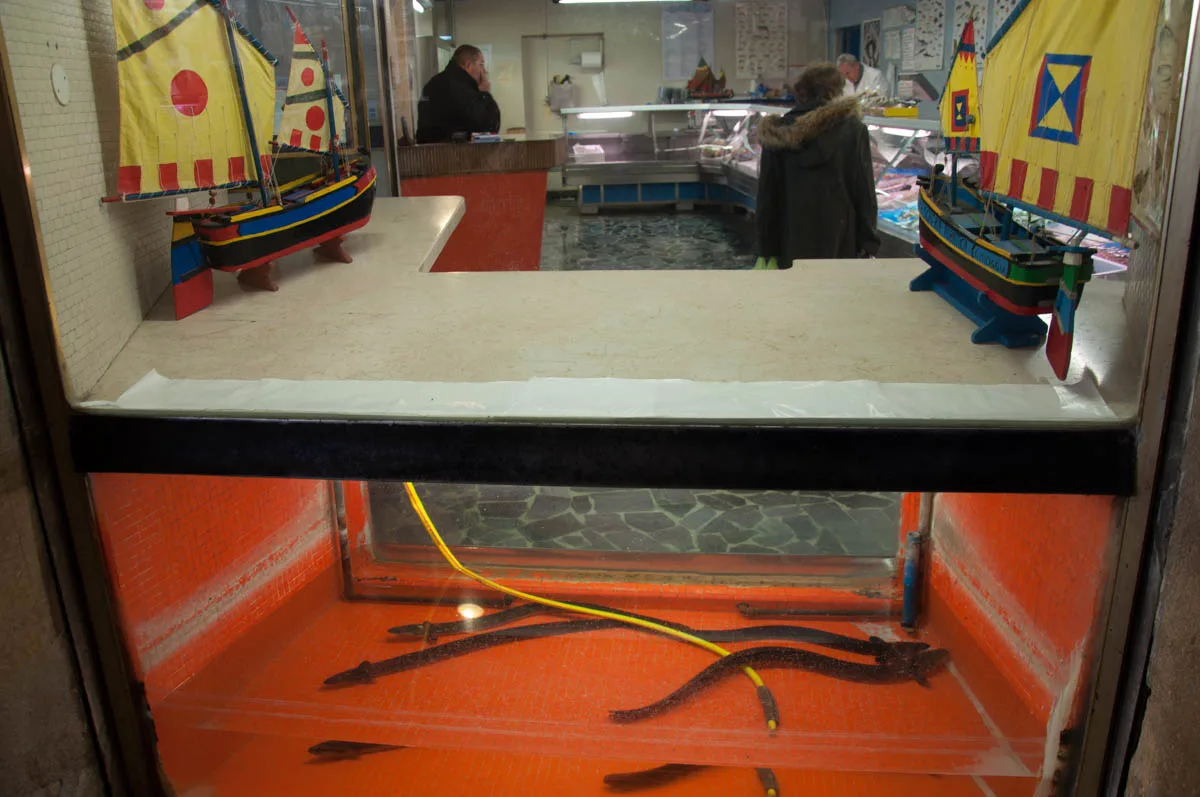
- Padua – you will find several fish shops and stalls selling seafood dishes (sepia carpaccio, anyone?) in Sotto Il Salone – the covered market on the ground floor of Palazzo della Ragione in the city’s centre.
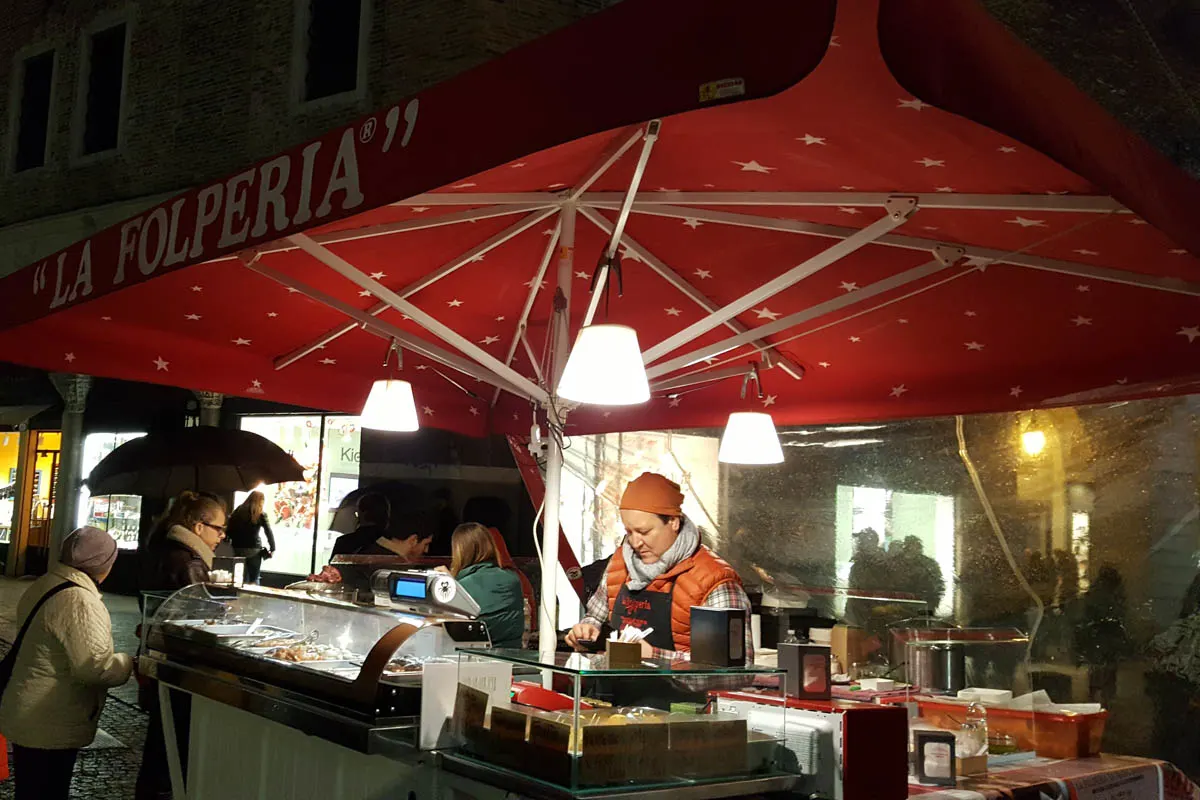
In the evenings, don’t miss the red canopy of La Folperia – Padua’s most famous food stall which serves exquisitely prepared seafood and specialises in octopus.
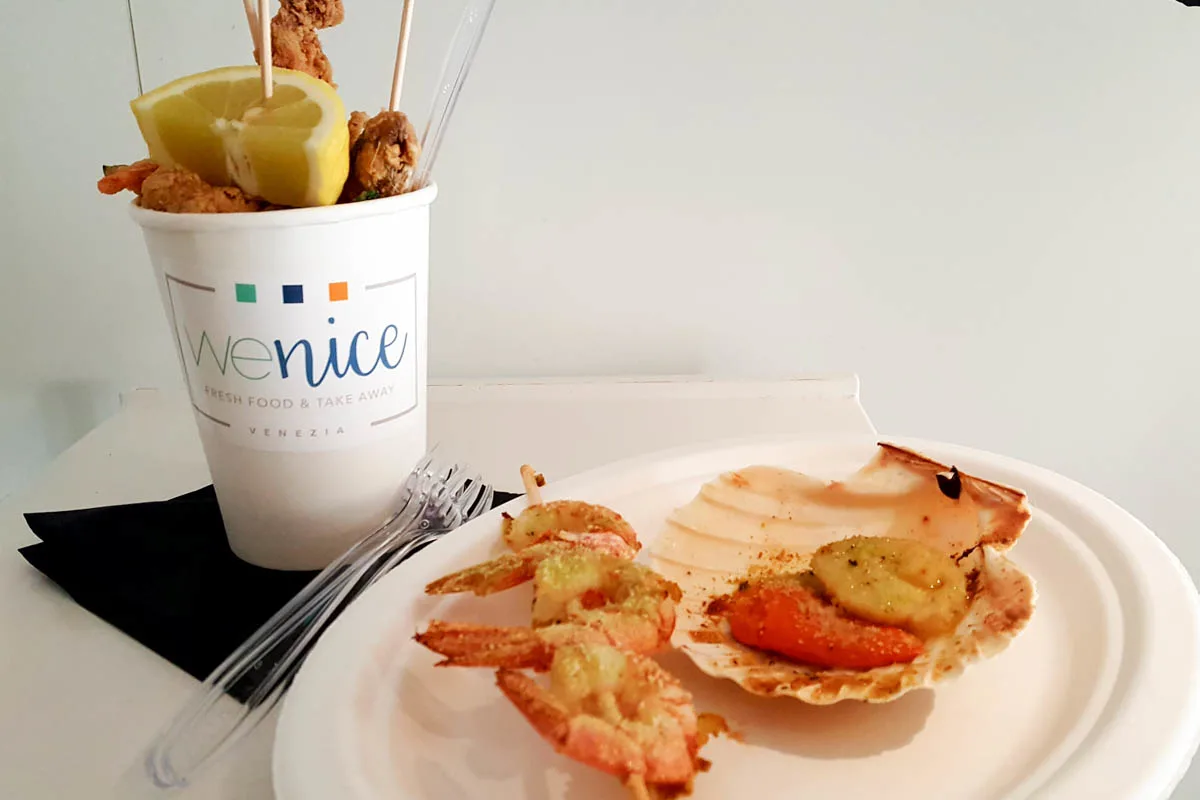
- Venice – there are many seafood restaurants in Venice. If you are looking for freshly prepared and inexpensive local seafood dishes, pop into WeNice right next to Rialto Fish Market. Don’t miss the traditional fritto misto – a lightly floured seafood mix which is fried in boiling hot oil and served with thick lemon wedges and, traditionally, polenta.
Veneto is a perfect place to experiment with seafood and taste as many different types of fish and crustaceans as you can. This is a great adventure for a foodie or anyone who wants to experiment with food and discover new tastes and flavours to fall in love with.
How to do this adventure if you are not in the Veneto, Italy?
Very easy! Head to your nearest seafood shop (the seafood counter in your nearest supermarket is a good start) and buy something you have never tried before. Prawns or mussels, swordfish or something that you have always wanted to try but you never felt brave enough. It’s an adventure, you know! And culinary adventures tend to be the best ones.
More information:
- Exploring Venice: Rialto Fish Market
- Point 3 in 10 Reasons to Visit Chioggia on Italy’s Adriatic Coast
- Padua’s 800 Years Old Market
6. Delve into Modern and Contemporary Art
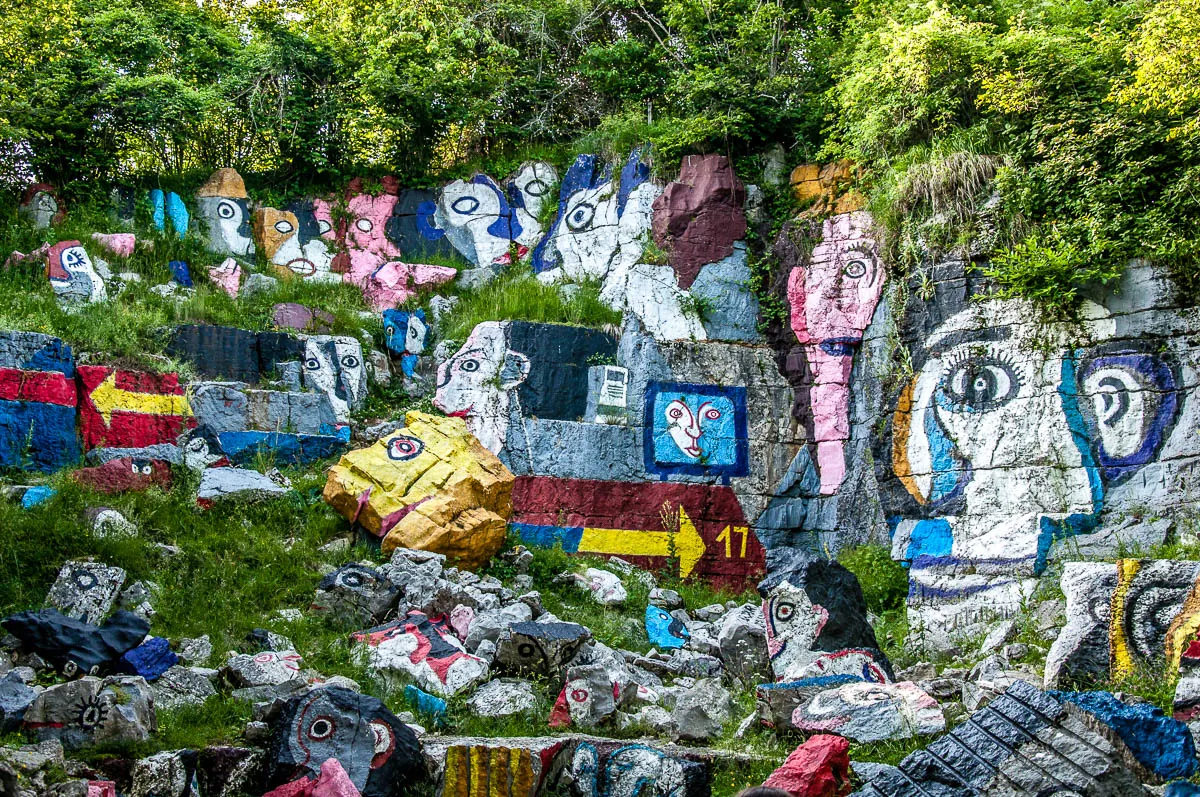
While the Veneto holds many Gothic and Renaissance masterpieces, it also has a thriving modern and contemporary art scene.
So, if you have had your fill of centuries-old altarpieces and monumental paintings on religious themes, go on an adventure to discover some of Veneto’s best spots for modern and contemporary art. Even if you think that they are not quite your cup of tea, you may find yourself elated by the discovery of shapes and colours which upturn the cannons of traditional art on their head.
Here are some of the best starting points to get in touch with modern and contemporary art in the Veneto, Northern Italy:

- Cave di Rubbio – these are four abandoned limestone quarries that have been turned into an open-air art installation by the artist Tony Zarpellon. The project took him almost three decades.
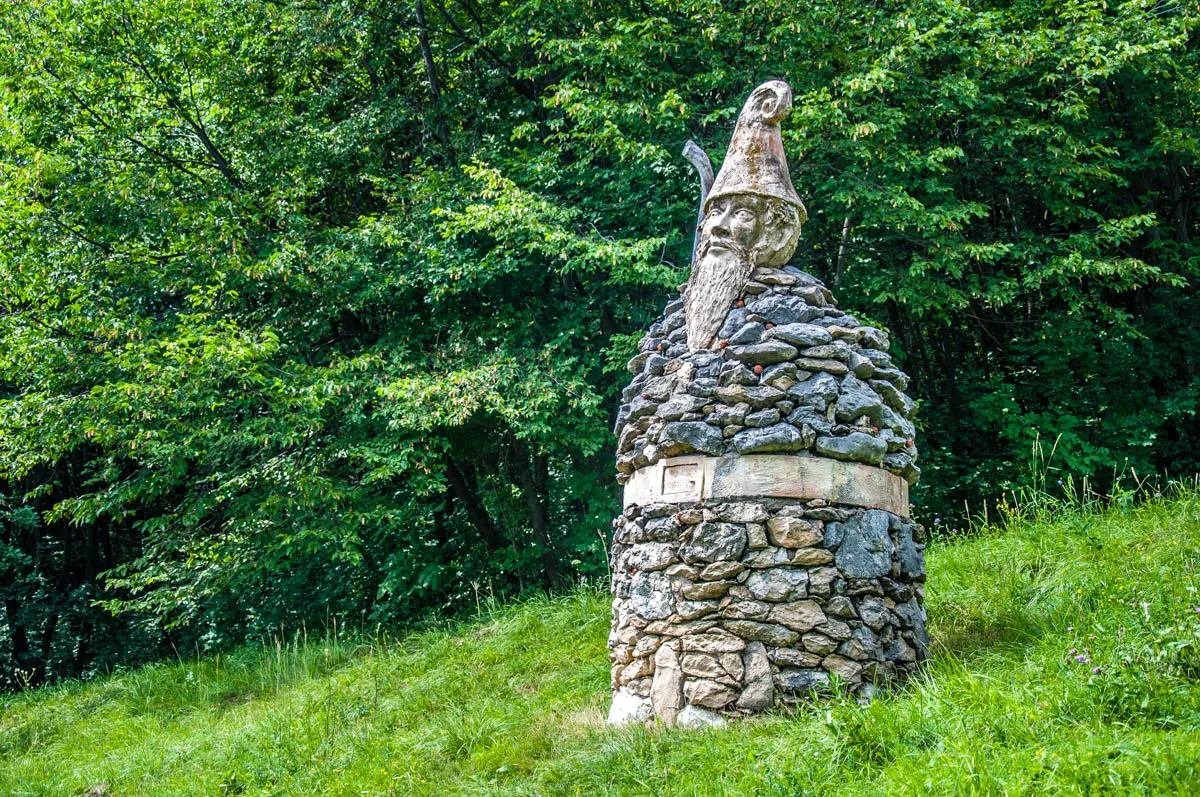
- Sojo’s Art and Nature Park – a park populated by 80 works of contemporary art. It’s nestled in the mountains above Lusiana (about 33 km from Vicenza). You hike through the forest and suddenly you spot hiding in the trees or looming in front of you pieces of art which veer between the whimsical and the wonderful. A great place for people with imagination who love art, nature, and fabulous views.
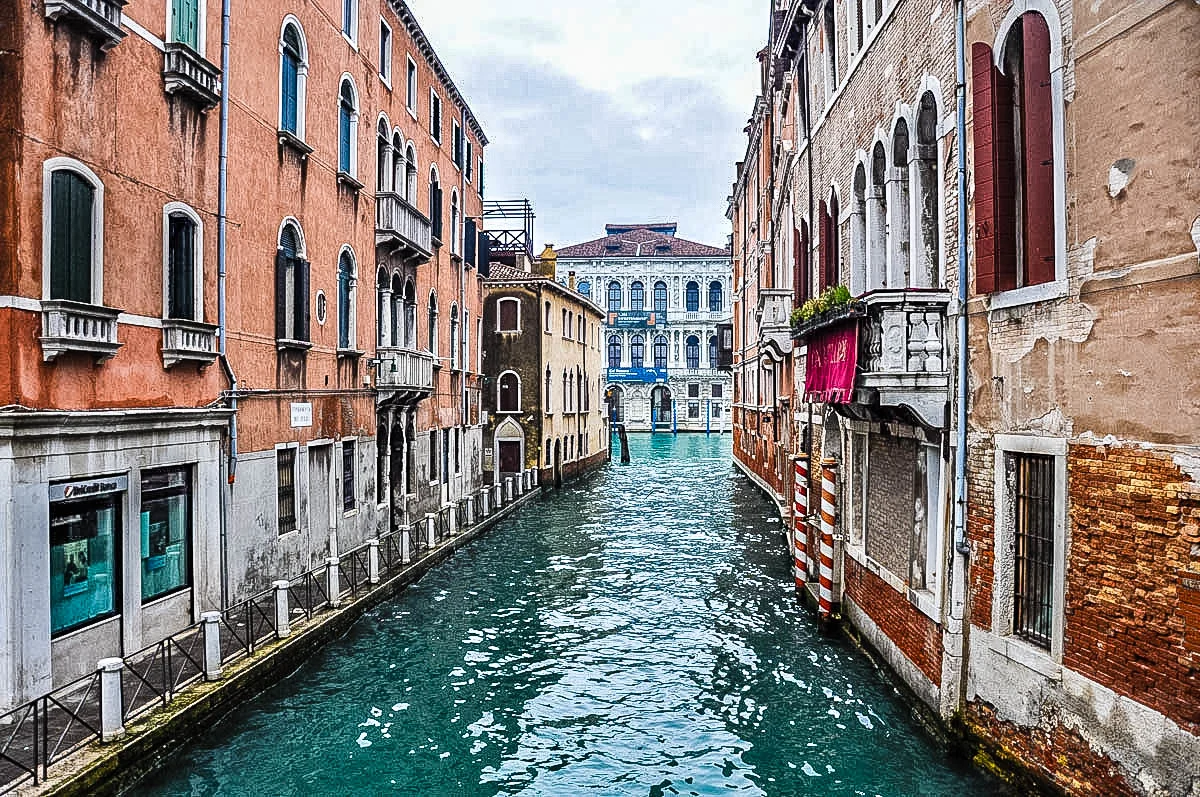
- Ca’ Pesaro International Gallery of Modern Art – a beautiful place to discover in Venice where masterpieces of modern art live in the enormous rooms of a Venetian palace. My favourite piece there is a work of art by the artist Christo. N.B. Please, note that currently the gallery is closed due to the exceptionally high tides in Venice. Still, I have included it here as it is a must-see place for modern art in the Veneto. While it’s closed, you can still explore its collections online.

- The Peggy Guggenheim Collection – one of Italy’s most important museums showcasing European and American art from the first half of the 20th century. Plus, it has a sculpture garden and commands some really stunning views over the Grand Canal in Venice.
- Museo Luigi Bailo – an exquisite museum of modern art in the city of Treviso. Housed in a building which is an architectural gem and in former lives used to be a convent and then a factory, the museum showcases hundreds of works of art. Among them are 130 works by Arturo Martini – an artist native to Treviso and recognised as one of the greatest Italian sculptors of the 20th century.
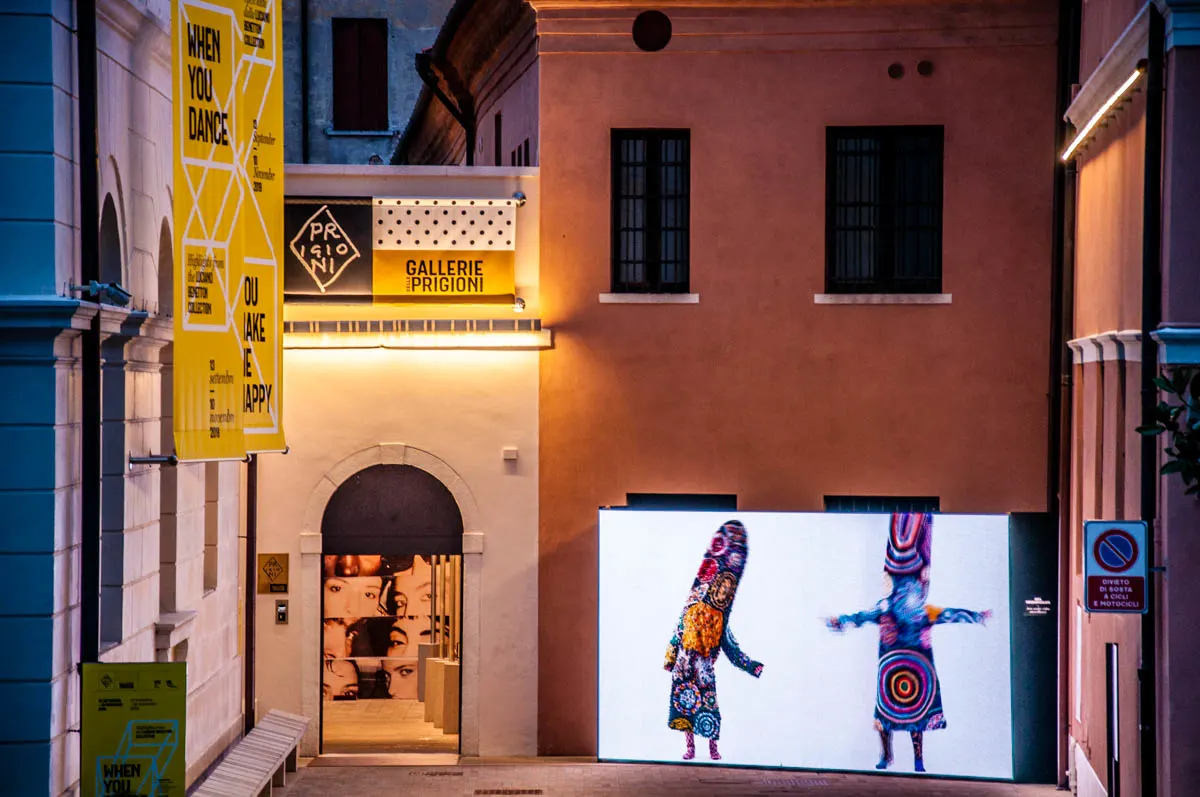
- Gallerie delle Prigioni – when in Treviso, pop into this former prison to experience one of Italy’s foremost art spaces dedicated to contemporary culture. Gallerie delle Prigioni organises temporary exhibitions, new art commissions, and educational programmes.
Seeing Veneto through the prism of modern and contemporary art will give you a whole new angle of appreciation for this beautiful and creative land. While traditionally we think of Italy in the limits of traditional art, in the Veneto you will find a very fertile ground for modern expressions and contemporary artistic points of view. Discovering them and savouring them is a great unmissable adventure here.
How to do this adventure if you are not in the Veneto, Italy?
There are two options here.
One is to browse from the comfort of your home the websites of the above highly recommended hubs of modern and contemporary art in the Veneto, Northern Italy. This way you can explore their collections and learn more about the artists behind each masterpiece.
The other way is to head to your nearest museum or sight dedicated to modern and contemporary art. Who knows?! You could simply fall in love with an artist or a work of art you had never seen before. And this is the greatest adventure of them all!
More information:
7. Be on Top of the World
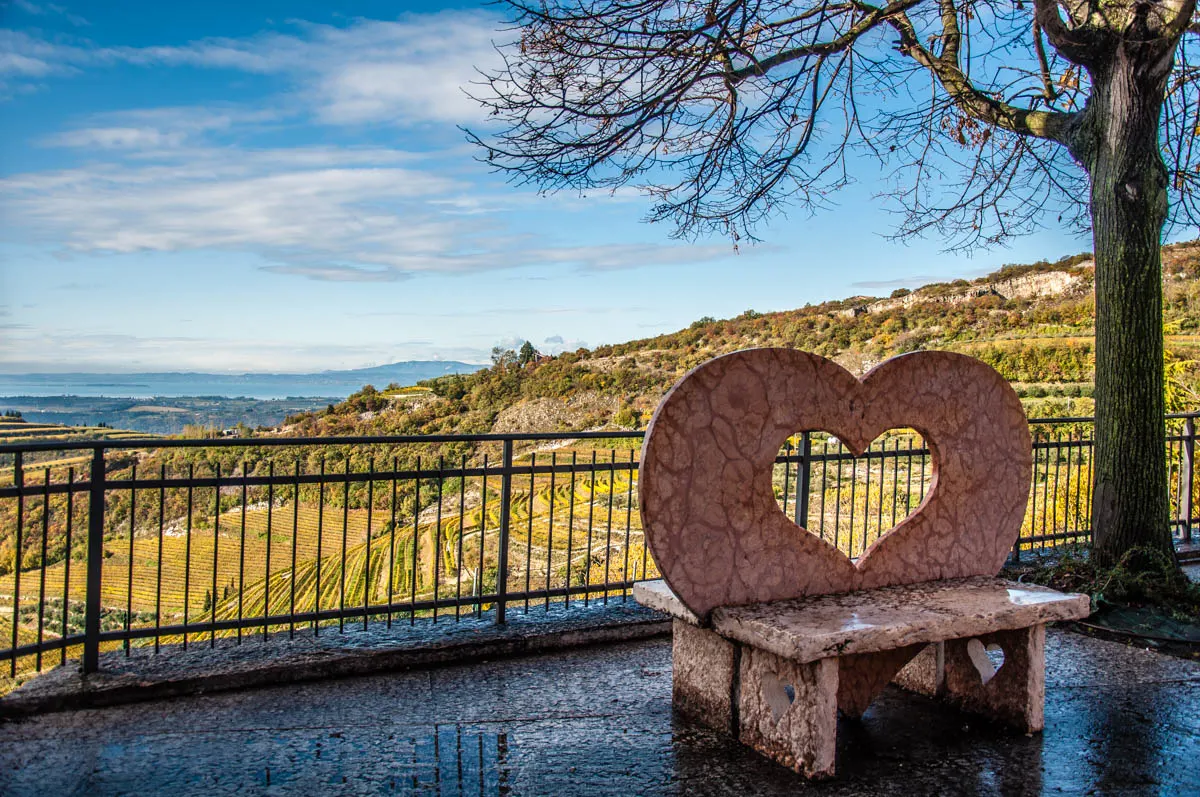
If you need a change of perspective, look at things from above. A bird’s-eye view of this world helps us see things for what they are and makes it easy to differentiate between small insignificant niggles and what really matters in life.
A good way to reach the top of your inner world is to conquer some of Veneto‘s high spots. Many of them are easy to reach by foot and/or by car.
Here are four of the easiest to reach top locations in the Veneto for stunning views and, hopefully, inner clarity. Give them a try:
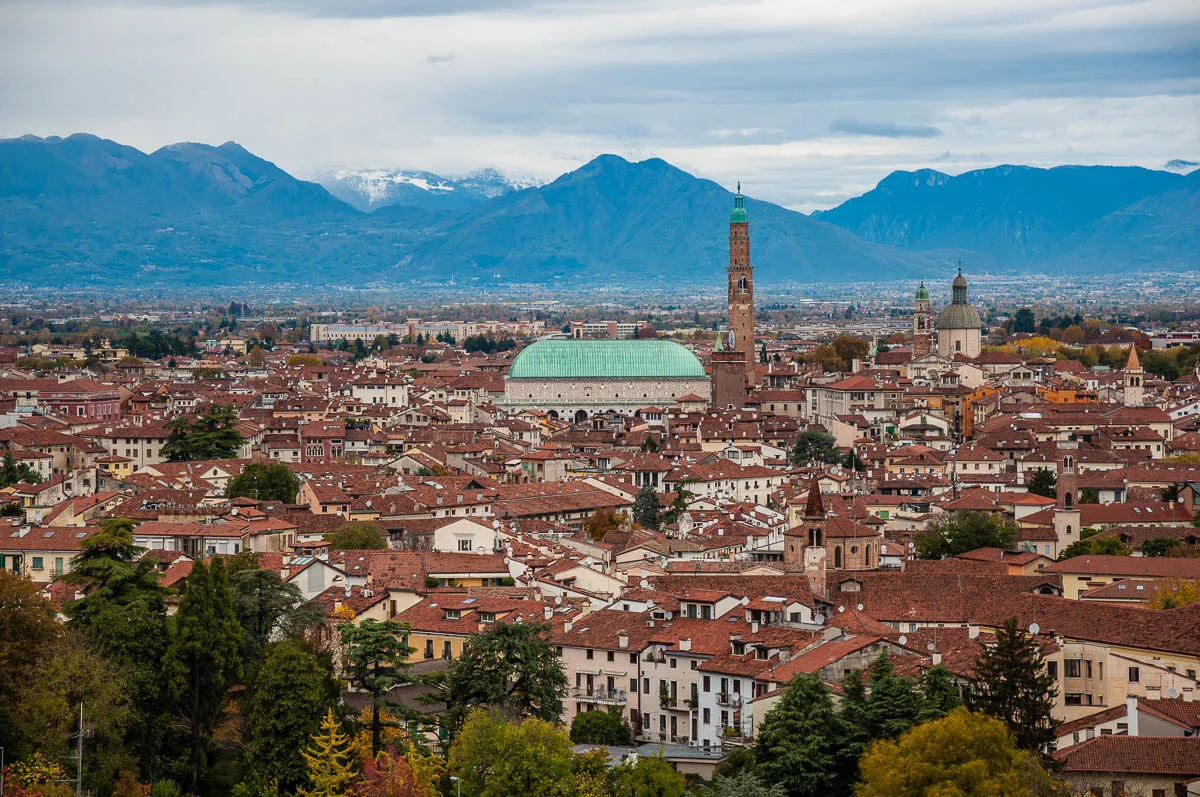
- Piazzalle della Vittoria on Monte Berico – Piazzalle della Vittoria is a terrace-shaped square on top of Monte Berico – a small hill overlooking Vicenza. You can easily get there on foot and/or by car. The views of the city with its Palladian landmarks is gorgeous. On a clear day you can see far all the way to the snow-capped mountains. Check point 19 in this list for detailed instructions on how to reach Monte Berico on foot from Vicenza’s historic centre.
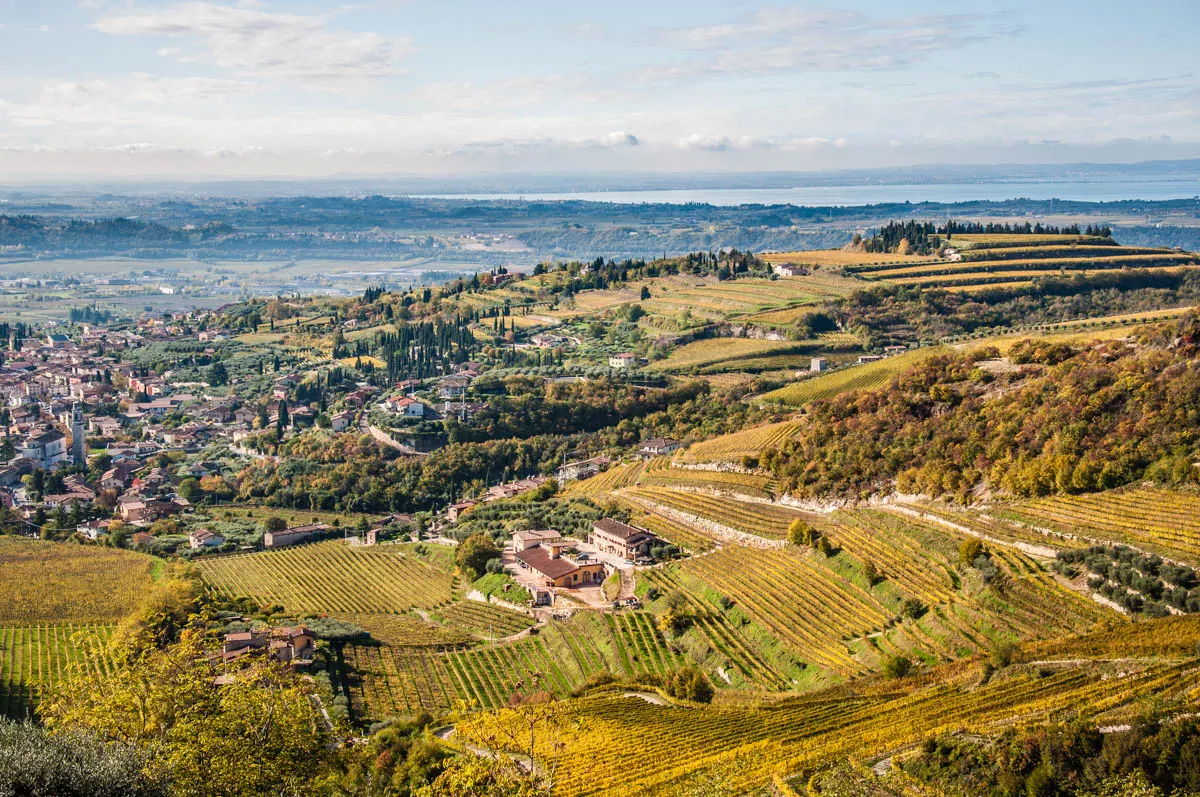
- San Giorgio di Valpolicella – you will find this charming village in the Lessinia Hills on the outskirts of Verona. Its stone houses are built on top of a hill which affords you stunning views over terraced vineyards, the Veneto’s plains, and the nearby Lago di Garda – Italy’s largest lake. You can easily reach San Giorgio di Valpolicella by car. The views from the panoramic terrace which also doubles as the village’s square are simply beautiful.
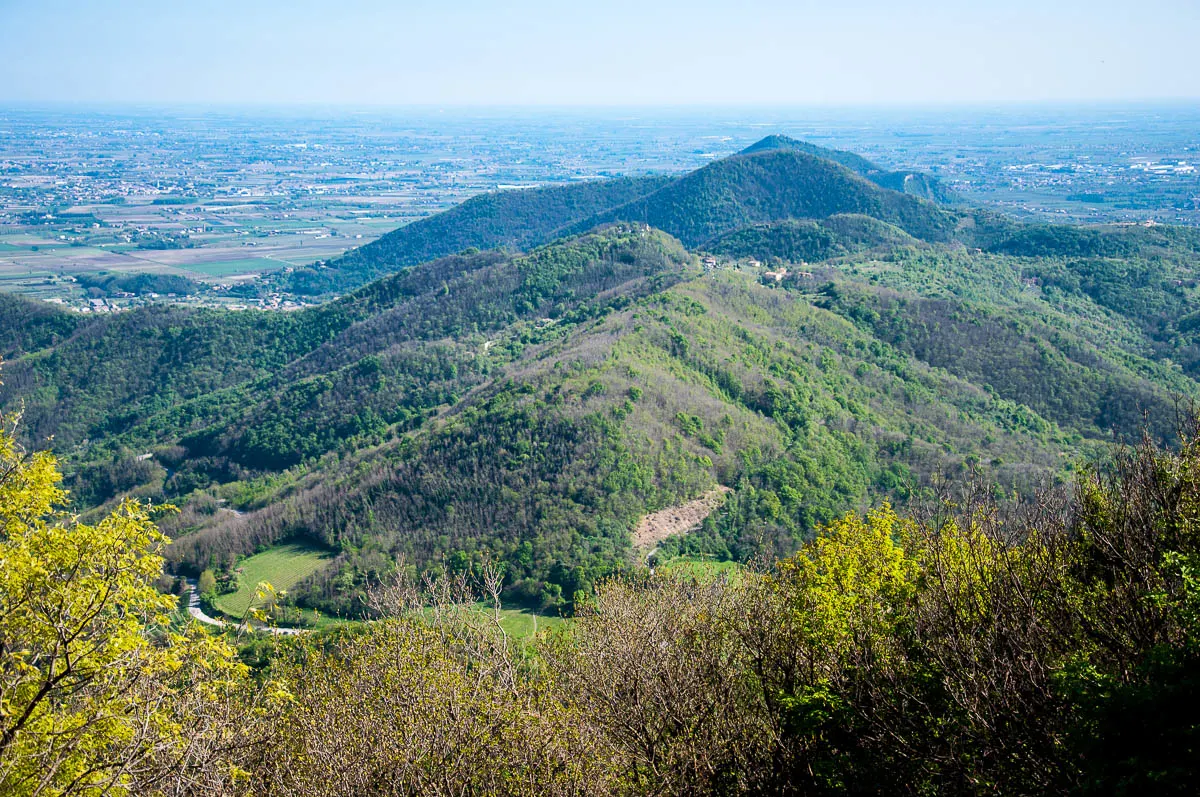
- Monte Venda – this is the highest peak of the Euganean Hills (a volcanic group near Padua). On top of Monte Venda, you will find the ruins of a medieval monastery. A spirit-lifting panorama over the surrounding hills and Veneto’s plains opens up from up there.
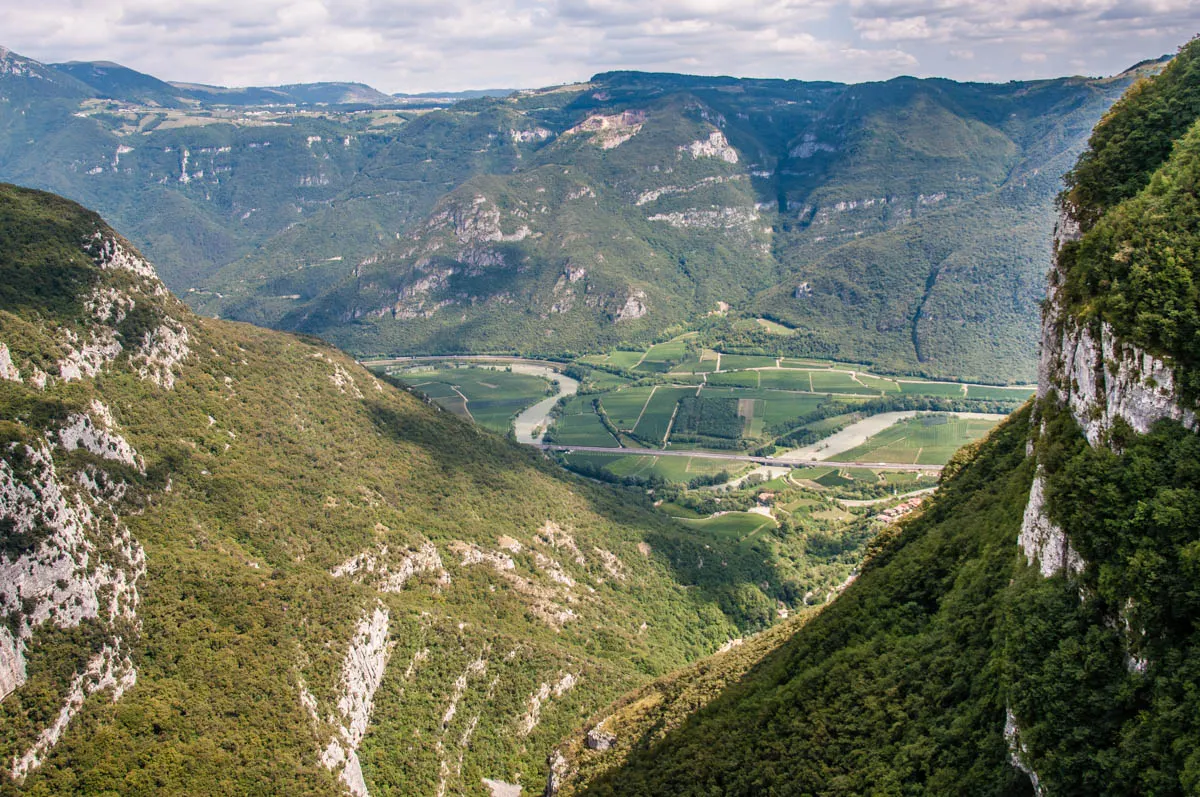
- Spiazzi – the road to this small village in the province of Verona will give you a chance to enjoy stunning vistas over Lake Garda. Once in Spiazzi, head down to the Sanctuary of Madonna della Corona – a stunning church set against a rocky outcrop. Enjoy the soul-inspiring views over the nearby mountains and the deep valley of the river Adige down bellow.
Seeing the world from above is an exhilarating adventure. Realising that this is what birds see on a daily basis will make you feel free as a bird inside. This is a fabulous feeling to nurture and cherish so as to face up to life with greater conviction and strength each day.
How to do this adventure if you are not in the Veneto, Italy?
It’s not difficult at all! You just need to find a high point near where you live which can be safely visited either on foot or by car. Then, get up there and enjoy seeing the world from the top.
More information:
- 3 Ideas for a Great Day Out in the Euganean Hills in Northern Italy
- Sanctuary of Madonna della Corona – Visiting Italy’s Church Suspended Between Heaven and Earth
- 20 Family-Friendly Walks and Hikes Up to an Hour and a Half from Vicenza – First Part
- 20 Family-Friendly Walks and Hikes Up to an Hour and a Half from Vicenza – Second Part
8. Go on a Castle Crawl
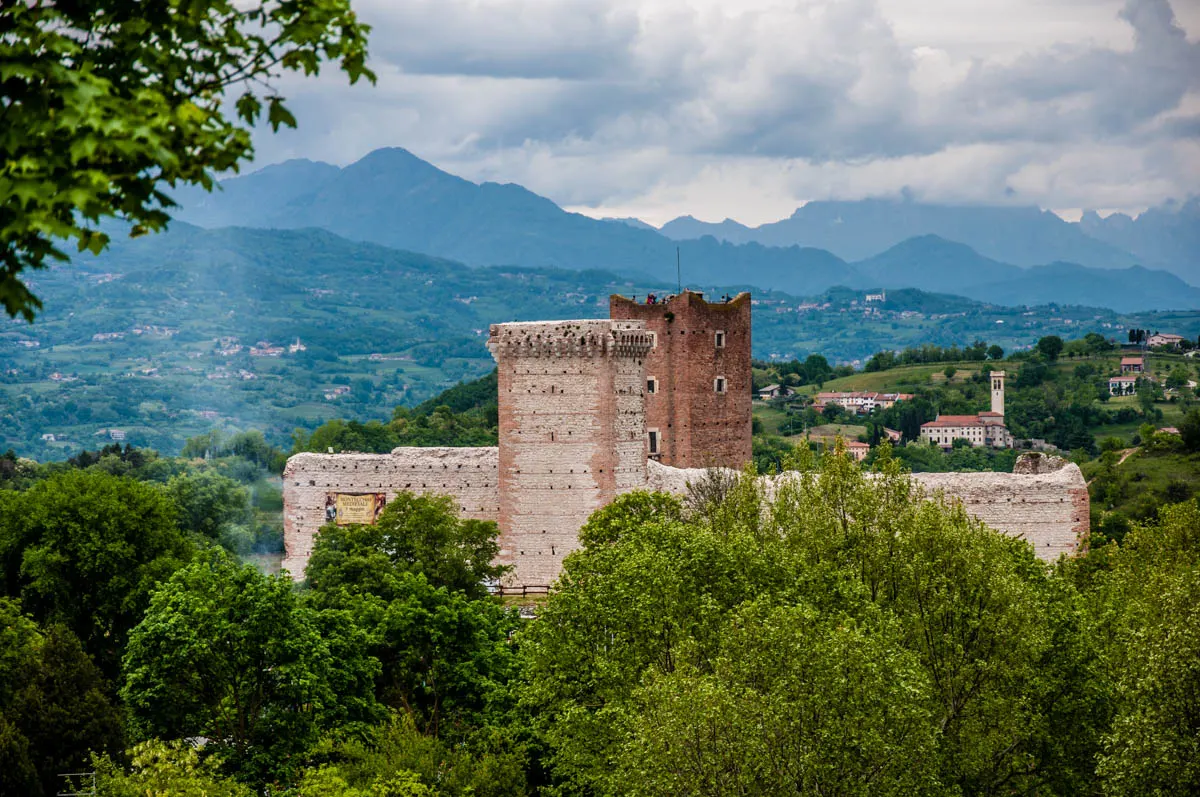
Veneto is a land dotted with castles. Each of them – no matter if in ruins or still standing whole – is a door to a captivating period of history.
Trying to visit as many castles in the Veneto is a great adventure. On one hand, you will learn lots of local stories about tyrannic medieval despots (hello there, Ezzelino da Romano!) and powerful dynasties (like the Scaligers from Verona). On the other hand, each castle will reveal to you splendid views and gorgeous corners. So, what are you waiting for?
To help you start on your castle crawl, here are some of the most picturesque and interesting castles to see in the Veneto:
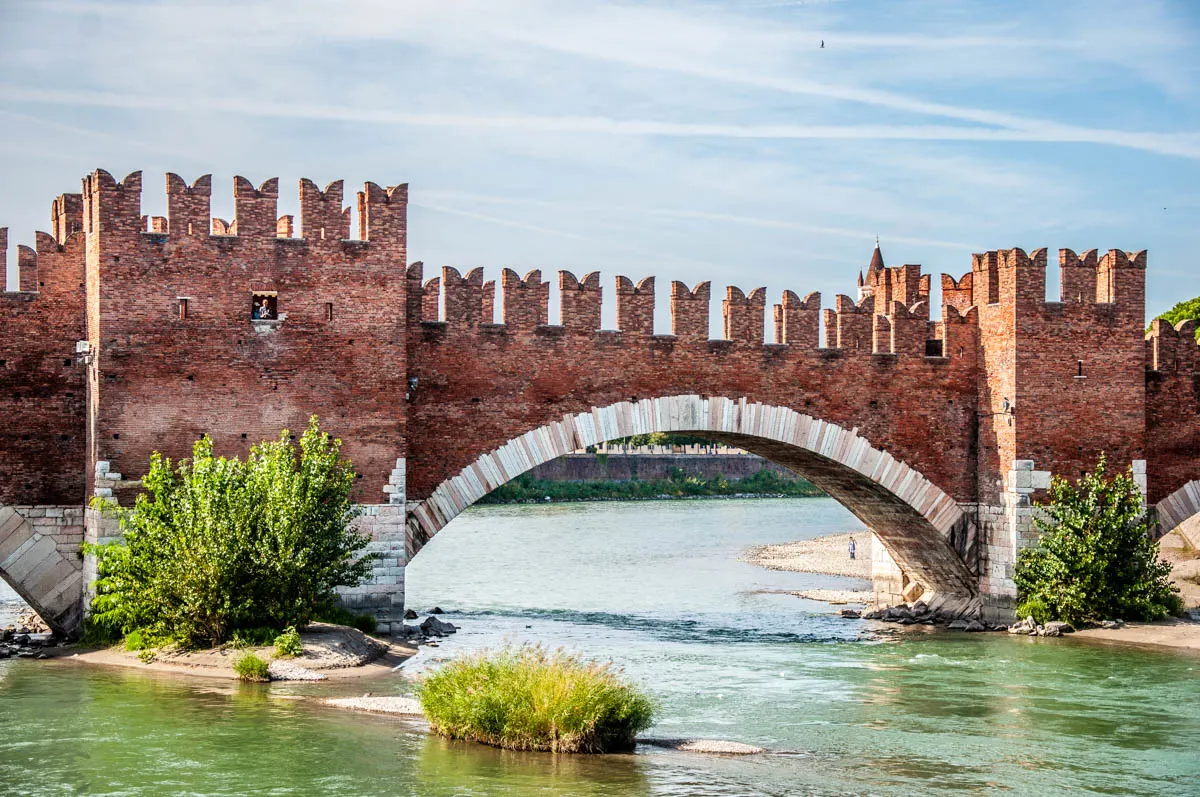
- Castelvecchio in Verona – Castelvecchio (meaning the Old Castle) is one of the most precious gems in Verona’s crown. It is a mighty castle made entirely of red bricks on the shores of the river Adige. Its Gothic crenelated walls and robust square turrets take you right back to the time when the ruthless Scaliger family ruled over the city. Nowadays, Castelvecchio is a museum. Hundreds of sculptures, paintings, frescoes, ceramics, weapons, and pieces of jewellery are displayed there. Don’t miss it when you are in Verona!
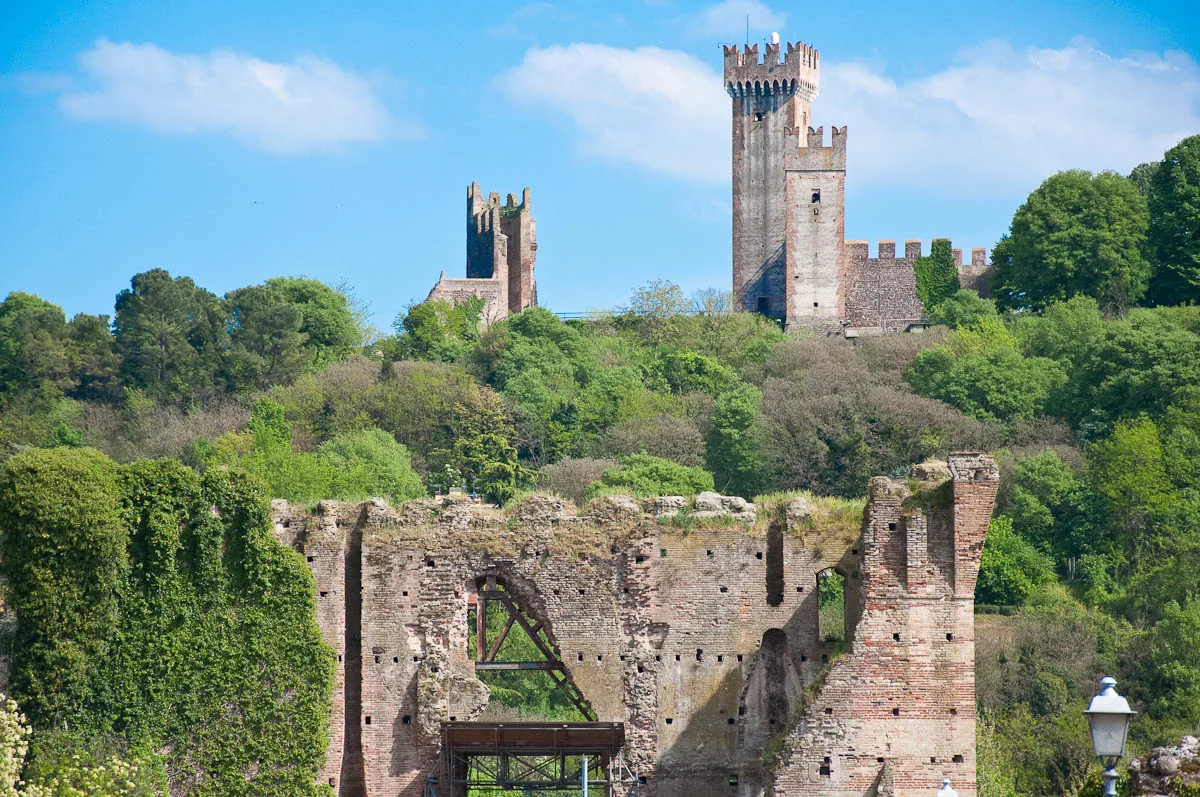
- Scaliger Castle in Valeggio sul Mincio – a gorgeous ruined castle on top of a small hill overlooking the town of Valeggio sul Mincio and the nearby river Mincio. A 14th-century fortified bridge spans the river and at one point was connected to the hilltop castle by two defensive walls. Nearby is Parco Giardino Sigurta – one of Italy’s most beautiful and largest parks.
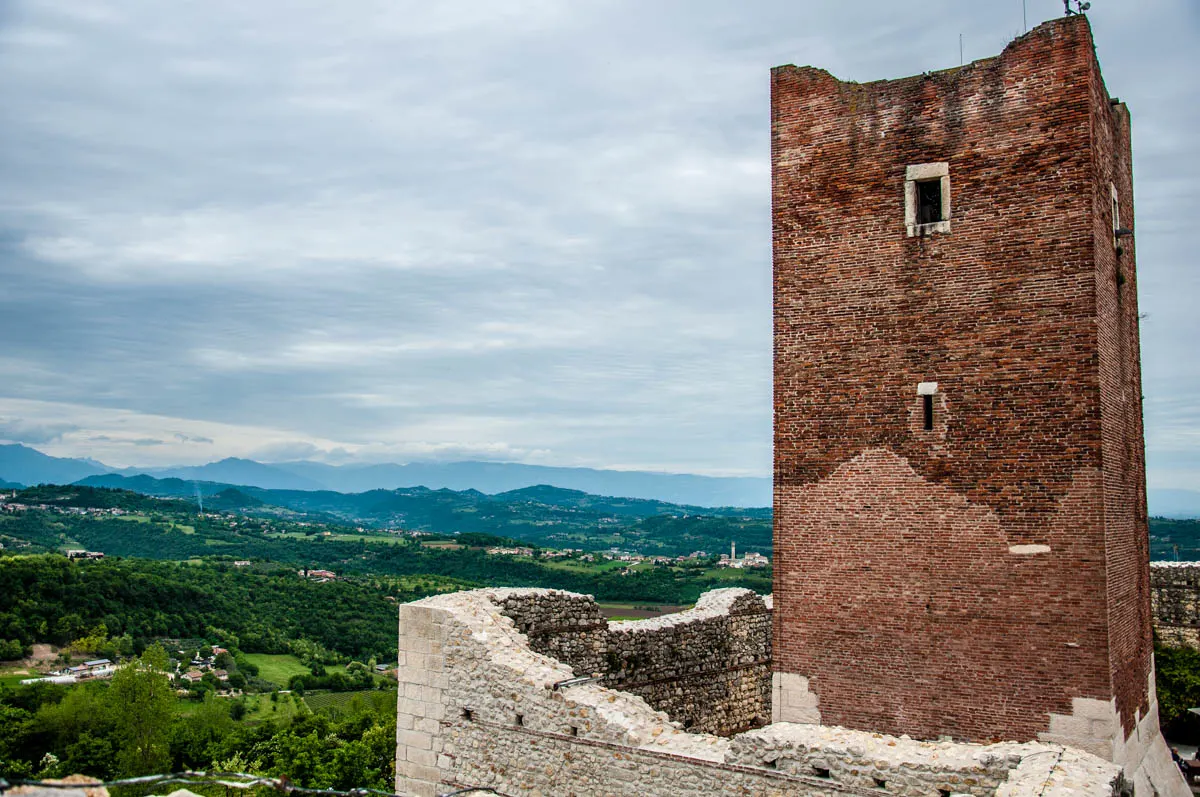
- Romeo’s and Juliet’s Castles in Montecchio Maggiore – two facing each other castles which, according to the local legend, inspired the original story of Romeo and Juliet written by Luigi da Porto – a nobleman from Vicenza.
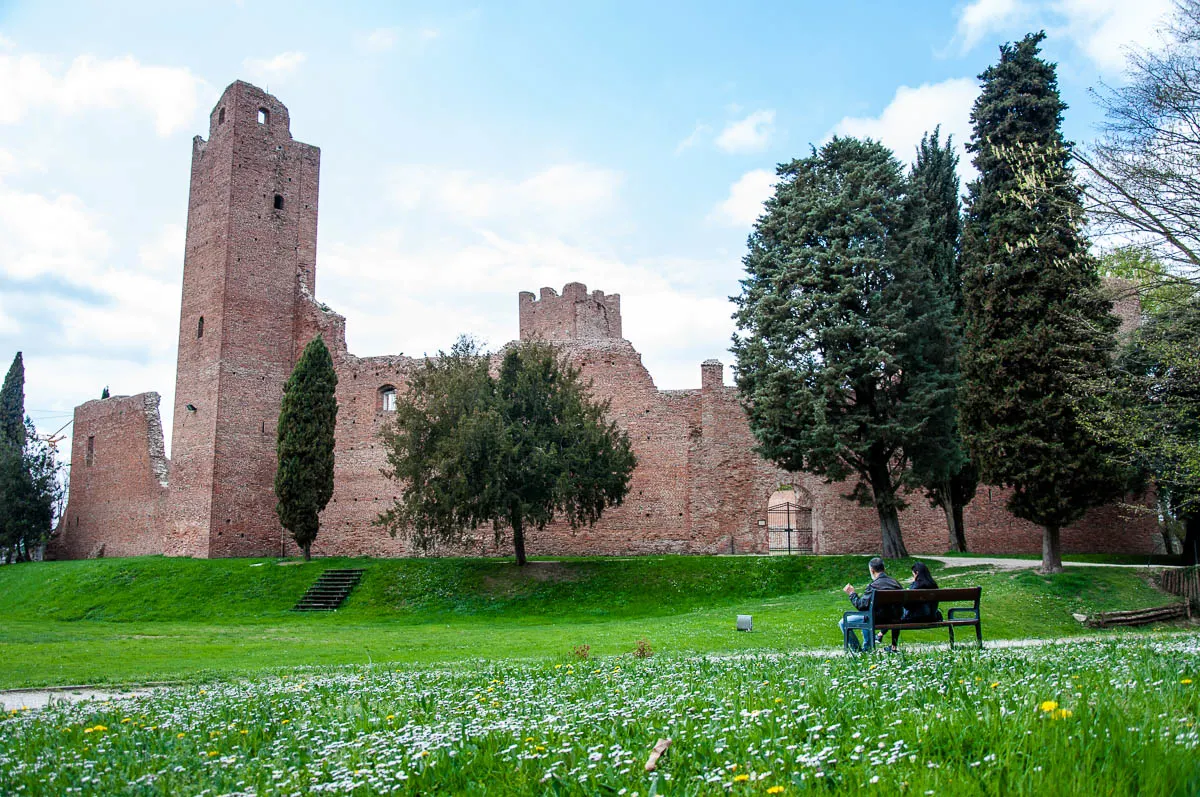
- La Rocca dei Tempesta in Noale – a 12th-century stronghold surrounded by moats and green meadows. A very picturesque sight to explore on a visit to the medieval walled town of Noale in the Province of Venice.

- Scaliger Castle in Torri del Benaco – a mighty castle with crenellated walls on the shores of Lake Garda. Inside, among many other things, you will find the limonara. This is a winter garden with huge lemon trees which was created in 1760 and is one of the very few of its type surviving to this day.
Castles are like little time capsules. Visiting one is like being quickly transported to bygone times of battles, land grabs, and feudal lords. While nowadays we romanticise castles quite a lot, visiting one or many helps to learn and appreciate better the challenges that people experienced in those times and the mighty defensive strategies that were developed to ensure security and protection.
How to do this adventure if you are not in the Veneto, Italy?
Are there any castles or forts where you live? Head out to explore them! Step through their door and discover their past. Being at the place where battles were fought and important decisions for whole cities and nations were taken, always brings you closer to history and makes you understand human behaviour better.
More information:
- Castelvecchio – A Must-See in Verona
- Point 20 in 20 Best Things to Do in Verona, Italy in One Day – The Full Itinerary
- 20 Family-Friendly Walks and Hikes Up to an Hour and a Half from Vicenza – First Part
- 20 Family-Friendly Walks and Hikes Up to an Hour and a Half from Vicenza – Second Part
- Montecchio Maggiore, Italy – 4 Hidden Gems You Need to See in the Real Town of Romeo and Juliet
- Noale – A Relaxing Sunday in the Bosom of Veneto
- Best 12 Towns to Visit Around Lago di Garda – Italy’s Largest Lake
9. Follow in the Steps of Veneto’s Most Noteworthy Daughters and Sons

Having role models can be really inspiring when you are not quite sure what to do with your life and when you are on the verge of losing faith in your own abilities. It’s quite helpful then that the Veneto is a land where many notable people were born and/or reached their creative pinnacle.
It’s always such a great experience to visit the places where worldwide famous artists, writers, musicians, and historians lived and worked. It’s a chance to get in touch with their legacy and with their humanity, too.
So, on this adventure try to follow in the steps of Veneto’s most noteworthy daughters and sons and discover as much as you can about their achievements and lives, as well as the places which they marked as their own.
Here are three suggestions to get you started:
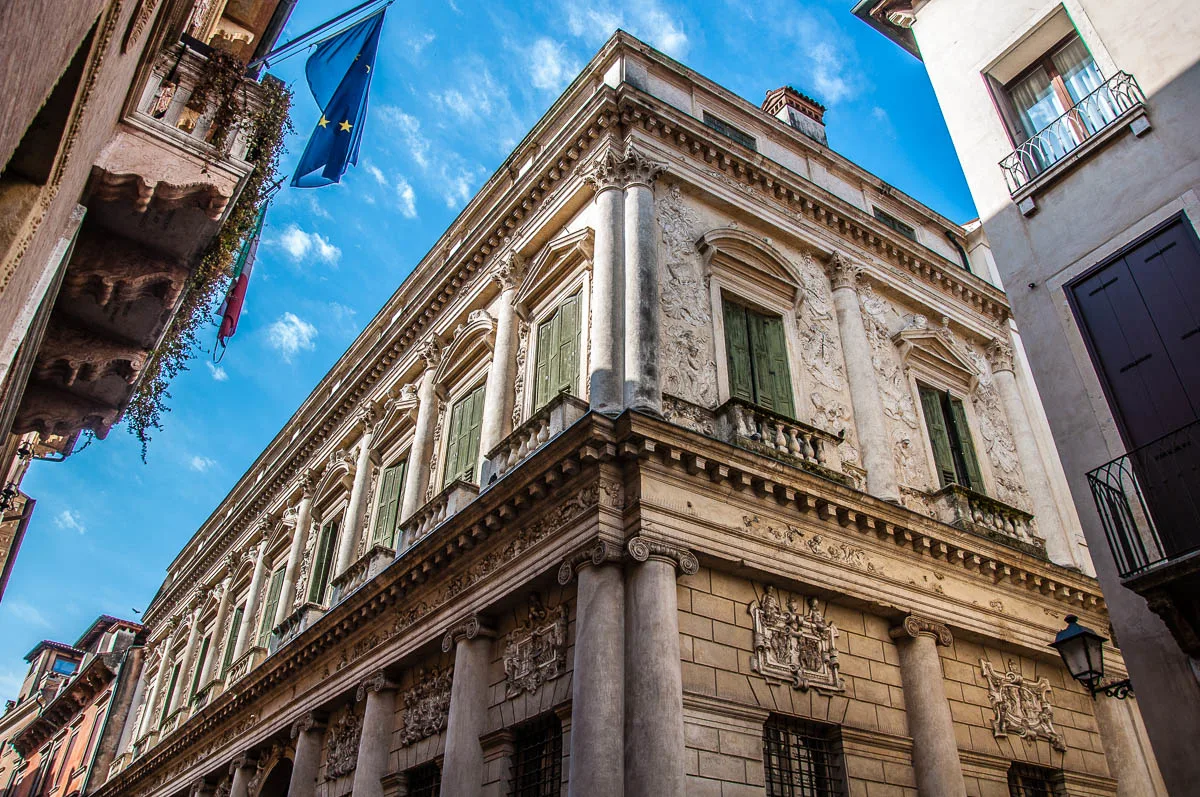
- Andrea Palladio – one of the world’s most influential architects, Palladio was born in 1508 in Padua. Throughout his life, he designed countless churches, villas, and palaces and gave rise to a style that became known as Palladian. Try to follow in his steps by seeing as many of Palladio’s buildings as you can. Vicenza is always a good start in this regard as clustered in and around the city are some of Palladio’s most famous projects. Plus, the very interesting Palladio Museum is here, too.
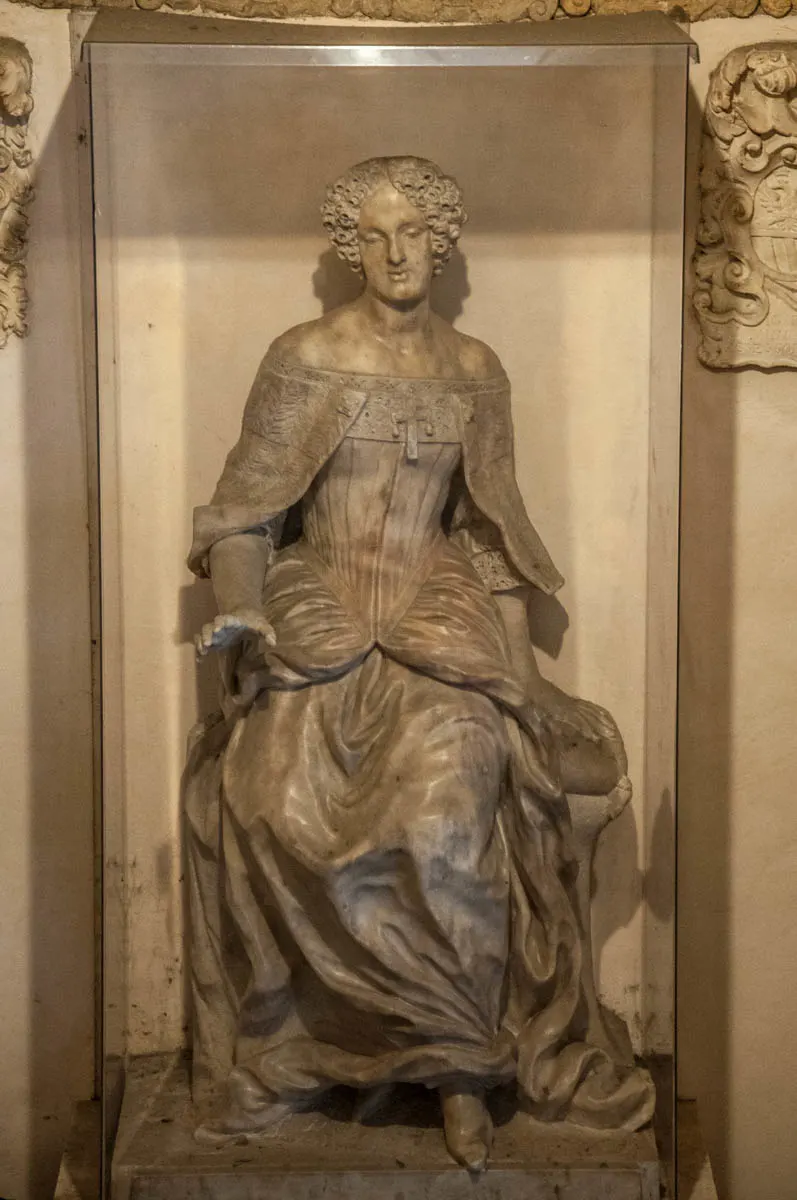
- Elena Cornaro Piscopia – Elena was the first woman in the world to receive a PhD and before that, she was one of the very first women in the world to obtain an academic degree. This happened only 341 years ago. Born in Venice, she spent most of her adult life in Padua dedicating herself to charity. Nowadays, you can see Elena’s statue at her Alma Mater – the University of Padua. She is buried in the Basilica of Santa Giustina in the city.
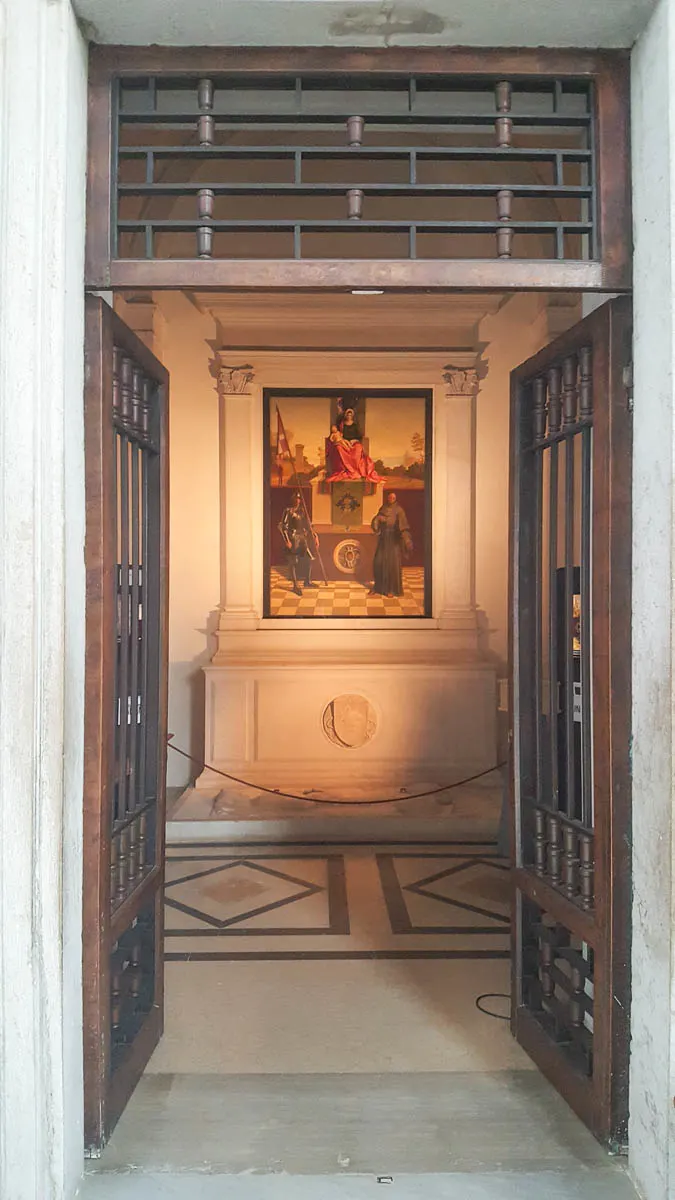
- Giorgione – an enigmatic painter who died way too young and left only a small number of paintings that can be unequivocally attributed to him. Yet, Giorgione is still one of the most feted artists of the Italian Renaissance. To follow in his steps, you can start by visiting Giorgione’s House in his home town of Castelfranco Veneto (while there, don’t miss Giorgione’s Maddona in the town’s cathedral). You can then head to Venice, to see Giorgione’s Tempest – one of the most famous (and mysterious!) paintings in the collection of the Gallerie dell Accademia. Your exploration can then take you to the medieval walled town of Montagnana where two frescoes in the town’s duomo are attributed to Giorgione.
These are only three of the most noteworthy daughters and sons of the Veneto the lives and work of whom you can get close to when here. If you have the time and the inclination though, don’t limit yourself to just three. Titian, Tintoretto, Andrea Mantegna, Antonio Vivaldi, Claudio Monteverdi and so many others have left their imprint on the Veneto in Italy. Following in their steps and learning about their achievements is a great and inspiring adventure to dedicate some of your time to.
How to do this adventure if you are not in the Veneto, Italy?
Again there are two options here:
One is to research online or at your local library about the lives and achievements of Veneto’s most noteworthy daughters and sons. There are so many books and materials about people of the stature of Giorgione, Titian, Palladio, Tintoretto and many others, that you are bound to find lots of interesting information.
Or you can research a local person of interest and then try to visit the places near you which are intrinsically connected to his or her life and work.
More information:
- Giorgione’s Madonna – A Masterpiece You Mustn’t Miss in Castelfranco Veneto
- Exploring Vicenza: Teatro Olimpico
- Three Universities in Italy You Need to Put on Your Travel Wish List Now
10. Spend Time at a Museum off the Beaten Track
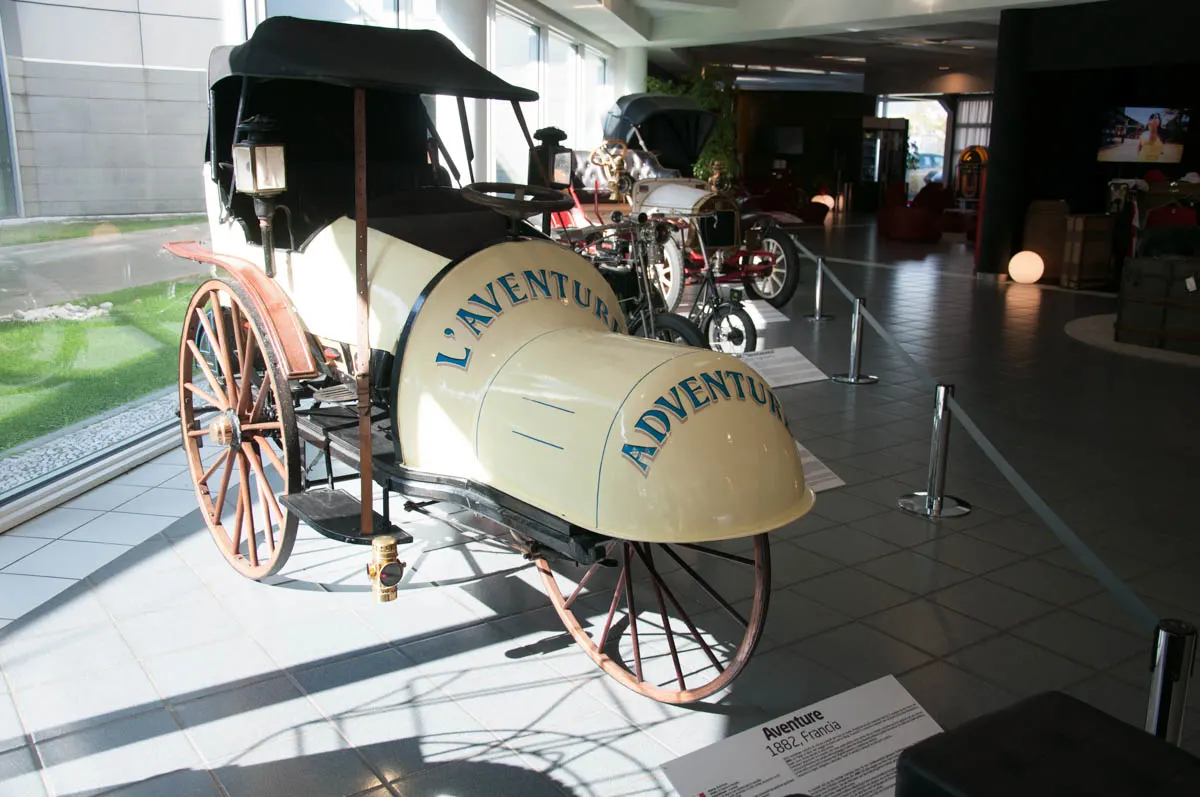
The Veneto has some of the most important museums in Italy and Europe. From the Gallerie dell’Accademia in Venice where masterpieces by the likes of Giorgione and Veronese can be admired to Castelvecchio in Verona where hundreds of paintings, sculptures, and even jewellery and period weapons are on display.
The Veneto is even richer though in smaller, specialised museums off the beaten track. A visit to them is a very enriching adventure. There you can get heaps of knowledge about a specialised subject which you may have never suspected how interesting it may be. It’s like a window being open to a hidden world.
Such experiences can be very exciting and can literally make your day. So, put some time aside to visit Veneto’s smaller museums and see what obscure pieces of information you will find there for yourself. Here are three museums to get you started:
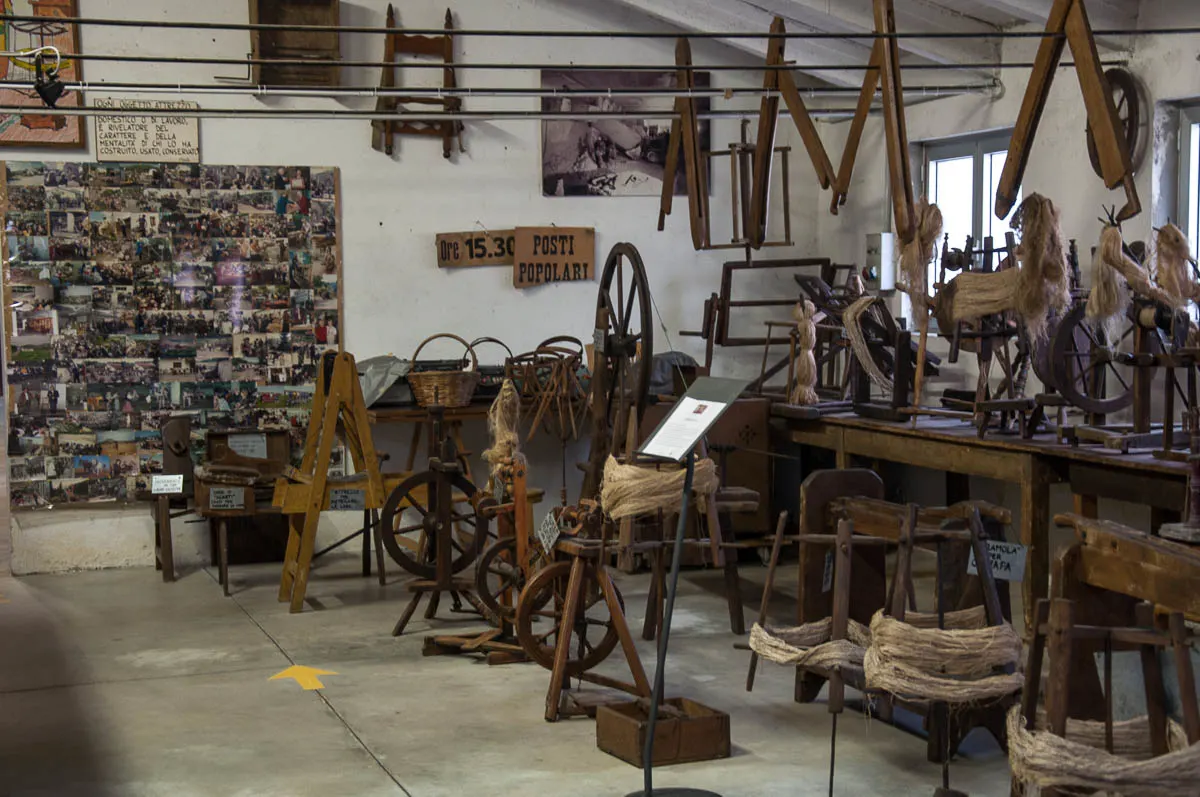
- Carlo Etenli Museum of Rural Life in Grancona, Province of Vicenza – an incredibly rich in artifacts museum in the folds of the Berici Hills near Vicenza. Here you can explore all aspects of local rural life and see thousands of original objects and machines. Whole rooms of old village houses are recreated – from the kitchen to the bedroom – in addition to many different craft workshops and even a rural school. Plus, the basement is filled with nothing but old tractors. A must-see!
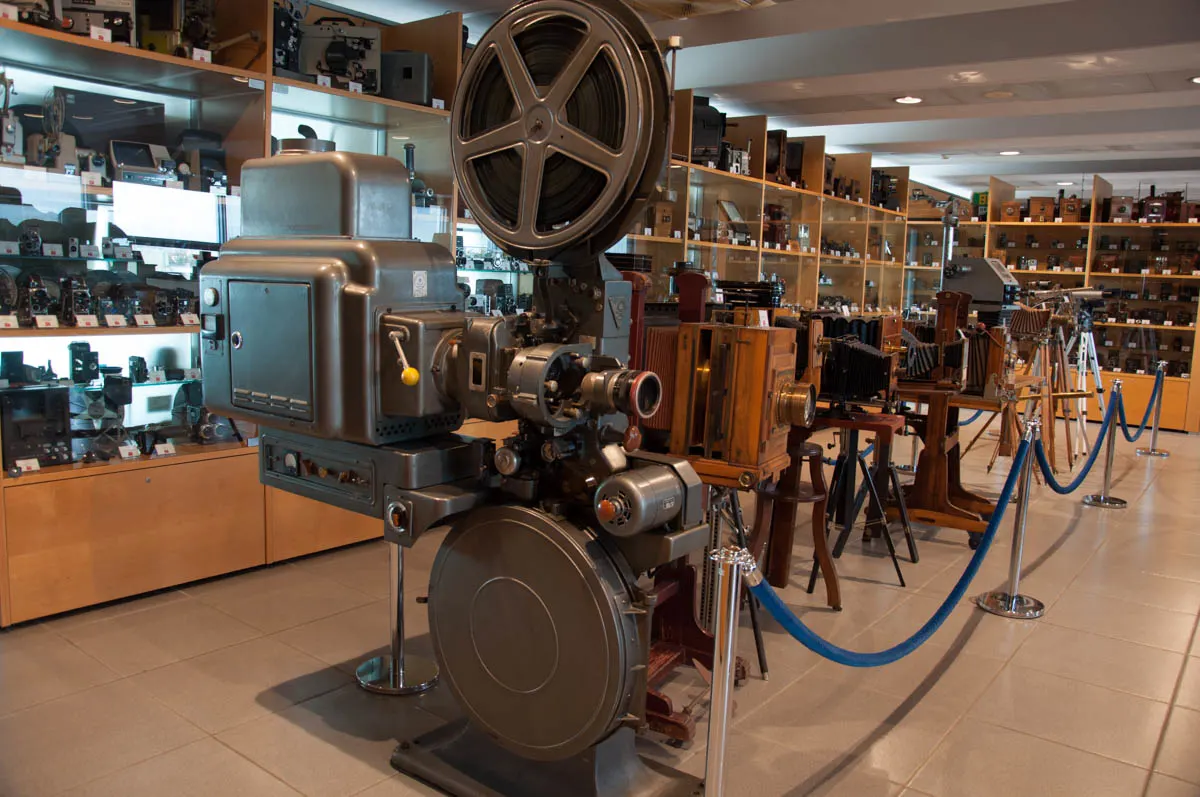
- Nicolis Museum in Villafranca di Verona, Province of Verona – expect hundreds of old automobiles, motorbikes, and even gramophones, typewriters, musical instruments, and cameras. The museum is housed in a specially built modern building and it opens your eyes to the beauty and elegance of old-fashioned design.
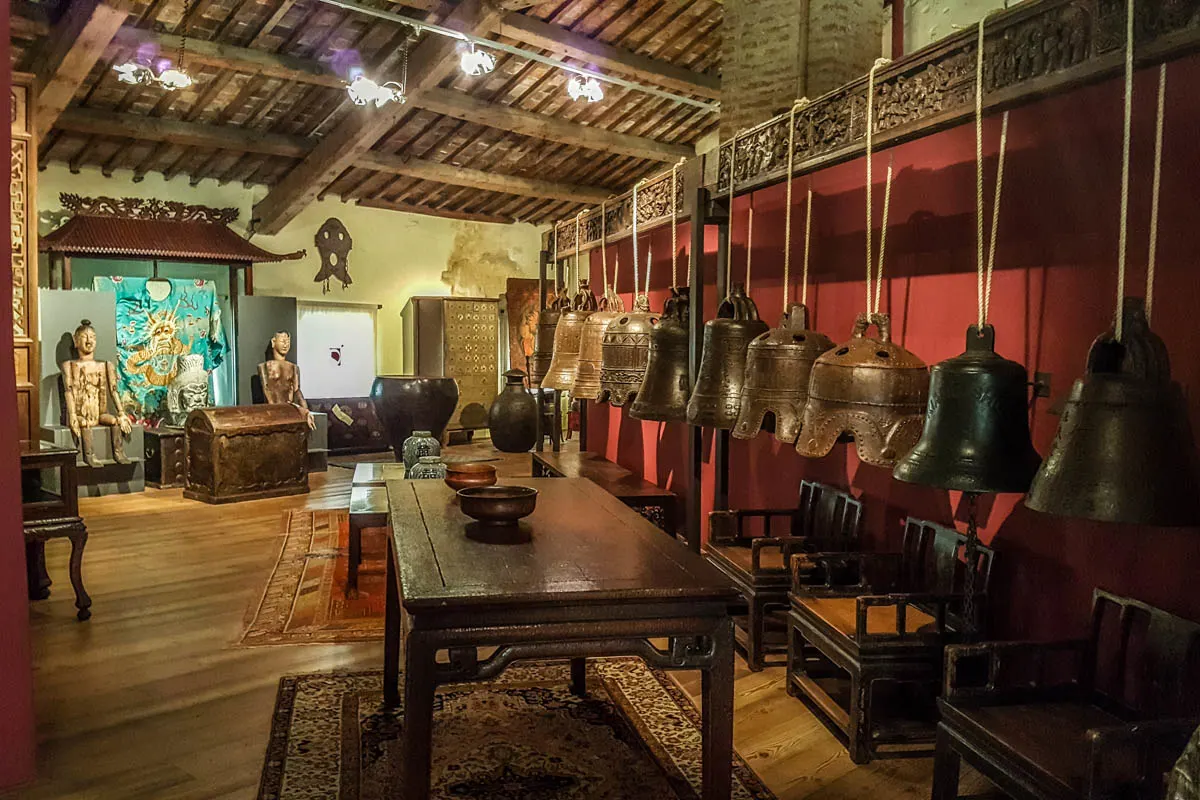
- Oriental Art Museum Obrietan in Montecchio Maggiore, Province of Vicenza – Housed in a 200 years old Venetian villa, Obrietan is the first museum in Italy entirely dedicated to Oriental antiques. Stepping over its threshold, you find yourself transported thousands of kilometres away and hundreds of years ago. The museum has a rich collection of (mainly) Tibetan and Chinese ancient artifacts with fascinating stories behind each one of them.
You will find dozens if not hundreds of small museums in the Veneto, Northern Italy. Dedicated to such weird and wonderful topics as straw hats, old pharmaceutical pots and tools, and aircraft, they will open whole new worlds of knowledge in front of you. Visiting one or dozens of them is a great adventure to have over and over again.
How to do this adventure if you are not in the Veneto, Italy?
This can actually be a lot of fun! Start researching small museums in the area where you live. They can be privately owned, born out of a collector’s dream, dedicated to a very unique thing and/or hidden away in a small village or somewhere where most tourists never go. Then head there and see what you can learn in an hour or two about a subject which may be completely new to you. By the end of your visit, you may feel elated and appreciative of the world in a completely new way.
More information:
11. Immerse Yourself in the Beauty of Tiny Villages
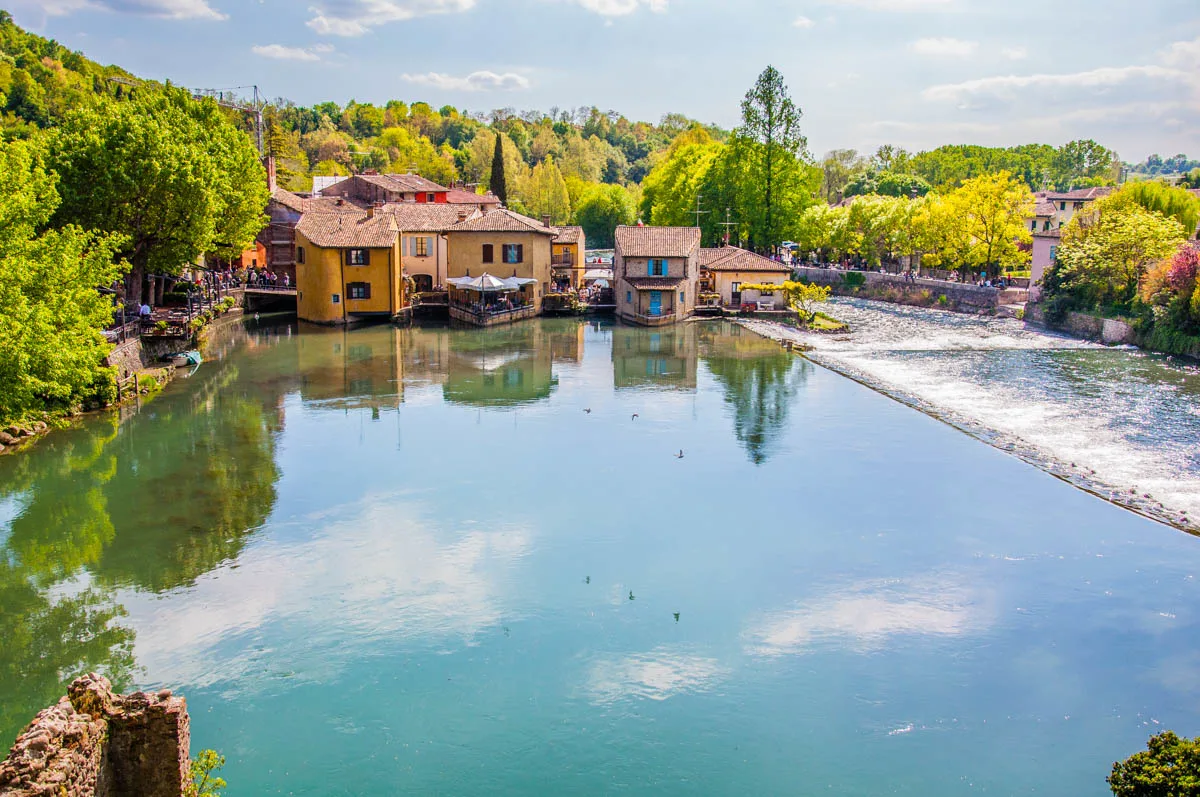
Beautiful things come in small packages! And the Veneto is the perfect proof of this saying for some of its most beautiful and unmissable corners to explore and fall in love with are its small villages.
So, leave the big tourist magnets of Venice, Padua, and Verona behind you and head out to Veneto’s countryside. There you will find little gems. Huddled on top of picturesque hills, built right next to fast-running rivers, commanding breathtaking views over the plains, Veneto’s villages are a joy to discover.
To start you on this adventure, here are three unmissable villages for you to visit in the Veneto:
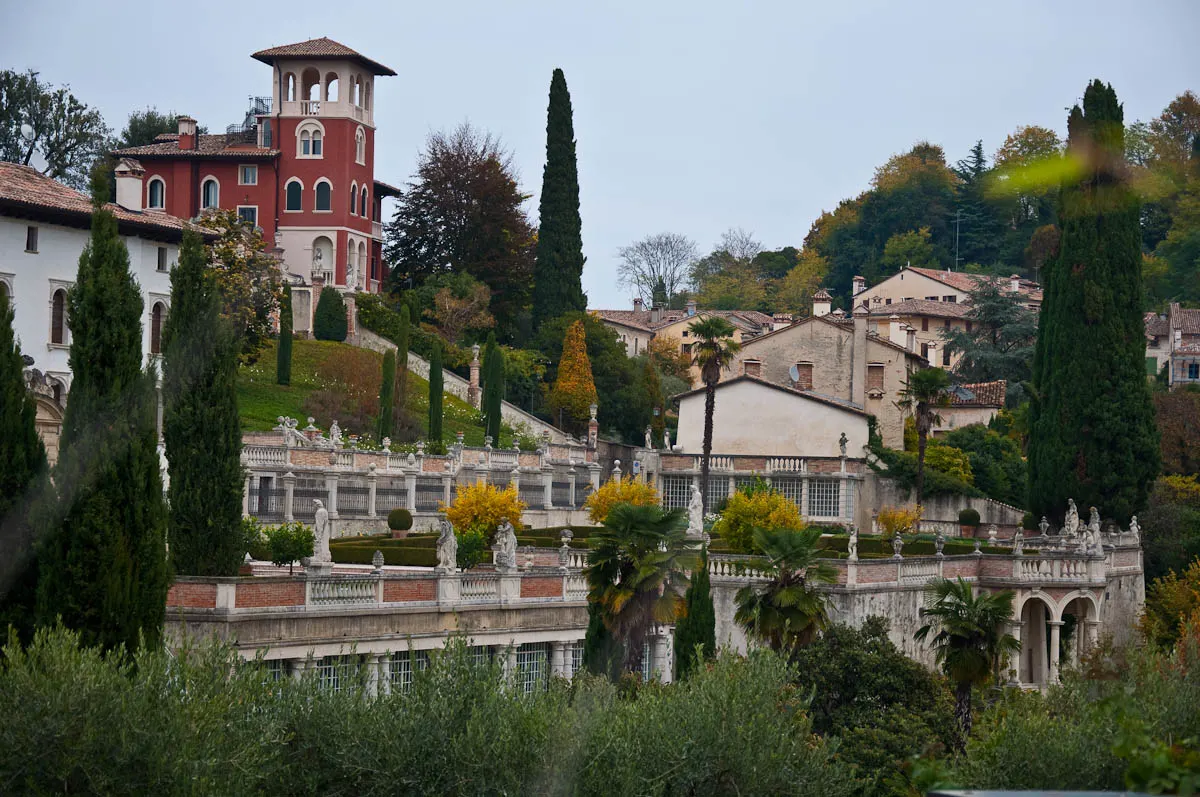
- Asolo – a stunning hilltop village with stone houses, elegant villas, medieval castle and fortification, and views that seem to open a hundred horizons in front of you.
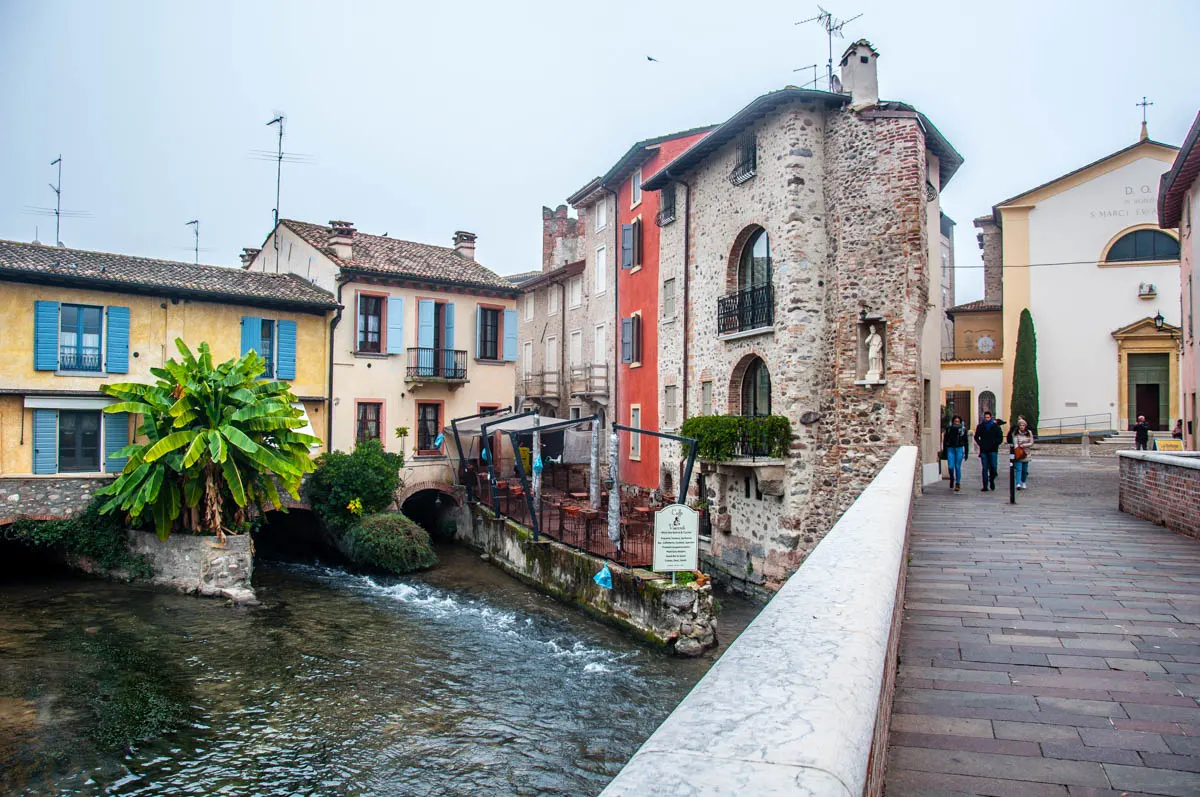
- Borghetto sul Mincio – a fairytale-like village with old mills that have been converted into restaurants serving the local delicacy – love-knot tortellini with different fillings.
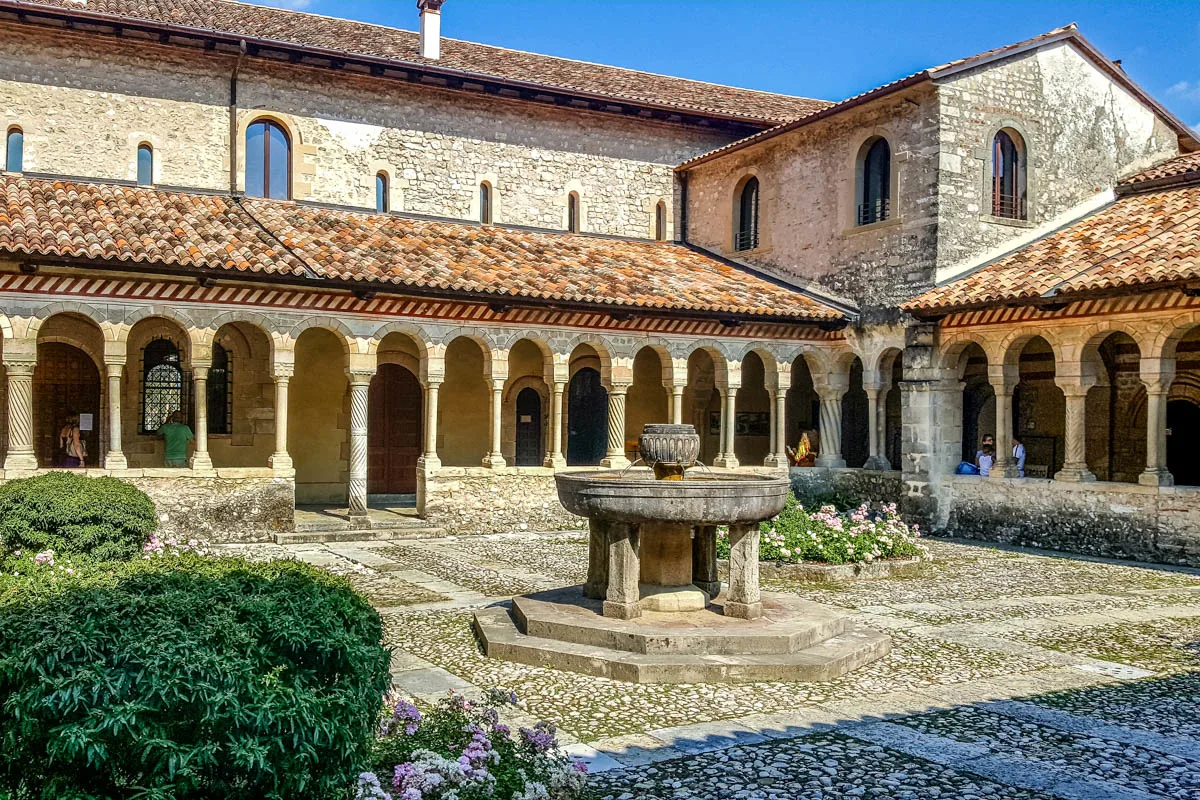
- Follina – a sleepy village with a sprawling medieval abbey in the cloister of which you discover the true meaning of peace and quiet.
Visiting Veneto’s small villages is an adventure that is conducive to spending quiet days slowly taking in beautiful corners and making unexpected discoveries of centuries-old churches, tiny museums, and local events. It’s a great way to leave the stresses of daily life behind and just be in the moment.
How to do this adventure if you are not in the Veneto, Italy?
Leave the big city behind you! Head to a local village that is known for its history, unique houses and tasty local food. Spend a day there slow travelling through authentic traditions and unspoiled beauty. Savour every minute!
More information:
- Italian Villages or 6 Reasons to Visit Italy’s Picturesque and Historic Borghi
- Asolo, Italy – The Soul Asylum of Artists and Royals
- Borghetto sul Mincio – The Most Beautiful Corner of Italy
- The Tortellini of Valeggio sul Mincio
- Photos from Follina
- The Sunset That Petrarch Enjoyed
12. Discover the Traditions Behind Veneto’s Ceramics
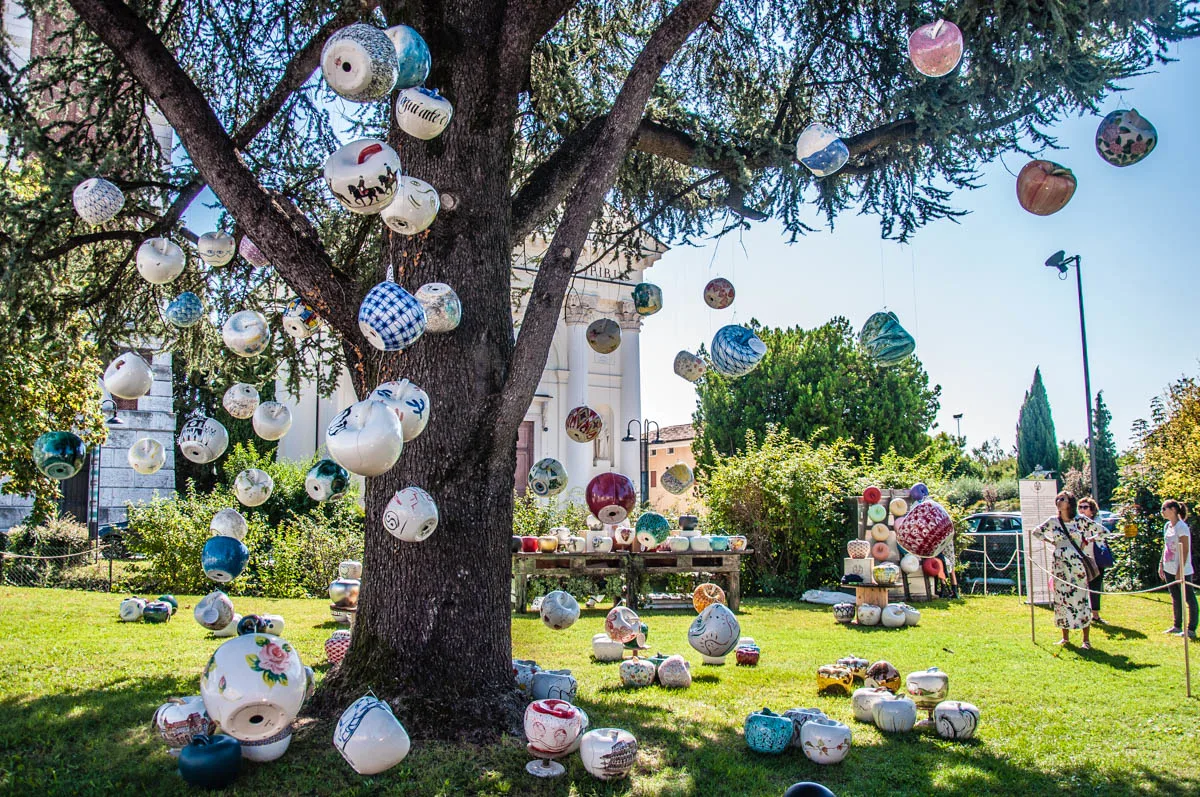
Ceramic-making is a craft with millennial roots the Veneto. The soil at different spots around this Northern Italian region is particularly good to be shaped and baked into beautiful ceramic plates, bowls, cups, and platters. A fact that has been known since prehistoric times. Hence, in many museums in the Veneto you can find thousands of years old ceramic pieces confirming the local development and practicing of the craft.
So, this adventure will take you in two different but complementary directions.
One is that you can visit one or many museums in the Veneto seeking to discover more about the local ceramic-making traditions. It is a fascinating journey to uncover how our simple, human need to eat and drink has inspired the creation of stunningly gorgeous pieces of ceramic art.
The other direction you can follow to complete this adventure in the Veneto is to visit the shops and the studios of Veneto’s modern-day ceramic makers and factories. There you can see, fall in love with and buy some truly lovely pieces of crockery.
Here are three places in the Veneto where you can have fun with this adventure in the world and traditions of ceramics:
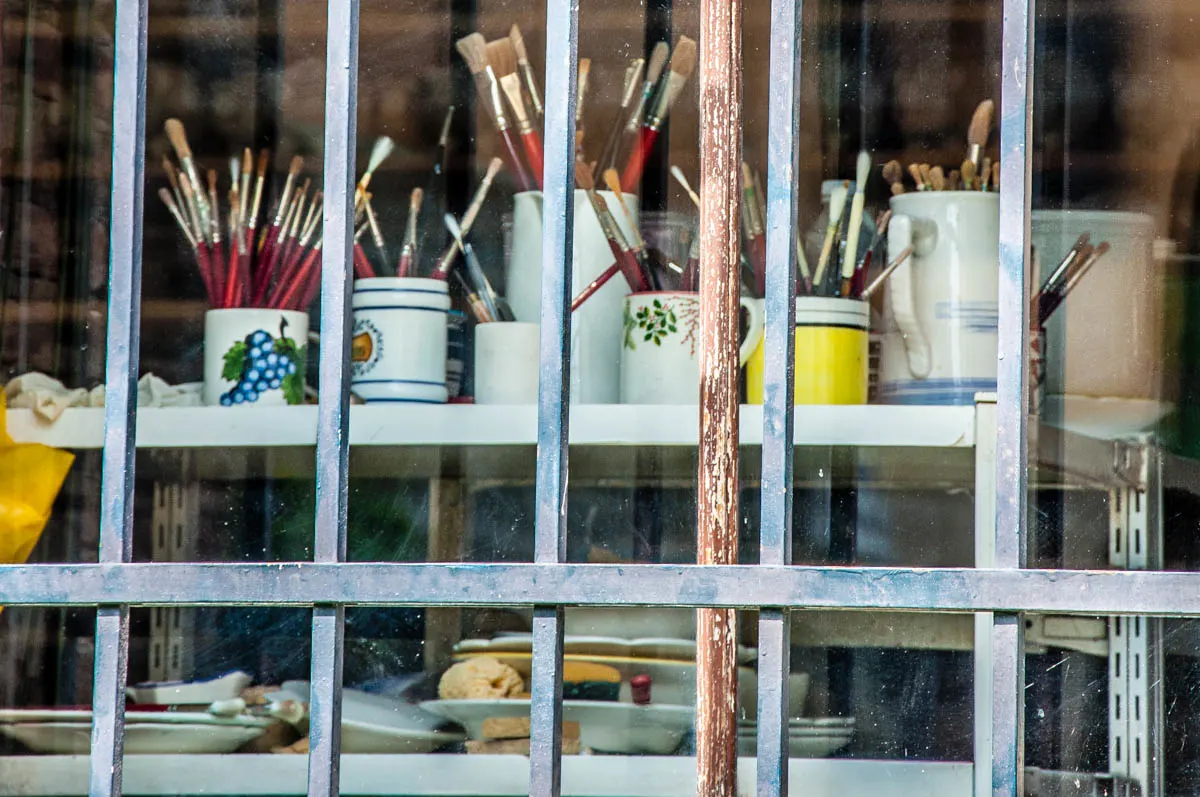
- Este – a lovely walled town the history of which stretches back over 30 centuries. In Este’s National Atestino Museum, you can learn lots about the development of the ceramic craft in the area. Then you can visit the shops of several local ceramic-making artists and factories. Check point 4 in this list for further details.
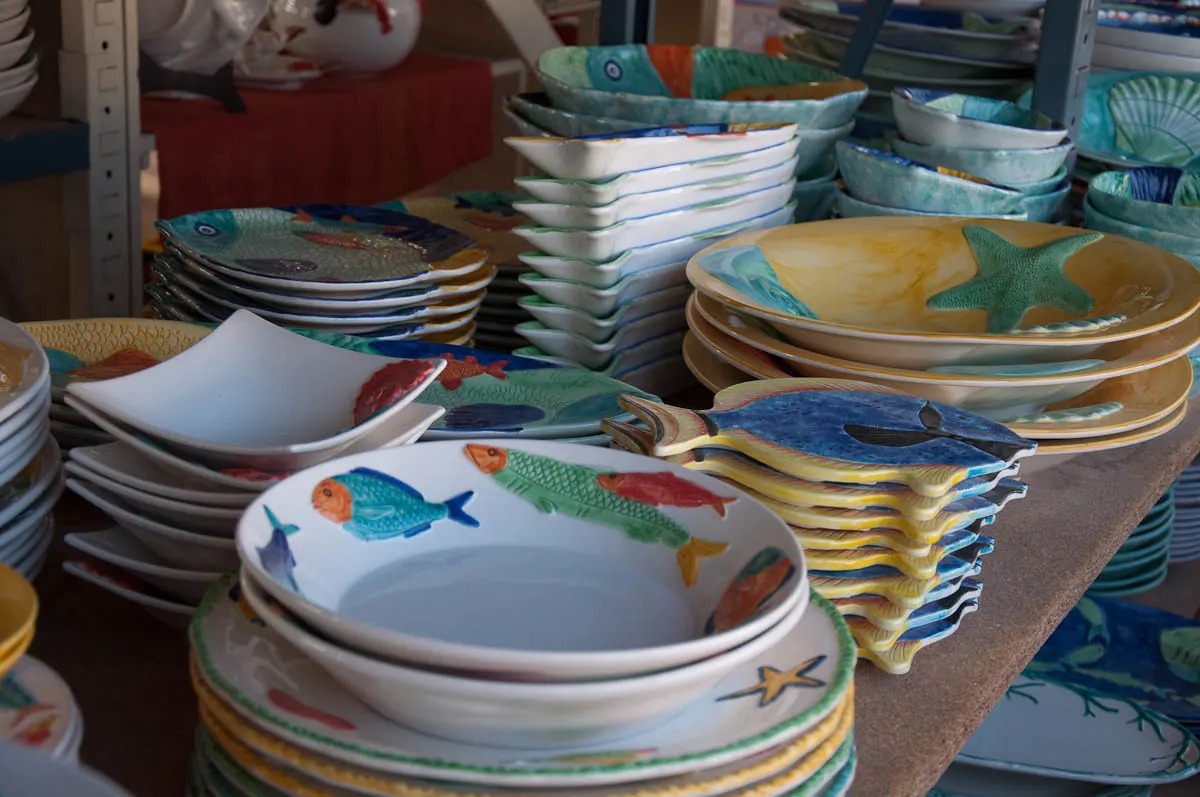
- Nove – a small town on the clay-rich shores of the river Brenta. Here every other building seems to be a ceramic-making factory. Nove has a very interesting Ceramics Museum with hundreds of gorgeous pieces of centuries-old crockery. Every September, the town also holds a weekend-long ceramics festival.
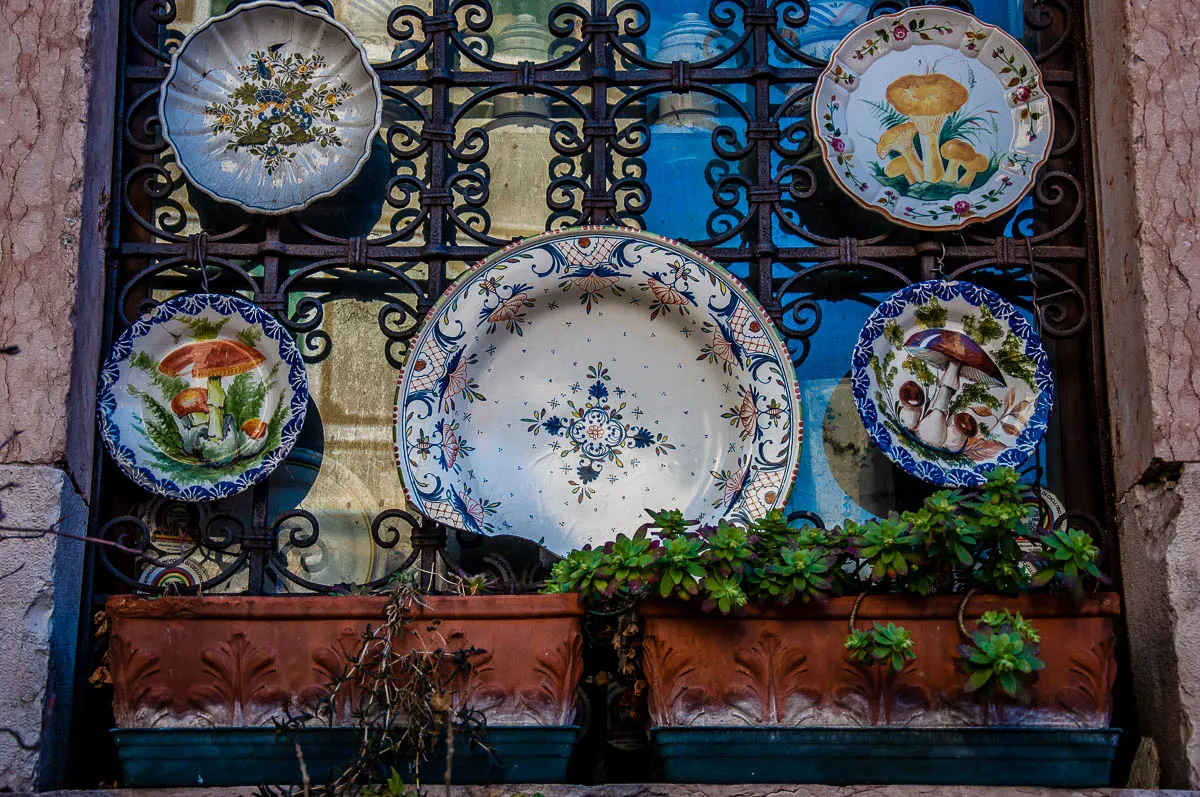
- Bassano del Grappa – spend some time at the Ceramics Museum in the city to learn more about the local traditions of making beautiful things out of clay. Then explore the ceramic shops in the historic centre where you can buy some truly wonderful artisan pieces.
To make things even better, you can easily visit and explore both Nove and Bassano del Grappa in a day as they are very close to one another.
Spending a day dedicated to learning about a millennial craft is a great way to open yourself to the beauty in this world. If you add to this adventure its shopping element, then you will have the satisfaction of having bought from real artisans that are keeping the flame of local traditions alive.
How to do this adventure if you are not in the Veneto, Italy?
Again, you can do one of two things:
You can research both online and in books Veneto’s ceramics traditions. There are different sources of information describing their development through the centuries and introducing the curious reader to the different techniques that were developed and adopted here in terms of ceramics.
Or you can find a local to you ceramics maker or producer and see if you can visit their workshop in order to learn more about their craft. It is also possible that a town where you live is also very famous for its own ceramic-making traditions. Wouldn’t it be fun to discover more about it?!
More information:
- Exploring Veneto: Ceramics Shopping in Nove
- Point 4 in Este, Italy – Top 9 Things to Do in This 3,000-Year-Old Walled Town
13. Eat Veneto’s Zero Kilometer, DOP, IGP, STG, and IG Products
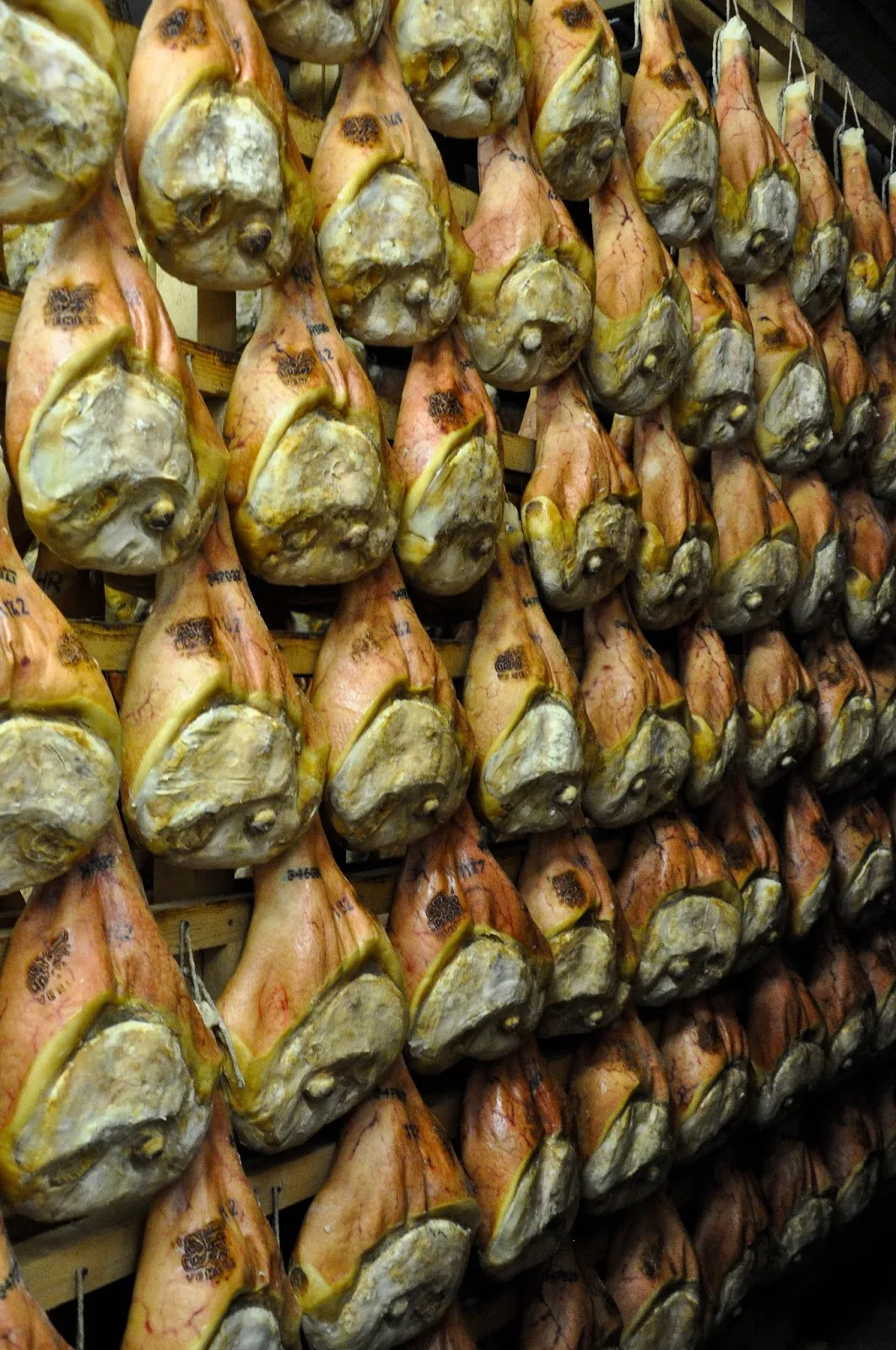
Getting to know Veneto through its food is the best adventure of them all. Food, definitely, is a big deal here. The local people certainly have high expectations about its quality, origins, and taste.
For example, when you go to the greengrocer’s here, the selection is big and seasonal. Many of the fresh fruit and veg sold are marked as Zero Kilometer. In other words, they are super locally produced and have travelled the minimum distance between the point of production and the retail point.
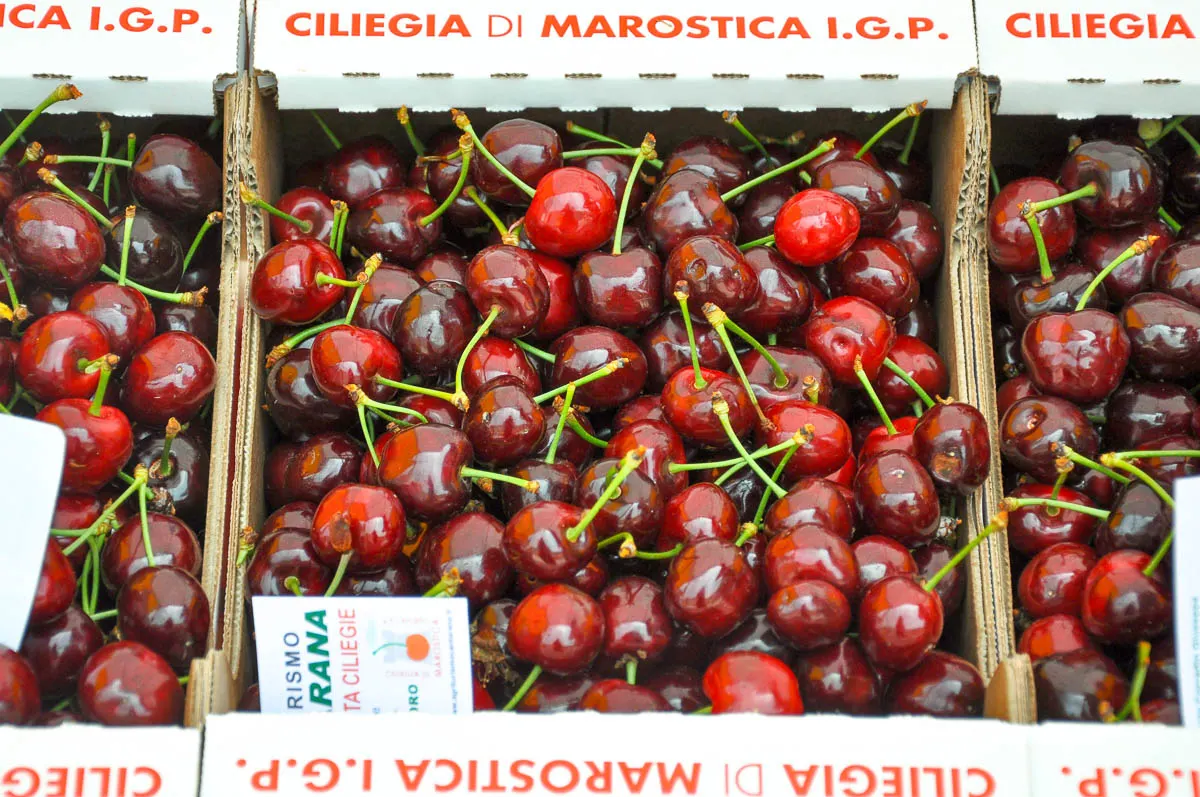
In addition, the Italians use several acronyms to expressly mark certain foods. This way you know that they are not only produced following strict requirements but they are also made at a particular geographical place where the techniques and the traditions of making the respective food have been refined for centuries.
As such, for this adventure in the Veneto, try to taste as many foods and drinks marked either as Zero Kilometer or with the following acronyms:
DOP – Denominazione di origine protetta – in English ‘Protected Designation of Origin (PDO)
IGP – Indicazione geografica protetta – in English ‘Protected Geographical Indication (PGI)
STG – Specialità tradizionale garantita -in English ‘Traditional Specialties Guaranteed (TSG)
IG – Indicazione geografica – in English ‘Geographical Indication’ (GI)
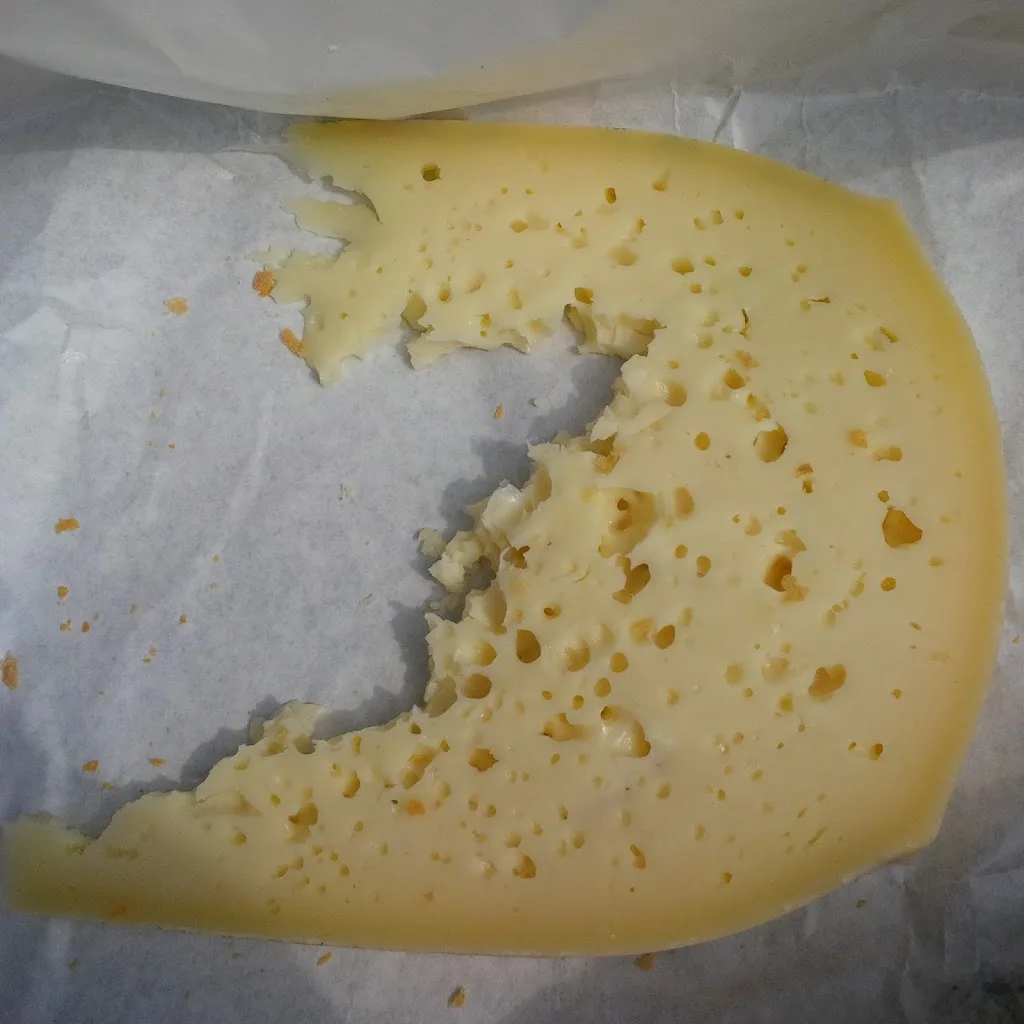
To help you start, here are a few DOP, IGP, STG and/or IG products that are typical for the Veneto:
- Asiago cheese
- White asparagus
- Marostica cherries
- Grana Padano cheese
- Provolone Valpadana cheese
- Prosciutto Veneto Berico-Euganeo
- Sopressa Vicentina (a thick salami)
What do you think? You can’t wait to start?! Tuck in and enjoy!
How to do this adventure if you are not in the Veneto, Italy?
You can visit local to you Italian delis and see if they stock any of the Veneto’s DOP, IGP, STG and/or IG products. Or, you can do a little research and see what such products are produced in your own country and then endeavour to savour them all. Perhaps not all at the same time but you get my drift!
More information:
- Italy for Foodies: White Asparagus
- Marostica, Italy – The Juicy Season of Cherries
- The Prosciutto Festival in Montagnana
14. Get Creeped Out at a Haunted Place

Exploring mysterious buildings and haunted places is a great adventure to have if you like feeling a bit creeped out while at the same time learning curious local stories and legends.
The Veneto is fabulously rich in creepy stories and spots so you are bound to have a really creeptastic adventure if you explore one or more of them. The question is: Would you dare to do it?
Of course, you would! And to start you off, here are three of the dozens of creepy places you can venture to in the Veneto:
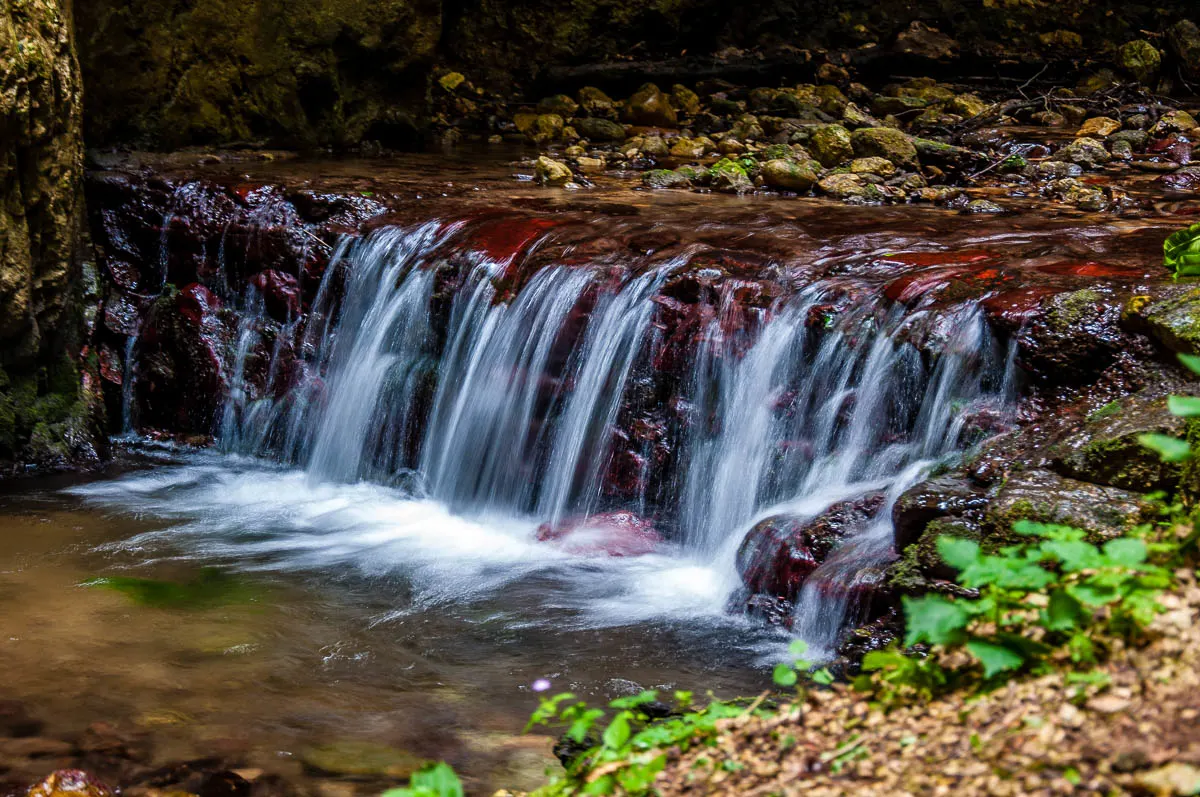
- Montagna Spaccata – this picturesque gorge is dotted with waterfalls and it is, allegedly, one of the spots in the Veneto where the anguane come to wash their cloths. The anguane are beautiful water nymphs with cloven feet. They sing and dance very well but can be very deceitful and, apparently, they like to seduce handsome young men. Click here to read more about them.
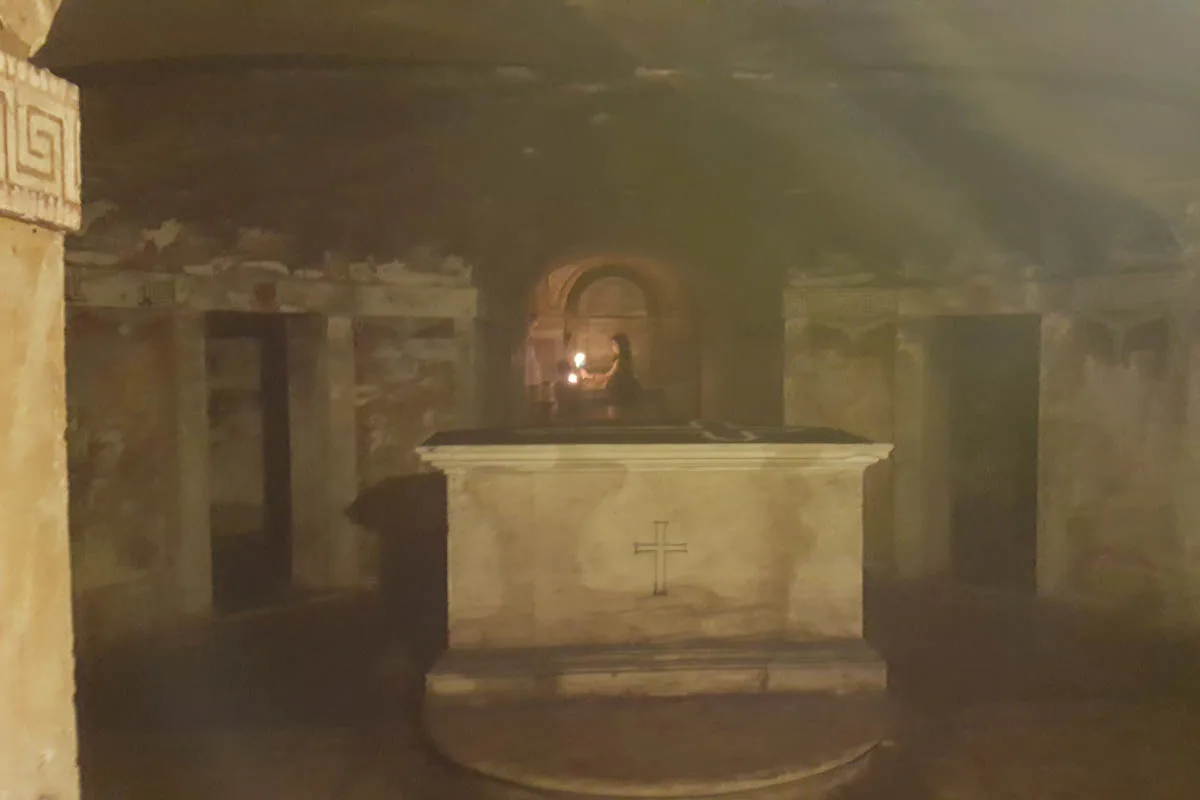
- Underground crypt of the Church of San Simeon Piccolo in Venice – one of the very few crypts in Venice, this dark frescoed space makes you tremble in your boots as you explore it with a lit candle in hand. Check point 1 in this blog post for further details.
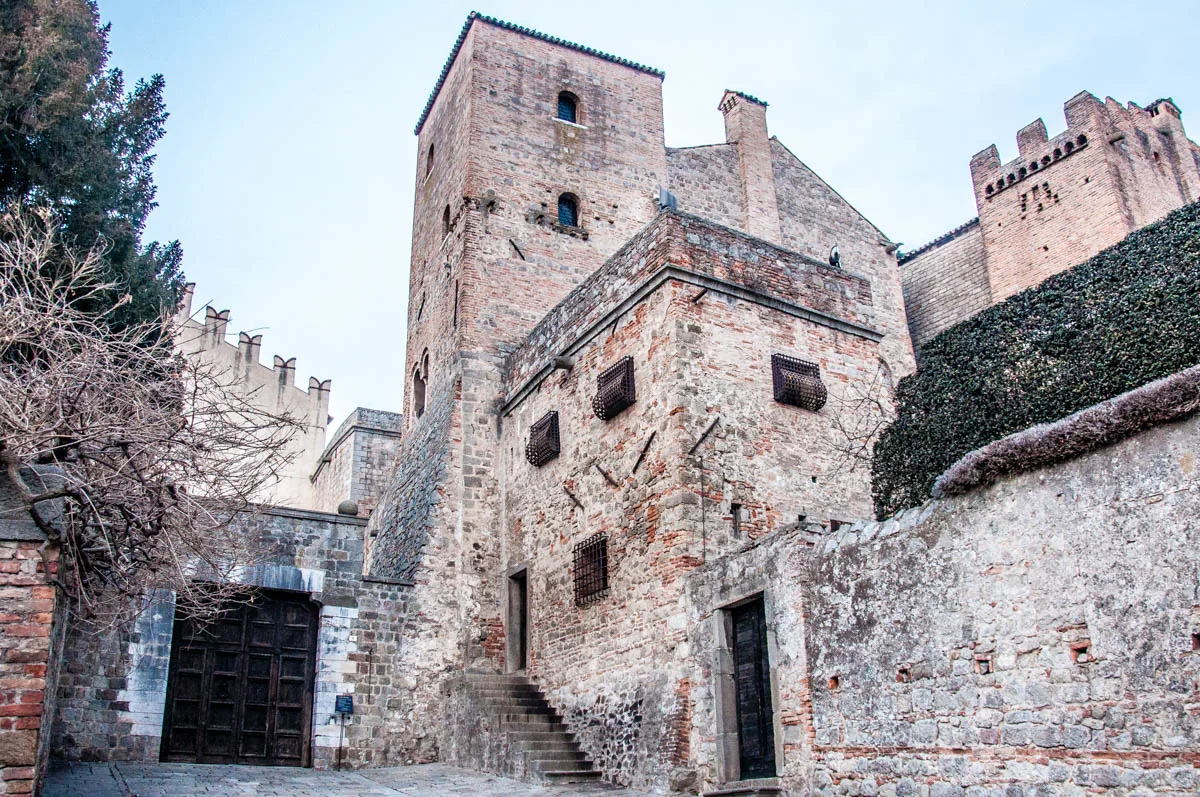
- Monselice Castle – this stunning castle in the medieval walled town of Monselice is, allegedly, haunted by three ghosts. You can visit it as part of a guided tour.
The Veneto – in addition to its beautiful art, gorgeous architecture, and noble history – has, certainly, also a dark side to it. Be brave and go on an adventure to learn a bit about it, too. Start with the three places above and before you know it, you will have uncovered dozens of local legends and haunted spots needing a lifetime to explore them all in detail.
How to do this adventure if you are not in the Veneto, Italy?
Are there any creepy, haunted places where you live?! You know, the usual type… Like a cursed mansion, a ruined castle, a haunted house, a spot where, they say, witches and wizards used to congregate?! Well, head there pronto. Of course, as long as the general public is allowed to access them. Let me know if you felt or experienced anything while there!
More information:
- The Magical Creatures of Veneto
- Haunted Venice – Legends, Mysteries and Stories to Creep Yourself Out About the Most Romantic Place on Earth
- The Spookiest Place in Italy
- Photos of Montagna Spaccata
- Photos of the underground crypt of the Church of San Simeon Piccolo in Venice
15. Explore Veneto’s Industrial Archaeology
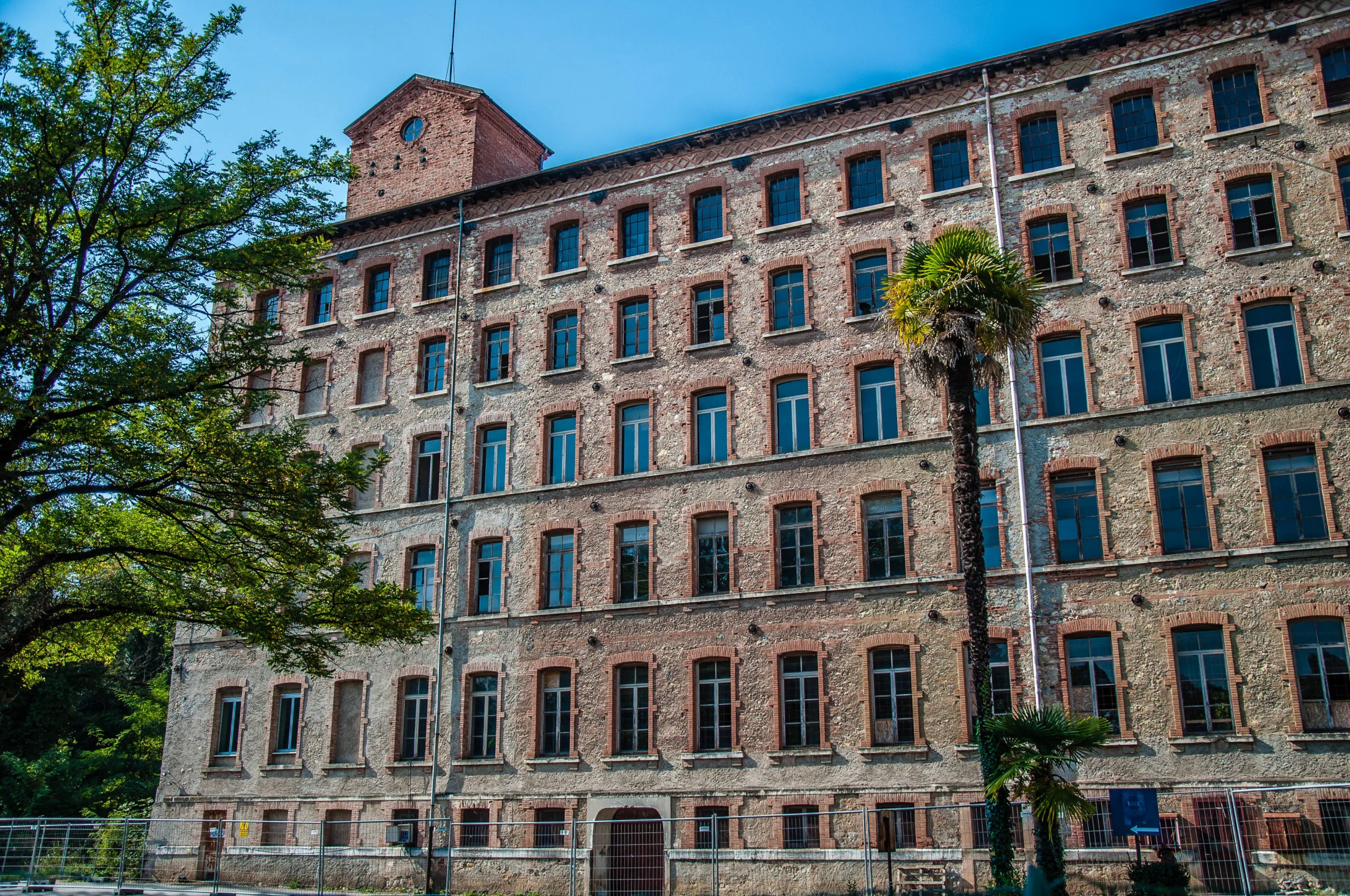
While the Veneto is rich in ancient artifacts and Roman ruins, this Northern Italian region is also a fertile ground to explore in terms of a different type of archaeology.
Industrial archaeology is a science that studies the heritage of the Industrial Revolution. Learning about how industry and technology changed the Veneto over the last 200 years or so is a very interesting and enriching adventure.
Here are two options to get you started:
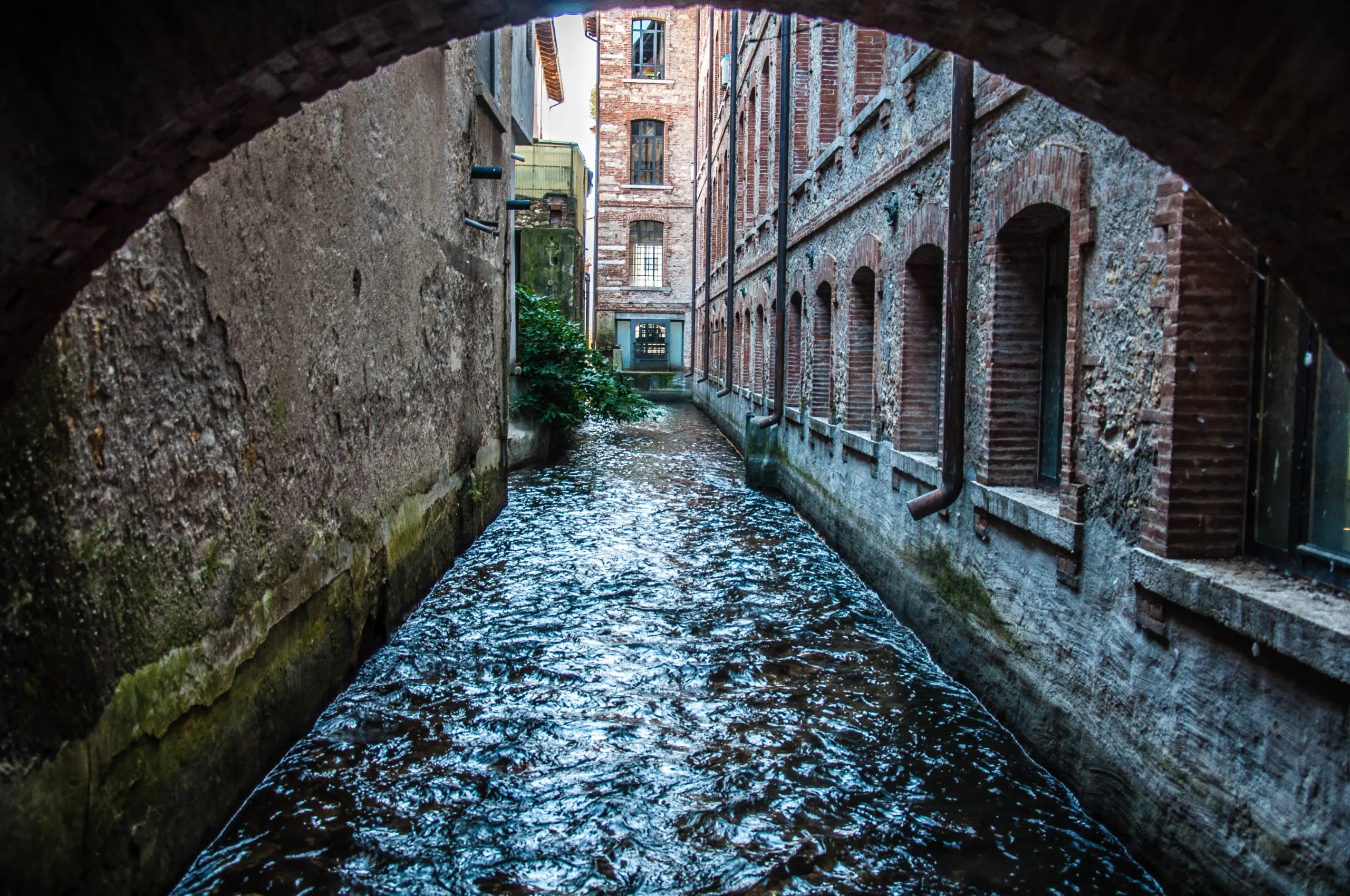
- Schio – towards the end of the 19th century, the small town of Schio in the Province of Vicenza was the capital of Italy’s textile production. So advanced were the local textile factories at the time that Schio even earned the moniker of Italian Manchester. Nowadays, there are many vestiges of this glorious industrial past to explore in and around Schio. From gardens and buildings erected by the textile producers to provide optimal lifestyle conditions for their workers to a yearly festival held in Schio each October building on the town’s textile roots and industrial connections to England.
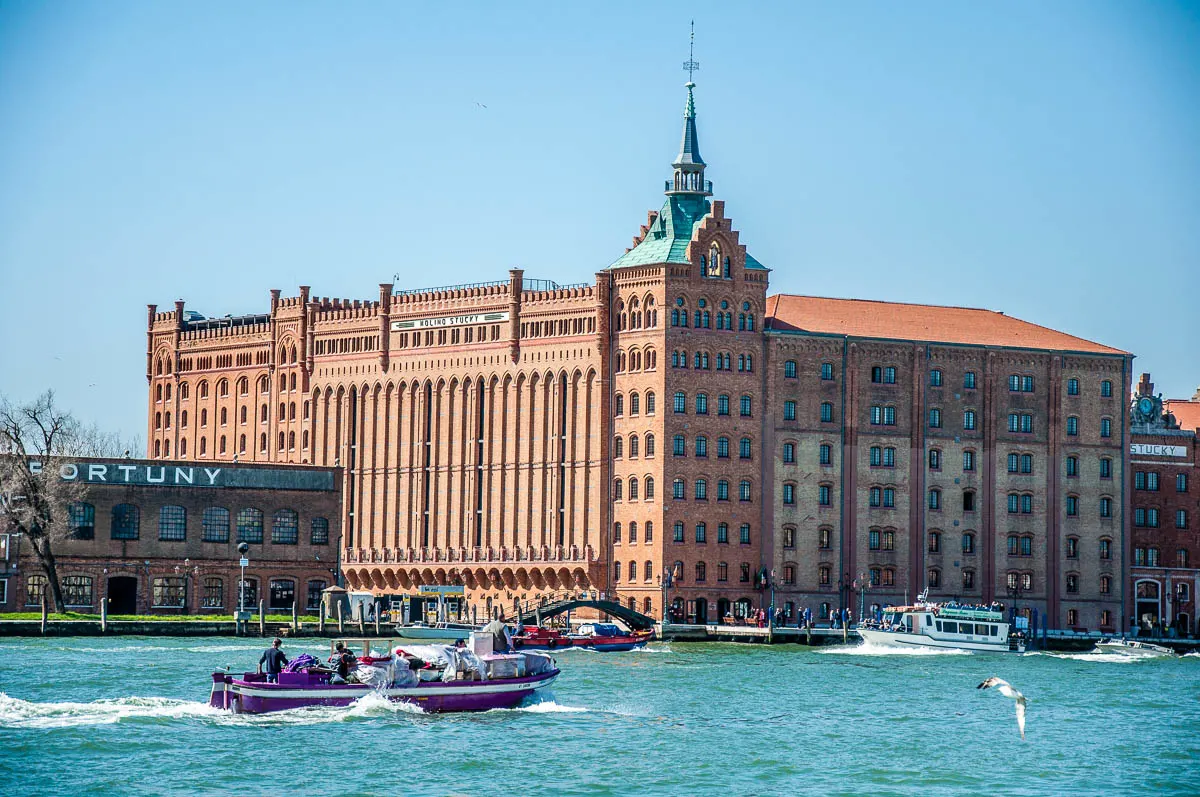
- Molino Stucky, Venice – one of the Veneto’s most interesting industrial archaeological sites is in Venice. Called Molino Stucky, this is a former mill. It was built by a Swiss entrepreneur at the end of the 19th century. The building is massive yet it has a rather striking industrial design. You will find Molino Stucky on the island of Giudecca in Venice. It’s one of the tallest and grandest buildings in the city of water and nowadays it functions as a luxury hotel.
There are many other places in the Veneto where you can get closer to the industrial design and technology of the past two or so centuries. See what else you can uncover as part of this adventure that aims to get you out and about and looking for fun and exciting things to do while stimulating your interest in the world around you.
How to do this adventure if you are not in the Veneto, Italy?
Industrial archaeology is a relatively new science. Its development started in the first decades of the 20th century with England being its frontrunner. See if you can find any local to you centres for the study of industrial archaeology or any buildings and/or other constructions that would interest a budding industrial archaeologist. In many places nowadays, old factories and mills are open for visits, there are tours of former industrial complexes and the attention given to our recent industrial past is growing strong year after year.
More information:
- British Day Schio or How We Found Britain in a Quaint Italian Town
- The Italian Town Obsessed with Great Britain
16. Swon Over Veneto’s Frescoed Buildings

One of the most beautiful things you can see in the Veneto is its frescoes-covered buildings. Both on the inside and on the outside.
It’s like walking through a never-ending art gallery. It lifts the spirits and makes you feel like an art adventurer always on the lookout to discover something beautiful.
Even if art may not be your forte, even if you may not know much about art styles and painters, delving into Veneto’s frescoed buildings is a great adventure to dedicate a day or many days to. For through the frescoes on religious, mythological, and even agricultural themes, you will come across an eternal theme – that of our humanity. Of people doing extraordinary things and of people doing daily things. And expressing a plethora of emotions along the way. And this is something very uplifting to see.
Here are only three of the hundreds of frescoed buildings in the Veneto to get you started on this adventure. I have chosen three which I, personally, love. Try discovering many more for yourself and see which ones will really speak to you:

- Mazzanti Houses in Verona – a long set of houses on one of Verona’s most iconic squares – Piazza delle Erbe. The Mazzanti Houses have commercial premises on the ground floor and residential apartments above. Their facades are covered with beautiful Renaissance frescoes depicting mythological and allegorical scenes. It was due to the large number of frescoed buildings in Verona that the city was known as Urbs Picta (the Painted City) in the Middle Ages and the Renaissance.
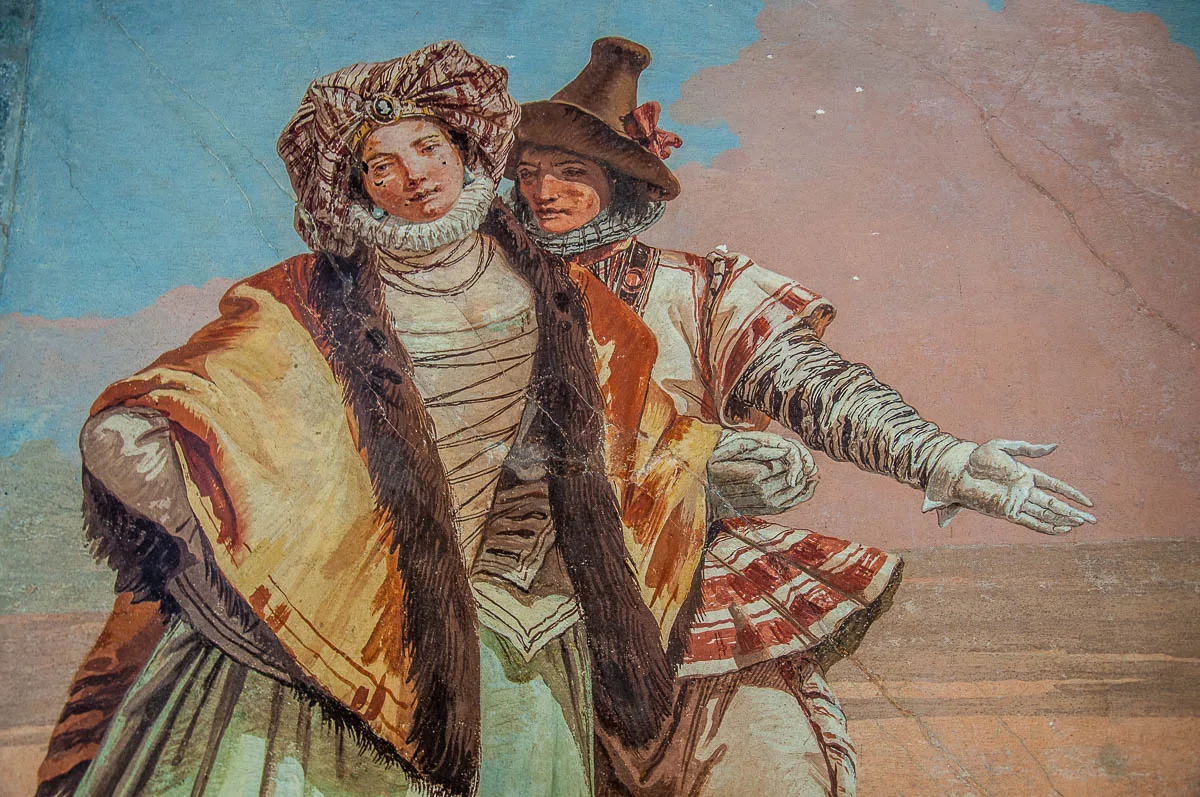
- Villa Valmarana ai Nani in Vicenza – this elegant Venetian villa on the outskirts of Vicenza is fully frescoed by the father and son artists Giambattista and Giandomenico Tiepolo. I particularly like the frescoes in the Foresteria – a long building next to the main body of the villa.
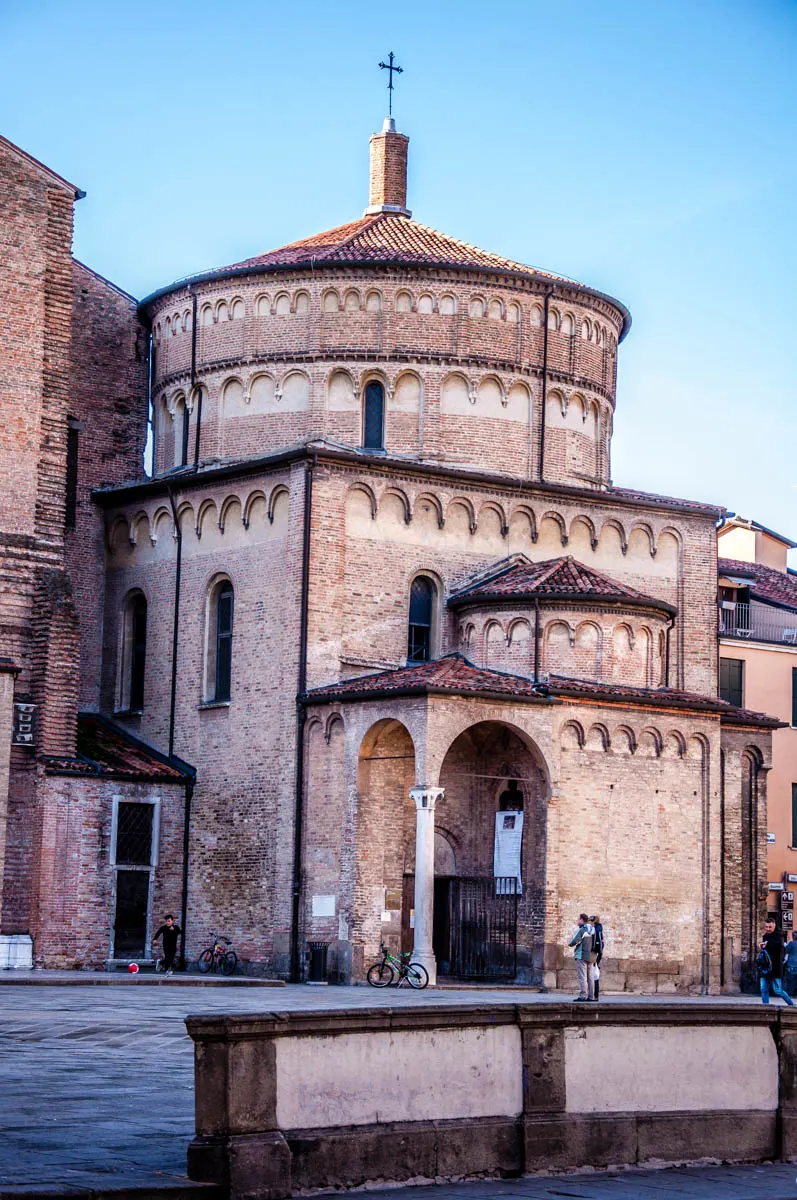
- Padua’s Baptistery – this very plain on the outside building hides an incredibly colourful secret inside. The interiors are fully frescoed by Giusto di Menabuoi and the walls and the ceiling are completely covered with biblical scenes. Look up and you won’t be able to take your eyes away from the dozens of eyes of saints and angels surrounding Jesus Christ looking back at you. A must-see in a city renowned for its many splendid frescoed buildings.
The above three examples are also a good introduction to the different artistic styles that existed and were appreciated in the Veneto throughout the centuries. It is quite a wonderful adventure to see how artistic tastes changed and evolved here from the 14th-century frescoes in Padua’s Baptistery to the 18th-century frescoes in Villa Valmarana ai Nani.
How to do this adventure if you are not in the Veneto, Italy?
Veneto’s frescoed buildings have been the subject of countless writings, studies, and books. See what literature about the frescoes and the painters behind them you can discover in your local library or bookshops.
Alternatively, you can always orient this adventure towards frescoed buildings in the place where you live. You never know what artistic gems with an interesting story behind them you are bound to discover.
More information:
- 20 Best Things to Do and See in Verona, Italy in One Day – The Ultimate Itinerary with Photos and Tips
- The Beauty of Vicenza, Italy in 30 Photos and Stories
17. Catch a Ferry

Travelling by ferry can have a very calming effect. Gliding on the blue sprakling waters soothes your soul and makes you feel happy and relaxed. You are not in the driving seat, you don’t have to worry about speed limits, road conditions, and pushy drivers. You just let yourself be taken forward to your destination by the ferryboat while you take the gorgeous views around you in.
What a great adventure that is!
Luckily, the Veneto offers many options to get yourself on a ferry and have a nice and relaxing journey surrounded by stunning panoramic views. Here are three options to give you some ideas where you can go and what you can see along the way:
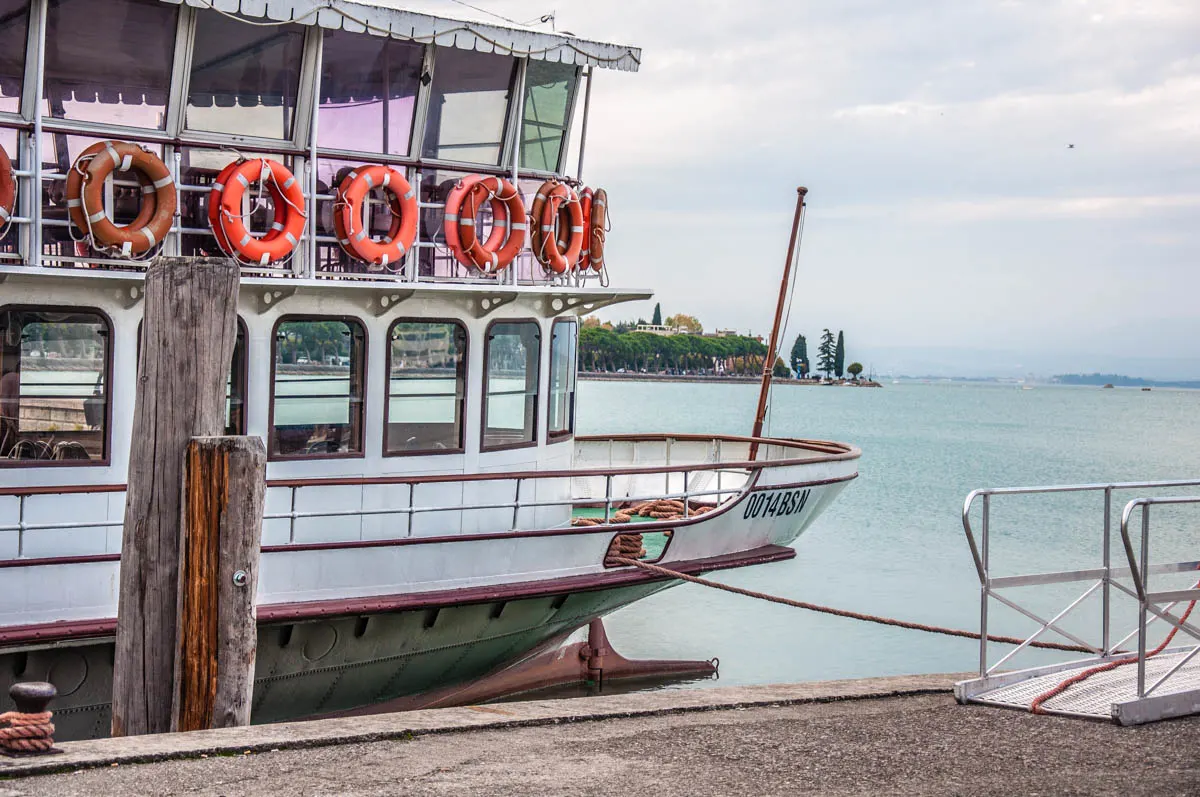
- Lake Garda – Italy’s largest lake is crisscrossed by a dense network of ferry boats. Ferries connect the many beautiful lakeside towns thus giving you a chance to explore further afield even if you don’t have a car. In case, you are taking this adventure by car though, there are ferries on Lake Garda that transport cars, too. This way it is very easy to hop from one side of the lake to the other and continue your journey forward. Have a look at point 3 in this blog post for some ideas about places you can reach by ferry on Lake Garda.
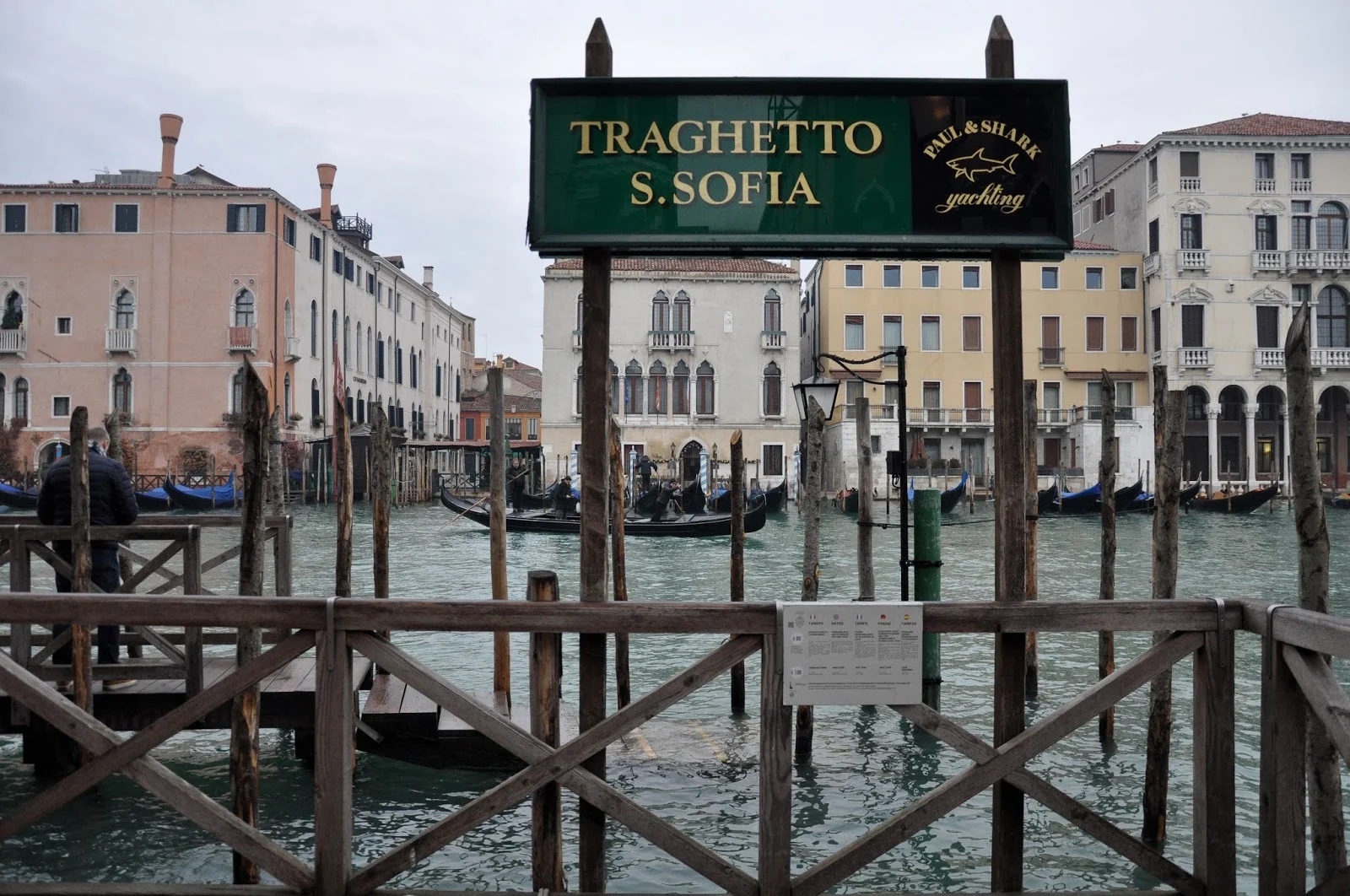
- Venice – take the traghetto across the Grand Canal. A traghetto is a traditional for Venice black boat. It’s like a gondola but without all the pomp and shiny decorations. A journey on the traghetto – which is rowed by two boatsmen – costs only a couple of euros and it delights you with beautiful views of the palazzi and historical houses that line up the Grand Canal.
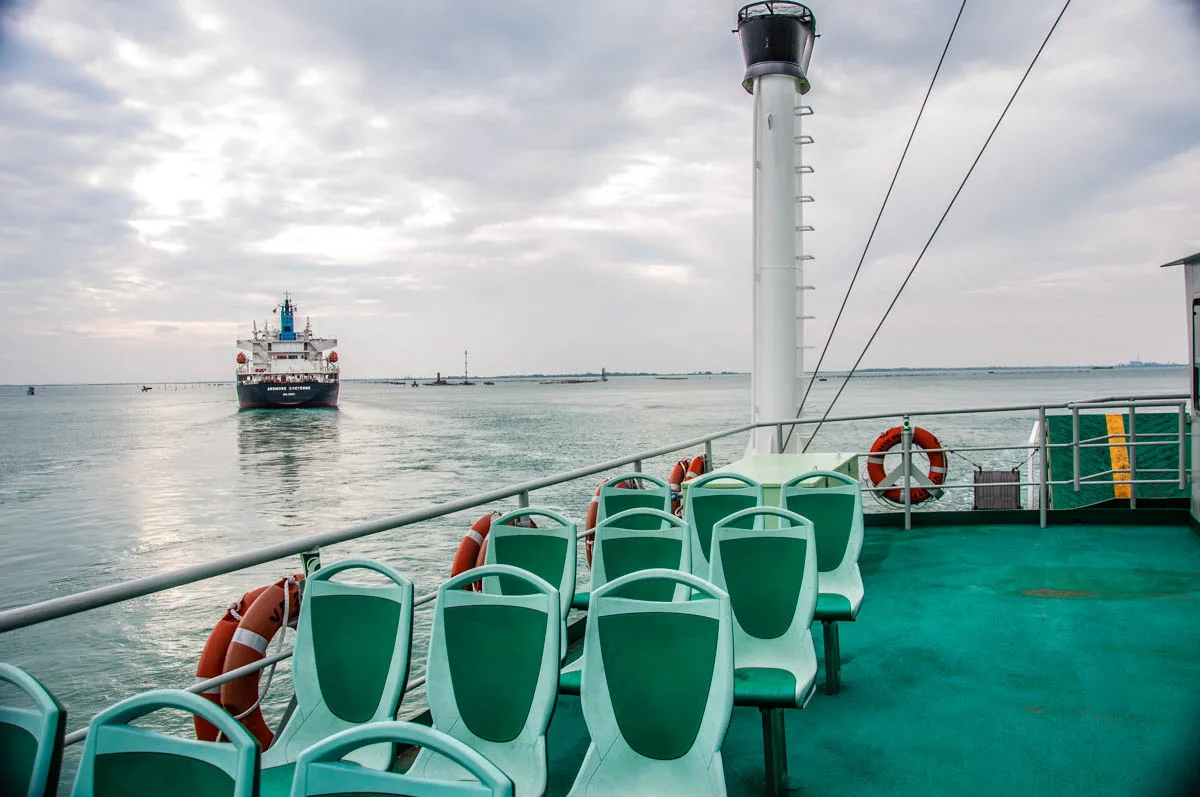
- Lido to Pellestrina – take the bus that connects these two islands in the Venetian Lagoon. Part of the journey is spent on a ferry that takes the bus as well as foot passengers and cars between the islands. The ferry journey is short – ten minutes or so – but it gives you a chance to see and experience the Venetian Lagoon from a different point of view.
Seeing the beauty of the Veneto from a ferryboat as you glide on calm waters is a great adventure to have. You can enjoy it in any season so head to Lake Garda, Venice or another ferry-friendly place here as soon as you can.
How to do this adventure if you are not in the Veneto, Italy?
Is there a lake, a river, or a sea where you live? Check if there is a ferry service (or any other type of boat service) you can use there. Then just pick the day, get on that boat and relax watching the water swish carefree past you.
More information:
- Point 3 in Lake Garda with Kids or The Best 11 Things to Do at Lake Garda for Families
- Traghetto in Venice, Italy – History, Traditions and Practical Information
- Photos of the Lido-Pellestrina ferry
18. Focus on the Details

With so many worldwide famous sights and museums here, it is only too easy to completely overlook the small details that, actually, give the Veneto its unique charm. As such, this adventure aims to help you stop and notice the many things around you here that may be small in size but, when you look at them, they reveal a whole hidden world to you.
Here are three things that you can start your focus-on-the-details adventure with:
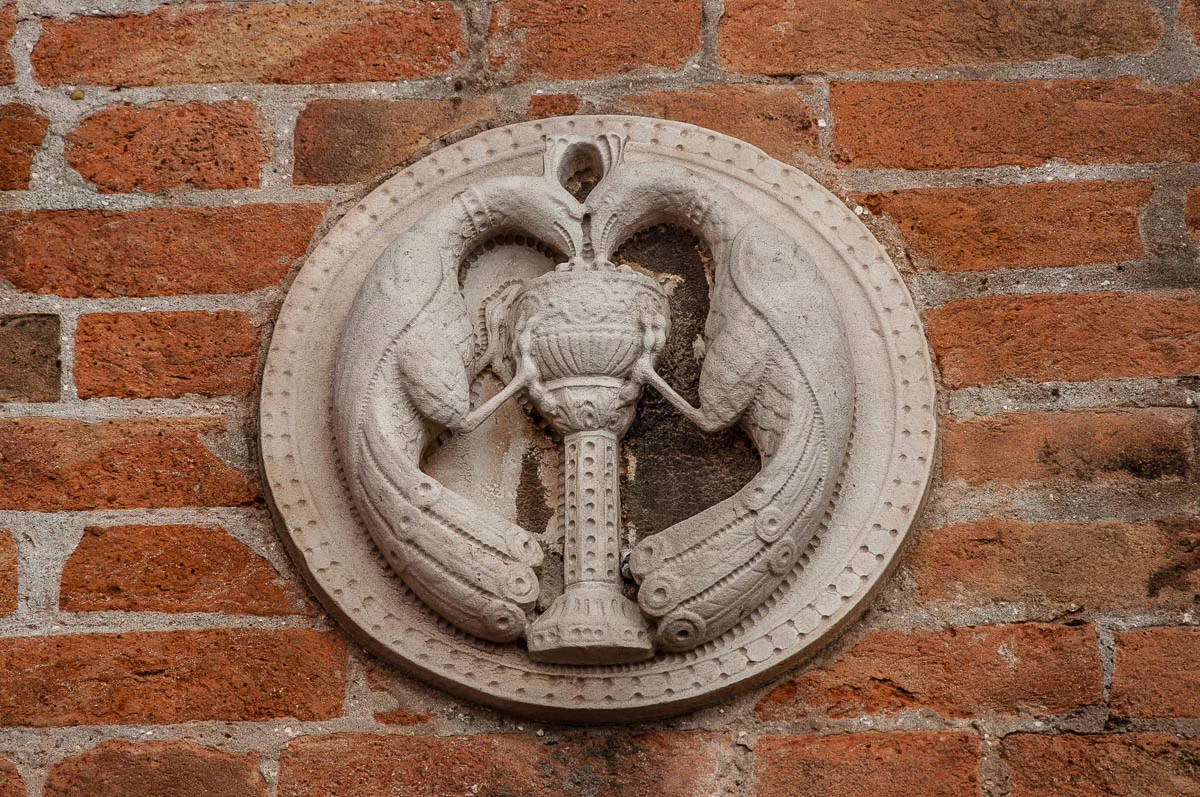
- Patere – a patera (pl. patere) is a small, usually circular decoration that you will spot on walls all over Venice. With Byzantine roots, the use of patere proliferated in Venice between the 12th and the 14th centuries. They were considered to be a charm protecting households from evil. Look at the different houses and palazzi you walk past in Venice. Soon, you will start noticing that the walls of many of them are studded with one or more patere with a depiction of different animals. Deciphering the meaning of the patere’s imagery can help you come across many interesting old stories and beliefs.

- Commemorative plaques – plaques recording a particular event – from the birth of a famous person to a battle of historical importance – are affixed to many buildings in the Veneto’s cities, towns, and villages. Spotting them and reading them makes you appreciate the places you visit here even more. For example, you may suddenly realise that you are standing right in front of the house where the famous artist Donatello lived during his many years spent in Padua.
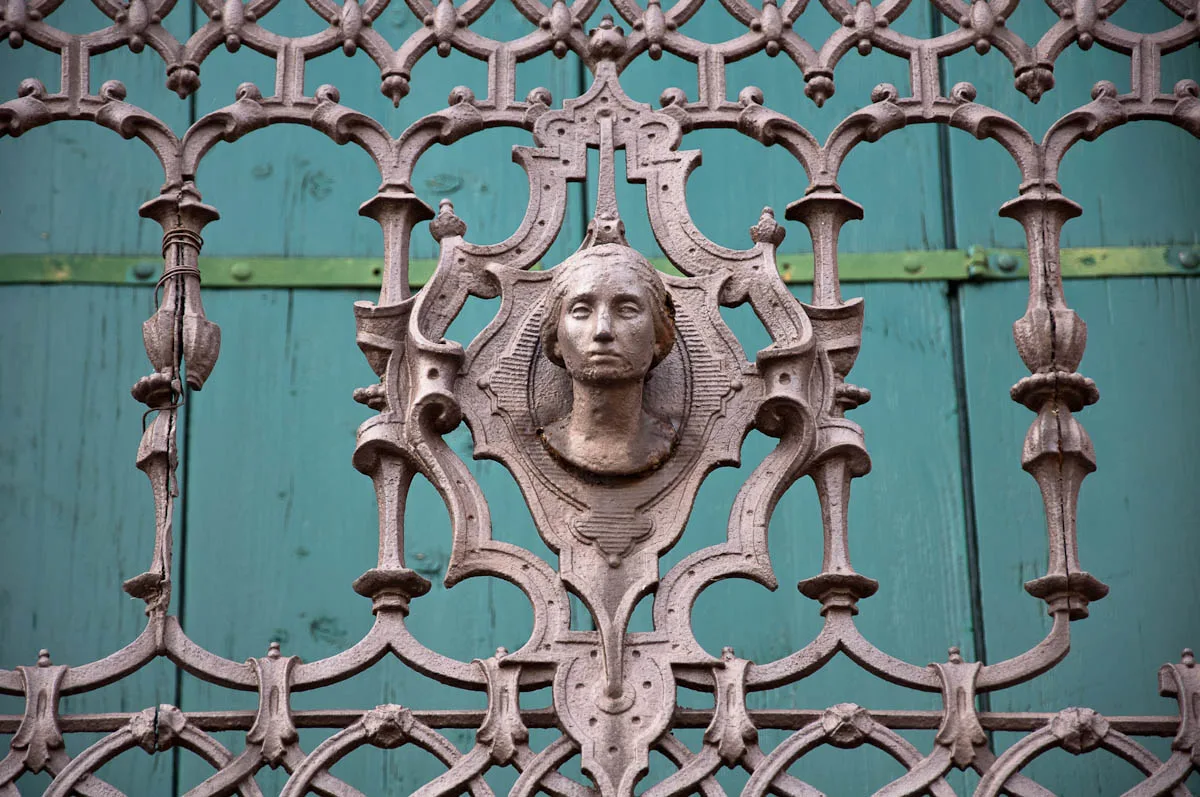
- Wrought-iron grills and decorative elements – there are some truly beautiful wrought-iron pieces all over the Veneto. From stunning balcony railings to intricate window grills, iron here has been treated with high levels of craftsmanship turning it into a thing of beauty. Go for a walk when you have ten minutes to spare and you will soon notice how many exquisite wrought-iron elements there are everywhere in the Veneto.
It is a really great thing to be able to stop for a moment and just pay attention to the little details around you here in the Veneto. Suddenly, little things start catching up your eye revealing rich, centuries-old traditions and a sense of beauty that are quite unparalleled. Take your time to discover as many details here as you can and you will see how learning the story about the smallest thing here can really open up the world right in front of your charmed eyes.
How to do this adventure if you are not in the Veneto, Italy?
Try looking at the place you live in with fresh eyes. See how many little details will pop out at you. From commemorative plaques to beautifully shaped street lights, gorgeous and intriguing details are everywhere just waiting to be discovered by us.
19. Visit Three World’s Firsts and/or Oldests
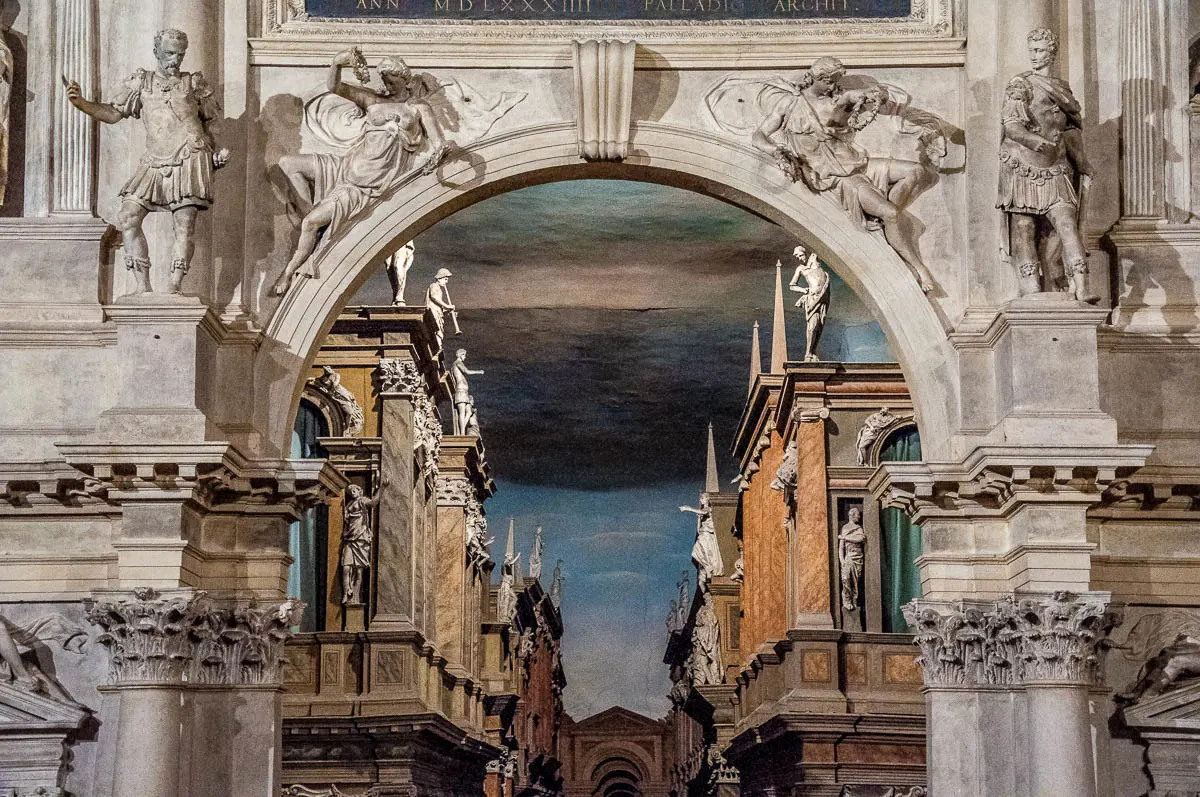
The Veneto is dotted with places and sights of worldwide importance. To make it even more exciting, several of them are the world’s first and/or oldest of their type. It is a great adventure to visit these truly remarkable spots where science, culture, and history were made.
Here are three such world’s first and/or oldest places and sights to see for yourself in the Veneto:
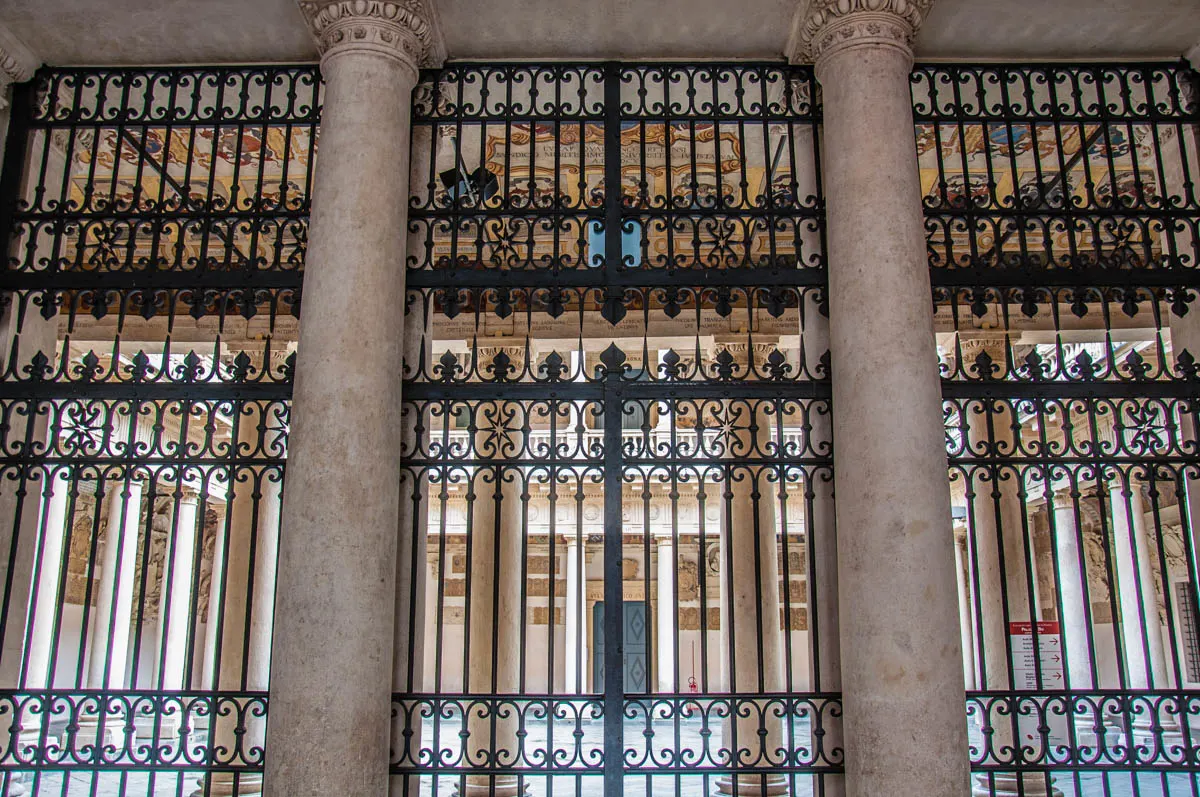
- World’s first permanent Anatomical Theatre in Palazzo Bo, Padua University – come here to see where human anatomy was properly studied and described for the very first time thus revolutionising medicine completely.
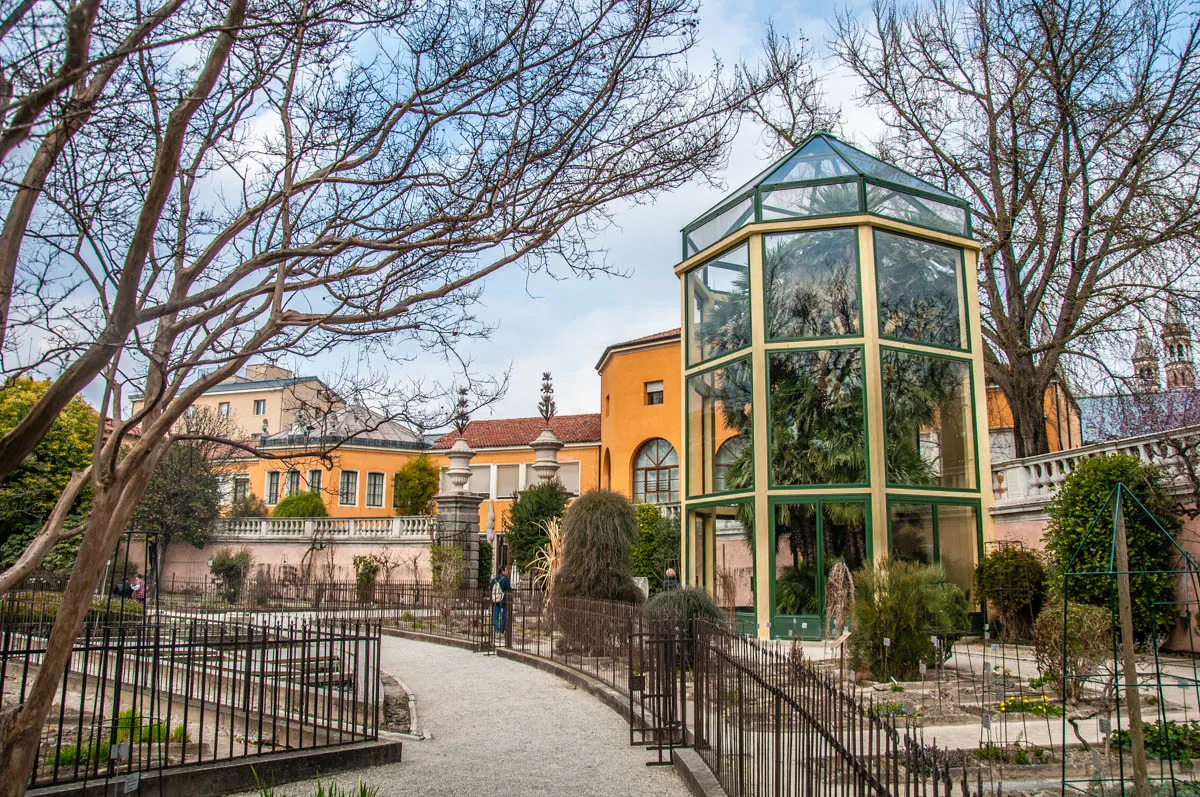
- Padua University’s Botanical Garden – founded in 1545 and nowadays a UNESCO Wolrd Heritage Site, this is the world’s oldest University botanical garden still in its original location.
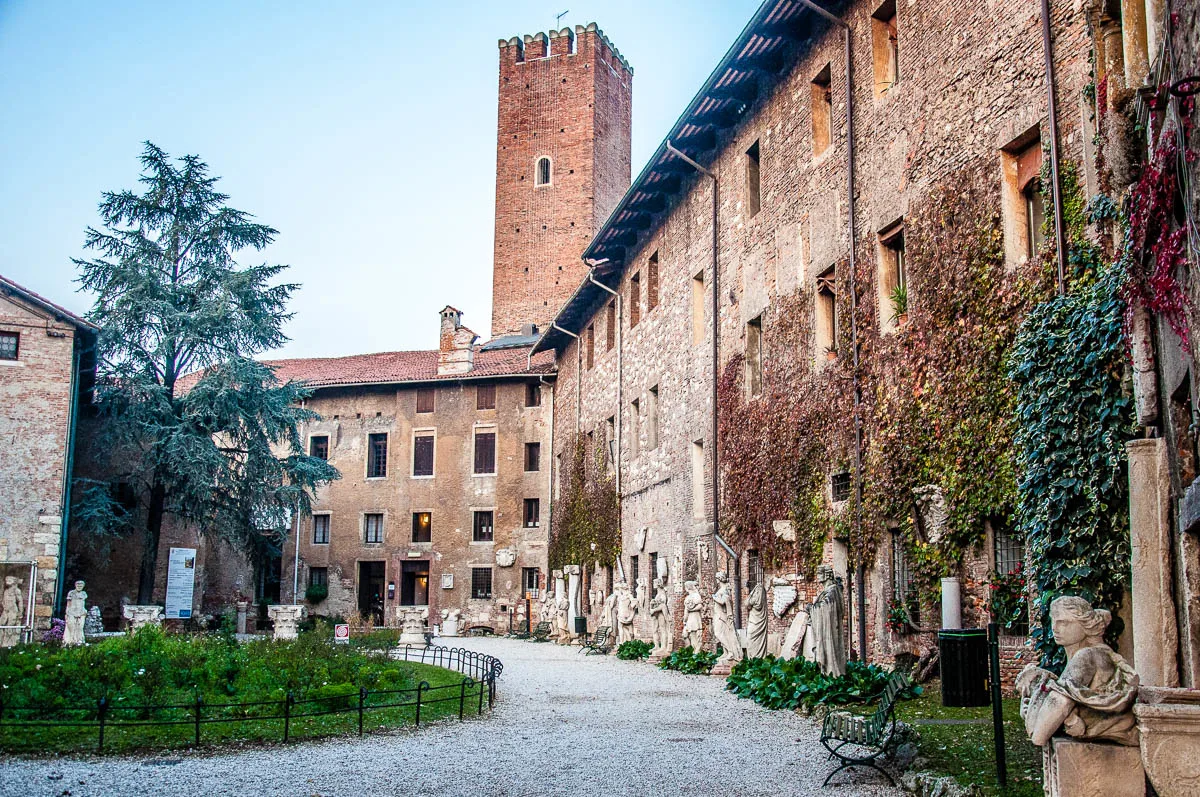
- Teatro Olimpico in Vicenza – designed by Andrea Palladio, this is the world’s first indoor theatre in masonry. In addition, it also has the world’s oldest surviving stage set still in use today.
It’s a wonderful adventure to find yourself at a place that has deeply influenced the development of science and art. Veneto is rich in such places and sights, so make sure that you see for yourself as many of them as possible.
How to do this adventure if you are not in the Veneto, Italy?
Again there are two ways to go about this adventure if you are not in the Veneto at present.
One is to do some research at your local library and bookshops to see what books and other written materials you can find about the above places and sights.
The other is to try to find some world’s firsts and/or oldests for the actual place where you live. You never know what amazing historic and cultural facts you may dig up if only you look a little bit deeper into this.
More information:
- The Birthplace of Modern Medicine
- Padua’s Botanical Garden and the Basilica of Santa Giustina – A Great Contrast of New and Old
- Exploring Vicenza: Teatro Olimpico
20. Indulge in a Spot of Market Shopping Therapy
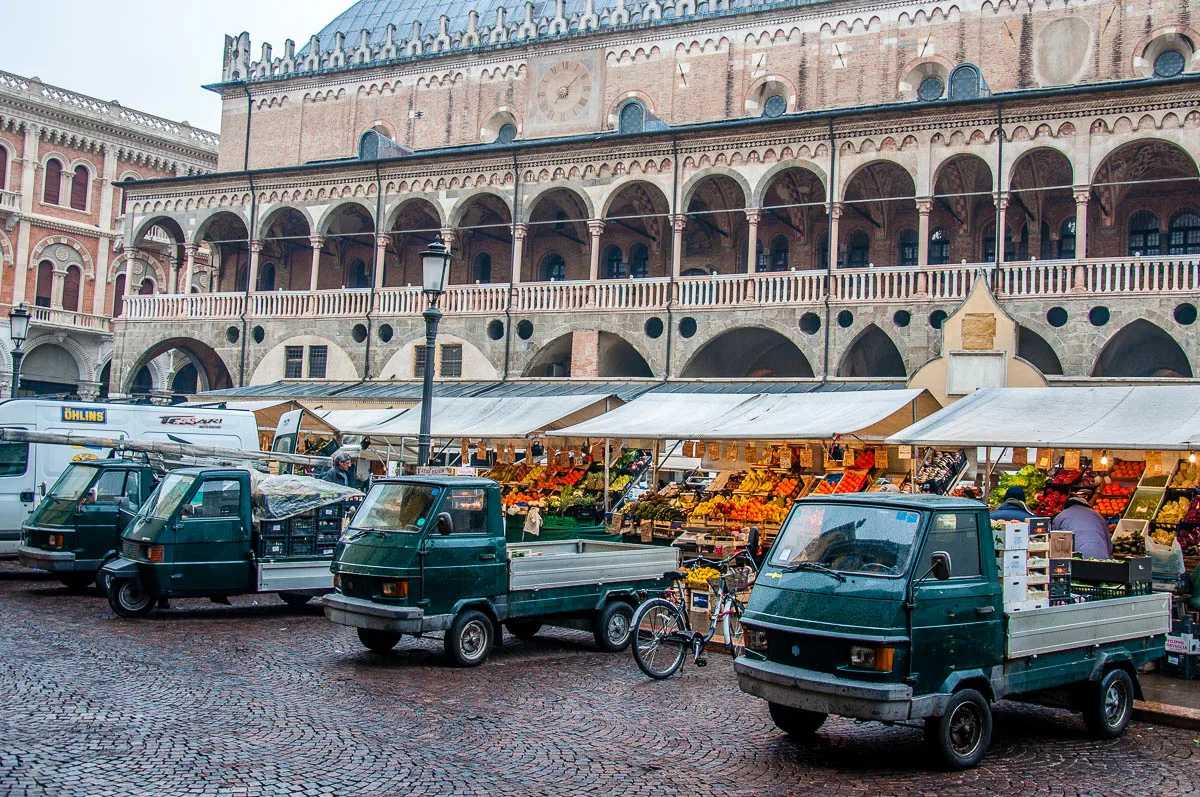
Shopping at one of the Veneto’s many markets is a pleasure not to miss. From markets selling locally grown fresh produce to markets specialised in antiques, you can spend many happy hours browsing the stalls set-up on market days all over the Veneto’s largest cities and smaller towns.
You never know what treasures you are going to find. It could be a whole crate of fresh tangerines for 5 euros, this year’s first white asparagus or a precious antique that would look so lovely on the mantel at home. Or it could be a vintage hat, decades-old pieces of Murano glass, some honey from local bees or new curtains sold very cheaply. How can you resist?!
So, here are three unmissable markets in the Veneto to get you started on this adventure:
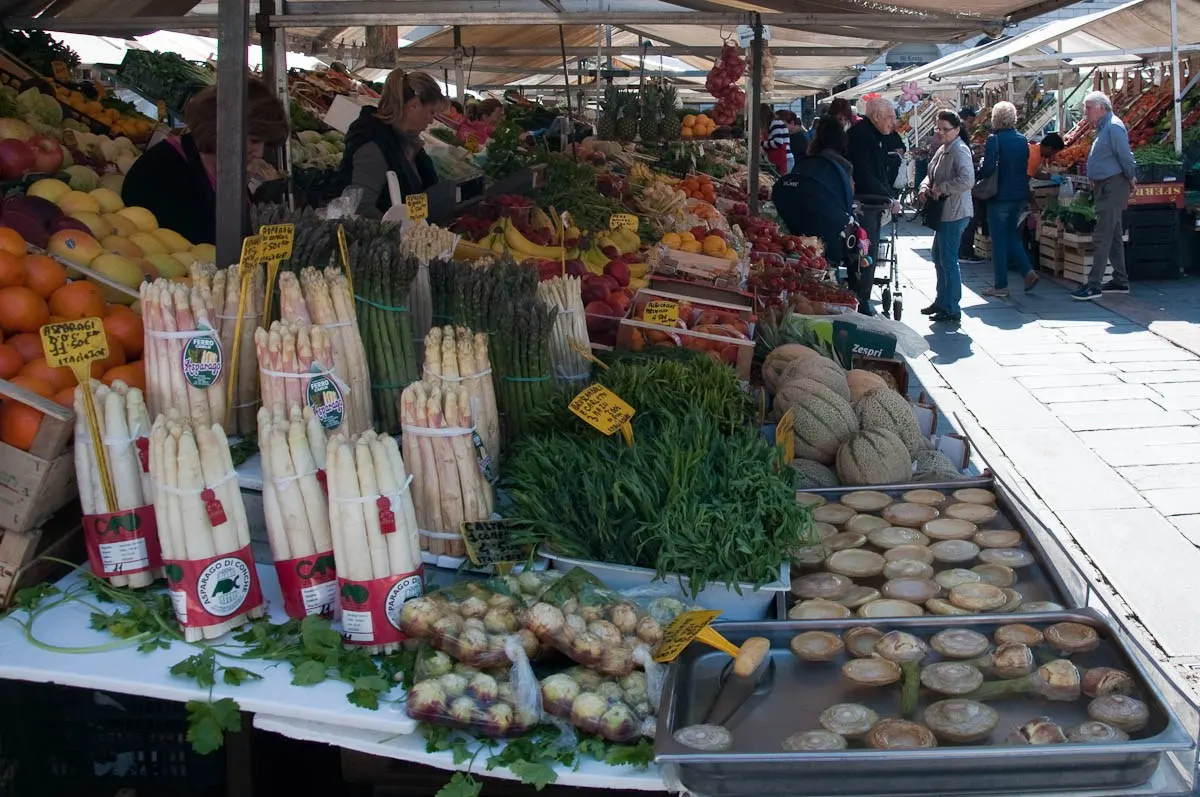
- 800 years old market in Padua – a market for fresh produce, household items and inexpensive clothes and accessories. This market has been held on Padua’s central squares daily (Sundays excluded) for the past 800 years.
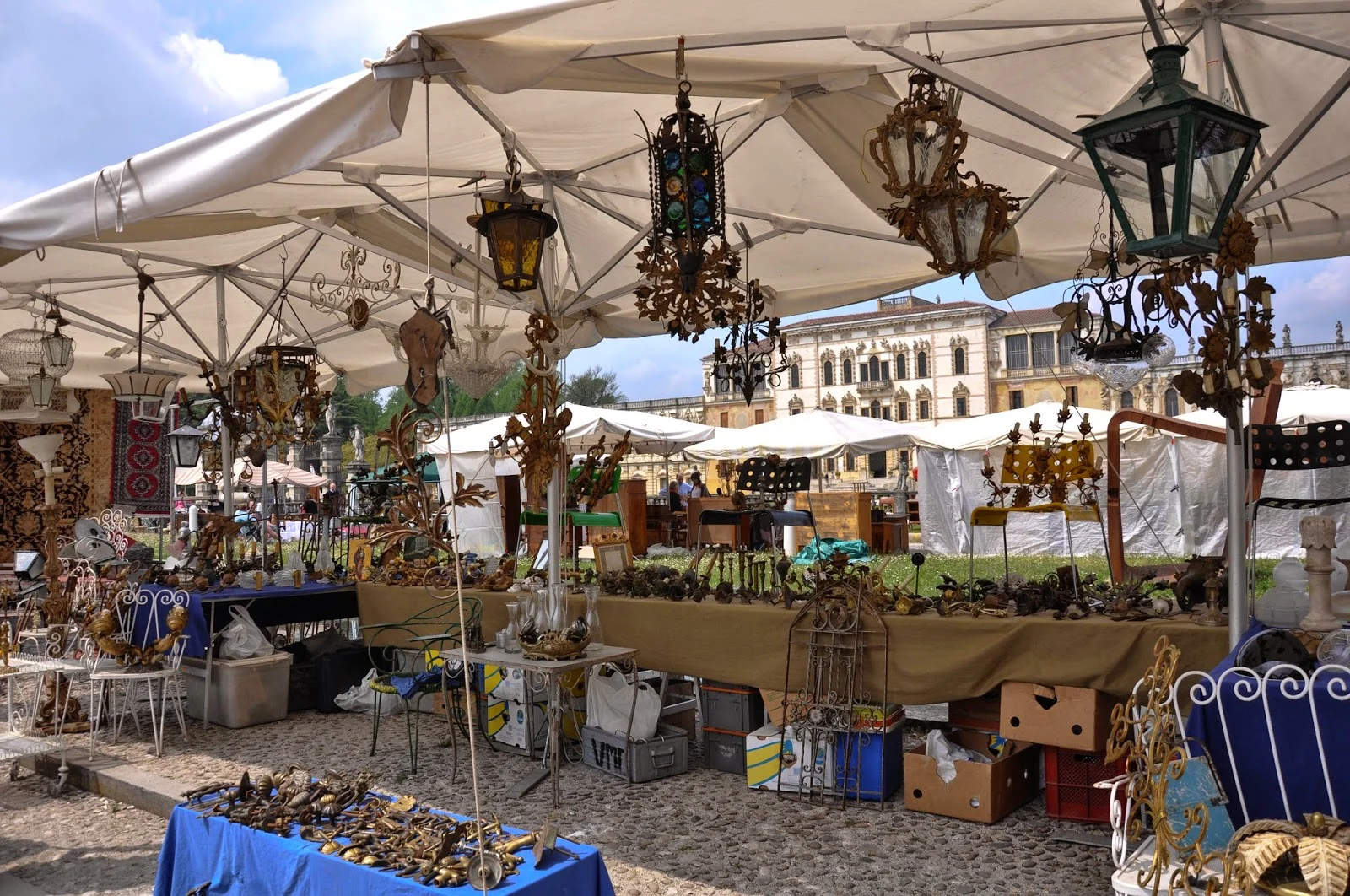
- Monthly antiques market in Piazzola sul Brenta – a huge market held on the last Sunday of the month opposite the stunning Villa Contarini. Here you can find all sorts of treasures – from old dolls and typewriters to beautiful paintings and porcelain.
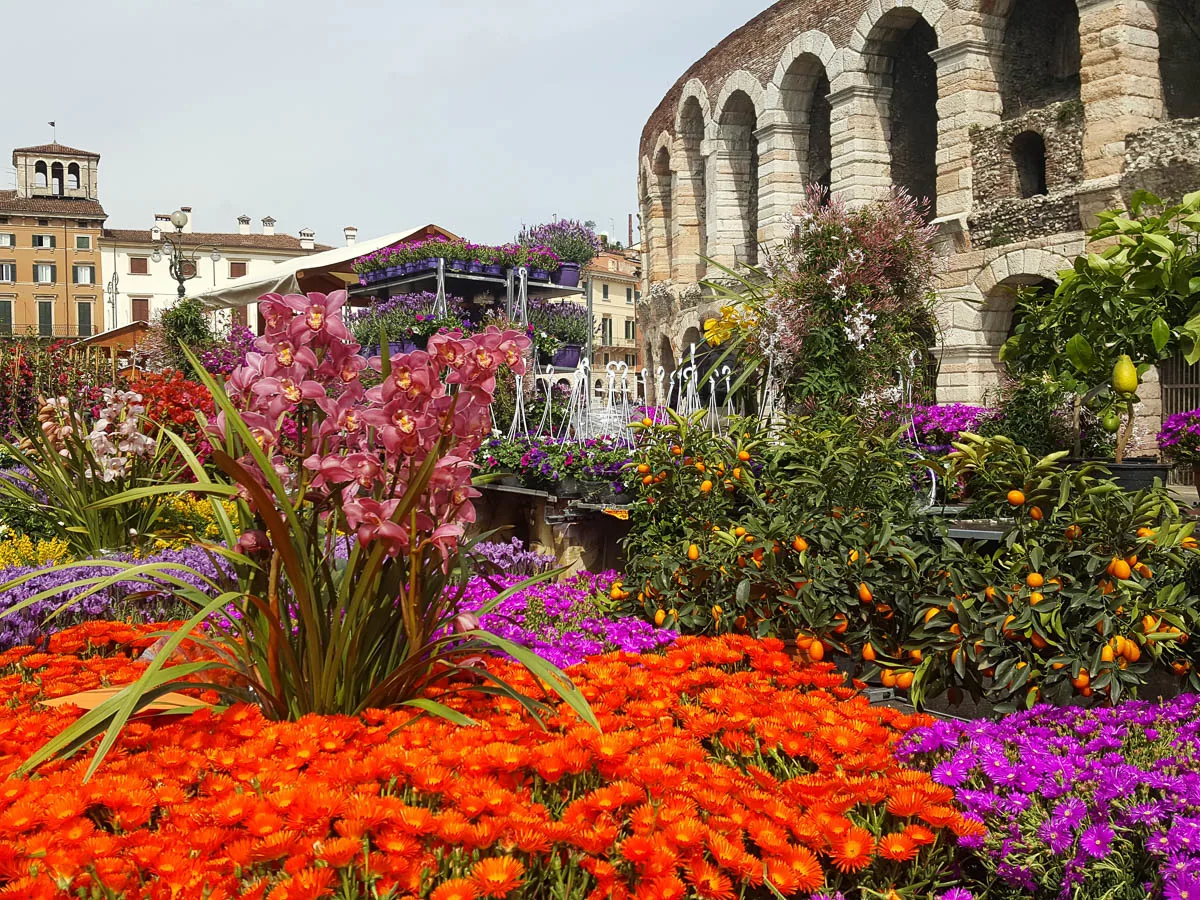
- Seasonal Markets – There are many seasonal markets held in the Veneto. Here are some of them: exciting Christmas markets where you can drink vin brule (that’s what they call mulled wine in the Veneto) while you are stocking on artisan and handmade Christmas presents; flower markets each spring selling hundreds of different potted and cut plants; artisan markets where local craftsmen and artisans showcase their abilities and handmade products; and even medieval markets recreating the atmosphere and the crafts of the Middle Ages.
There are many different types of markets in the Veneto. Exploring them is a lot of fun. Seeing old historical piazzas transformed into a large market with stalls selling a variety of things is a very cinematic experience. So, don’t miss it, make an adventure out of it.
How to do this adventure if you are not in the Veneto, Italy?
There must be a market or two (at least!) regularly held where you live. Find out when the respective market days are (daily, weekly or on special occasions) and make sure that you head there. Browse the different stalls, take delight in discovering new flavours and things. Chat with the vendors. Buy something that will give you a great pleasure in eating it or using it at home. You never know! Exploring markets can easily become a regular adventure for you to have.
More information:
- Italian Markets – 11 Types of Markets You Can Find in Italy
- Padua’s 800 Years Old Market
- Antiques Market and Modern Art – A Proper Mishmash
- Exploring Vicenza: Flower Power
- Christmas Markets – Best 5 Things to Buy This Festive Season
21. Lose Yourself

Exploring the Veneto in search of an inner sparkle and joy is not all about seeing unmissable sights and doing bucket-list types of things. Sometimes, you just need to take it easy and just go with the flow. Where it will take you and how you will feel all the way through this improvised journey is the best adventure of them all.
So, for this adventure in the Veneto, I suggest that you simply lose yourself! In a very safe and controlled manner, mind you. Yet, again, walk out of the door without a plan in mind and see where the streets are going to take you and what treasures you will find along the way.
Here are three of my favourite places in the Veneto to lose myself in. All three of these cities have dozens if not hundreds of must-see sights. Yet uncovering their lesser-known corners is the most satisfying way to experience them and to make them your own. The best way to go about it is to simply lose yourself in their maze of streets and keep your eyes open and ready to take in the unexpected beauty you will come across.
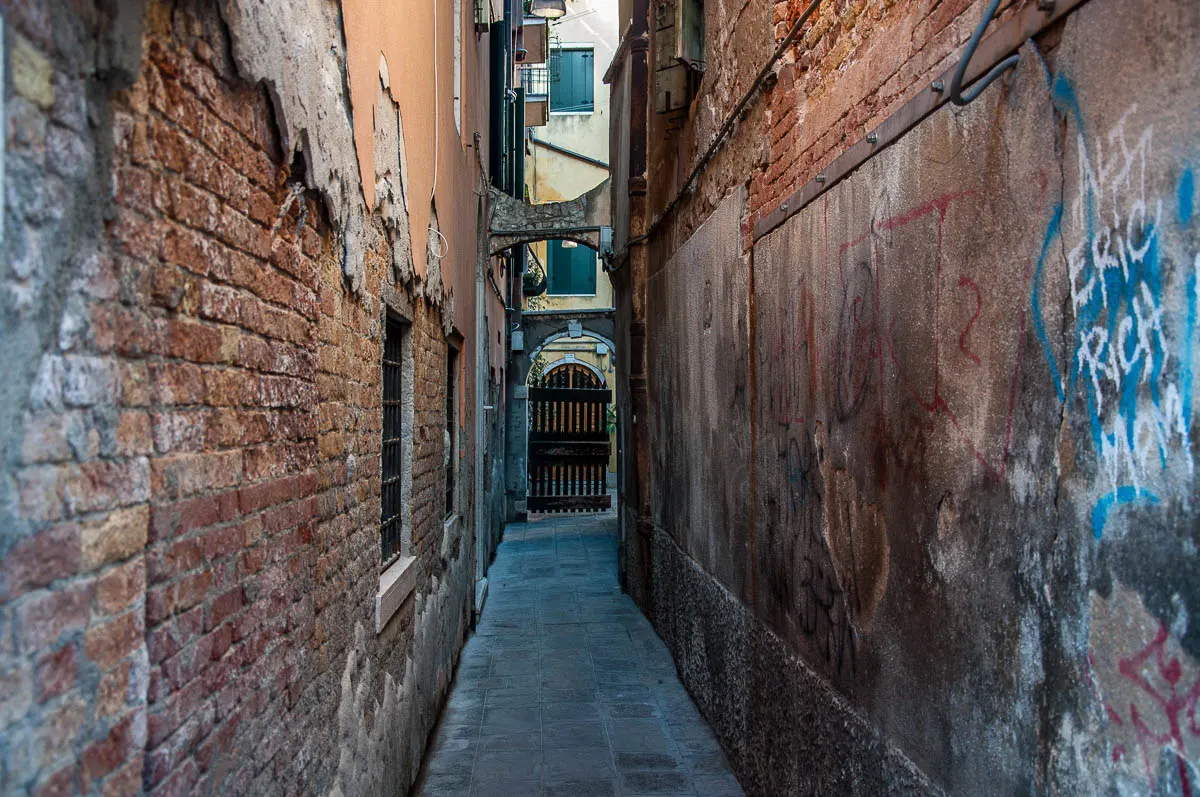
- Venice – Venice’s other name could simply be Maze. The labyrinthine streets of the city of water curve and twist in a complicated and ever-surprising lattice. Losing yourself in it is a great way to discover churches, houses, craft studios, bridges and stories which, otherwise, would have stayed completely off your radar.
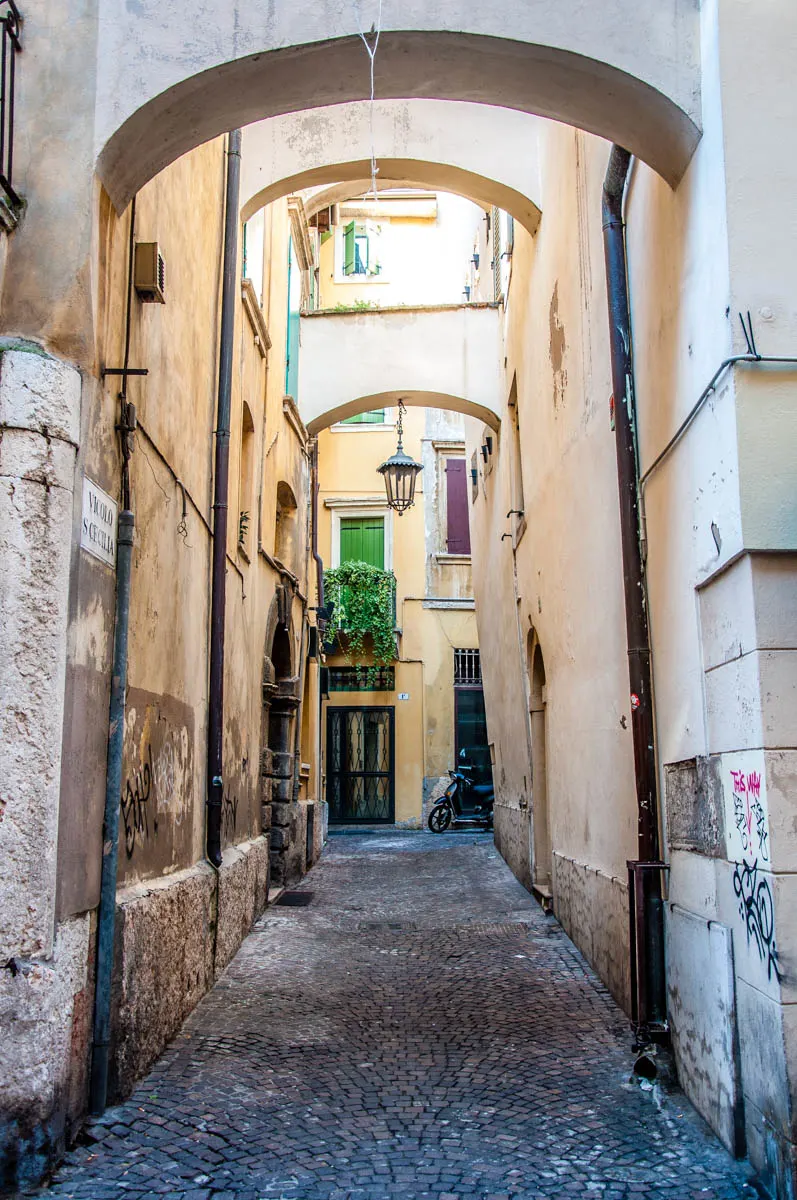
- Verona – the beauty of Verona comes alive when you lose yourself in its colourful streets. Pastel buildings tower above your head, iron-wrought fences and railings make it all look so good, cobbled paths lead you away from the main squares to the city’s medieval heart.
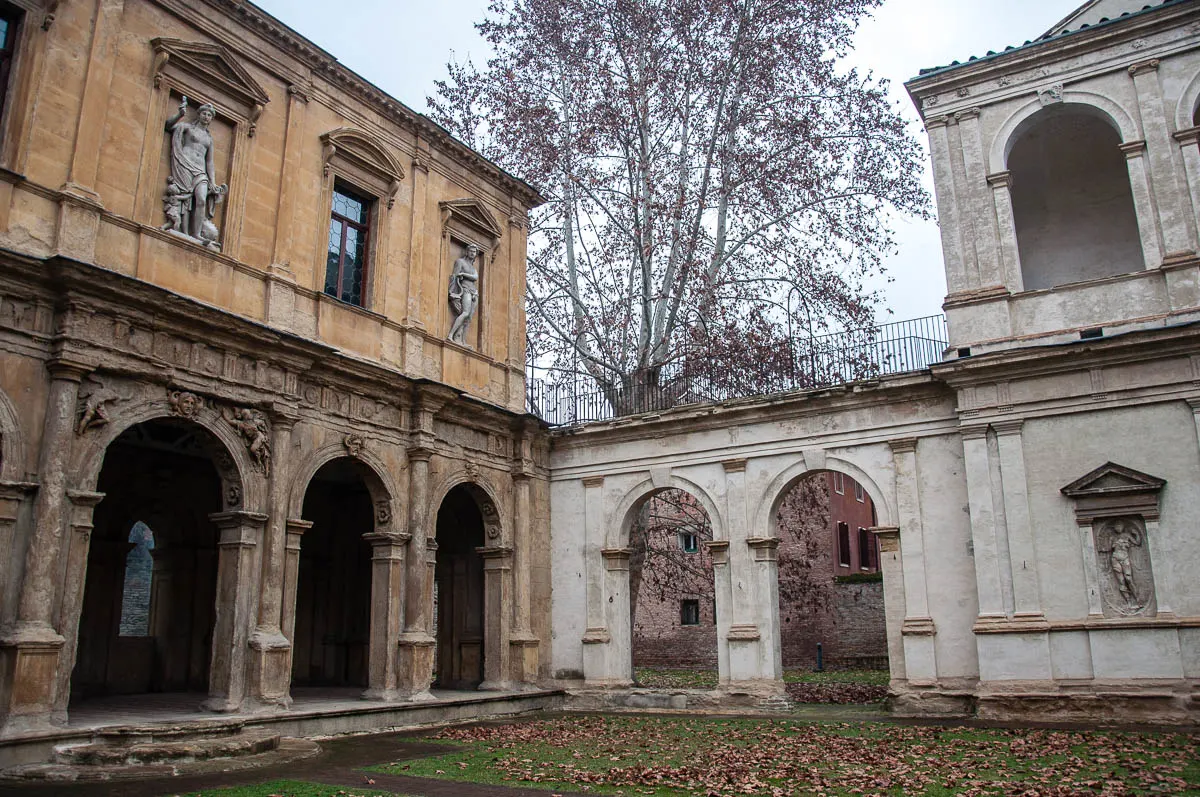
- Padua – Padua hides many surprises if only you can tear yourself away from the city’s main streets and sights. A centuries-old Jewish ghetto, small churches with priceless works of art, even the first fully Renaissance buildings in the Veneto are all here but off the beaten track.
Just step away from the main square, follow your gaze caught by a small chapel or a hidden garden just off the central street and you may be in for the best surprise. Take this adventure and let your feet lead you. Then follow with your heart!
How to do this adventure if you are not in the Veneto, Italy?
Are there any corners of the city or town where you live that you have not explored yet? As long as they are safe to venture in, put an hour aside to lose yourself in them. This way, many undiscovered treasures may leap out at you. From a small museum on a side street to a fab coffee house you have never been to before.
Just give it a try!
More information:
- 20 Best Things to Do and See in Verona, Italy in One Day – The Ultimate Itinerary with Photos and Tips
- 10 Reasons to Stay in Padua During Your Italy Holidays
- Cornaro Loggia and Odeon in Padua, Italy – History, Architecture and Art
22. Discover Veneto’s Bookshops and Libraries
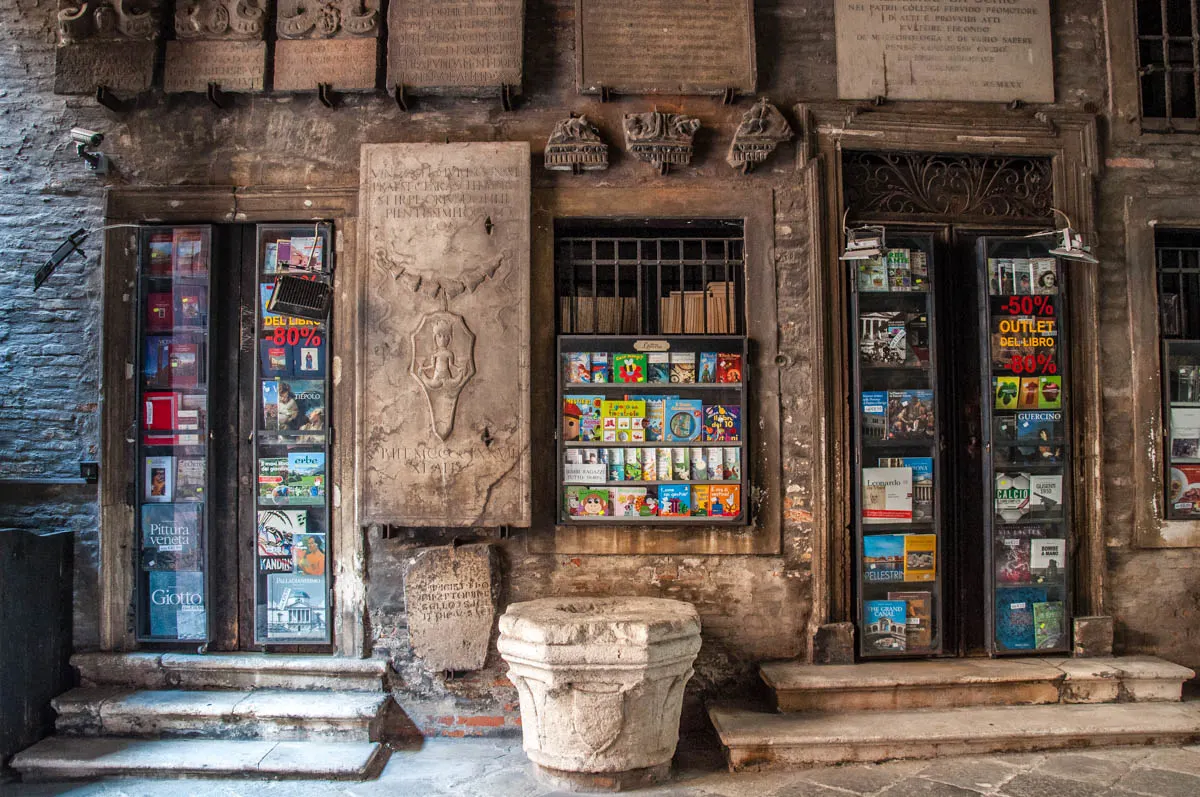
Delving into a book is one of the best sensations ever! I hope you agree. If you do, then you will love this adventure as I am going to galvanise you to visit as many of the Veneto’s bookshops and libraries as you can. Even if you don’t speak Italian!
Some of the world’s oldest and most important libraries are in the Northern Italian region of the Veneto. So, don’t miss a chance to visit them and admire not just their books but also their architecture and history. In addition, there are many bookshops dotted all over the Veneto’s cities and towns. Visiting them to have a look at books – both freshly printed and second-hand – is a lovely experience.
So, here are some suggestions on how to start on this adventure in the Veneto. By all means, don’t limit yourself to them. You are bound to discover a whole plethora of bookshops and libraries here to spend many happy moments at.
- Libraries – in Verona you will find the Biblioteca Capitolare – founded in the 5th century AD, this is the world’s most ancient library in the context of Latin culture. In Venice, don’t miss the Biblioteca Marciana – a centuries-old library with stunning Monumental Rooms and many precious manuscripts and printed books. In Vicenza, pay a visit to my personal favourite – Biblioteca La Vigna where you can find hundreds of books dedicated to food and rural life.
- Bookshops – in Bassano del Grappa you can visit one of Italy’s most beautiful bookshops – Libreria Palazzo Roberti. In Vicenza, don’t miss my personal favourite – Libreria Athena with a large selection of discounted books. Plus, in all cities of the Veneto, you will find branches of Italy’s main bookstores like Libreria Mondadori, for example.
Books have been first hand-copied and then printed in the Veneto for centuries. Exploring both historic and contemporary libraries and bookshops here is a great adventure opening your eyes and soul to a huge world of knowledge. Don’t miss it!
How to do this adventure if you are not in the Veneto, Italy?
I think this is the easiest adventure to have no matter where in the world you may be. Just head to the nearest library and/or bookshop and spend many happy hours there browsing through the many volumes they have. You are bound to find dozens of books you simply must read. Enjoy!
23. Savour Bigoli
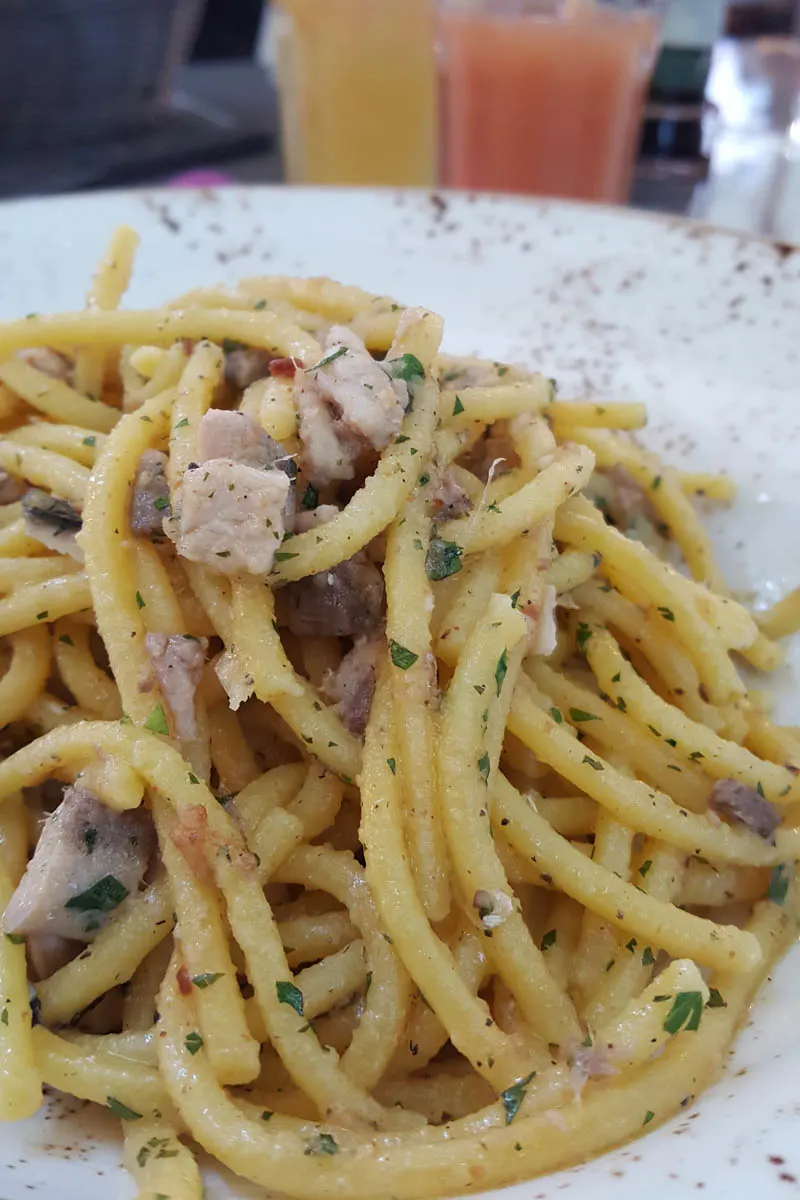
If pasta is synonymous with Italy, then bigoli is the synonym for the Veneto. So, for this adventure, you need to procure a large plate of bigoli with either duck- or sardine-based sauce and tuck in.
Sounds good, doesn’t it?!
But what are bigoli? Bigoli are long and thick pieces of pasta with a rough porous texture which absorbs the sauce well. Traditionally, they are made with wholewheat flour, salt and water. Sometimes eggs and even butter can be added to the dough in order to make the bigoli softer and more flavoursome.
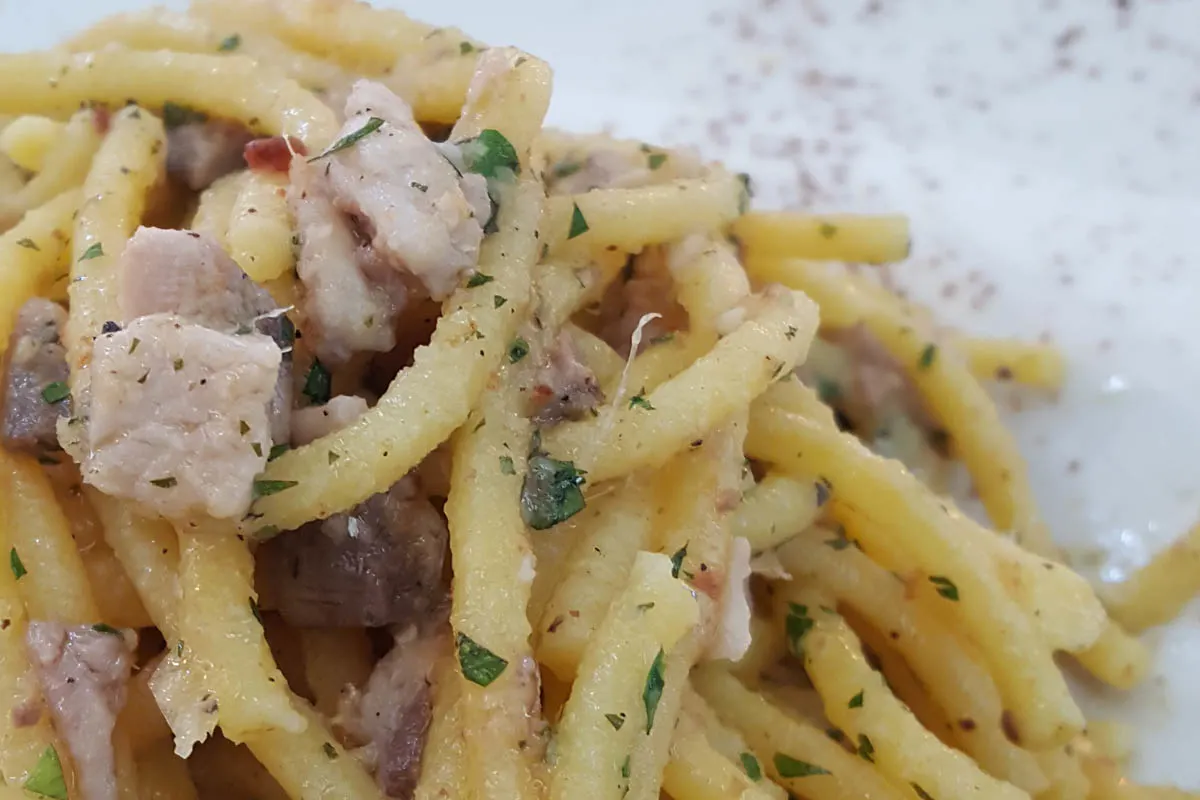
Some regional varieties of bigoli – like the ones from Bassano del Grappa – are made with buckwheat which makes them darker in colour.
The bigoli are made by extruding them through a special press called bigolaro or torchio. Here it is!
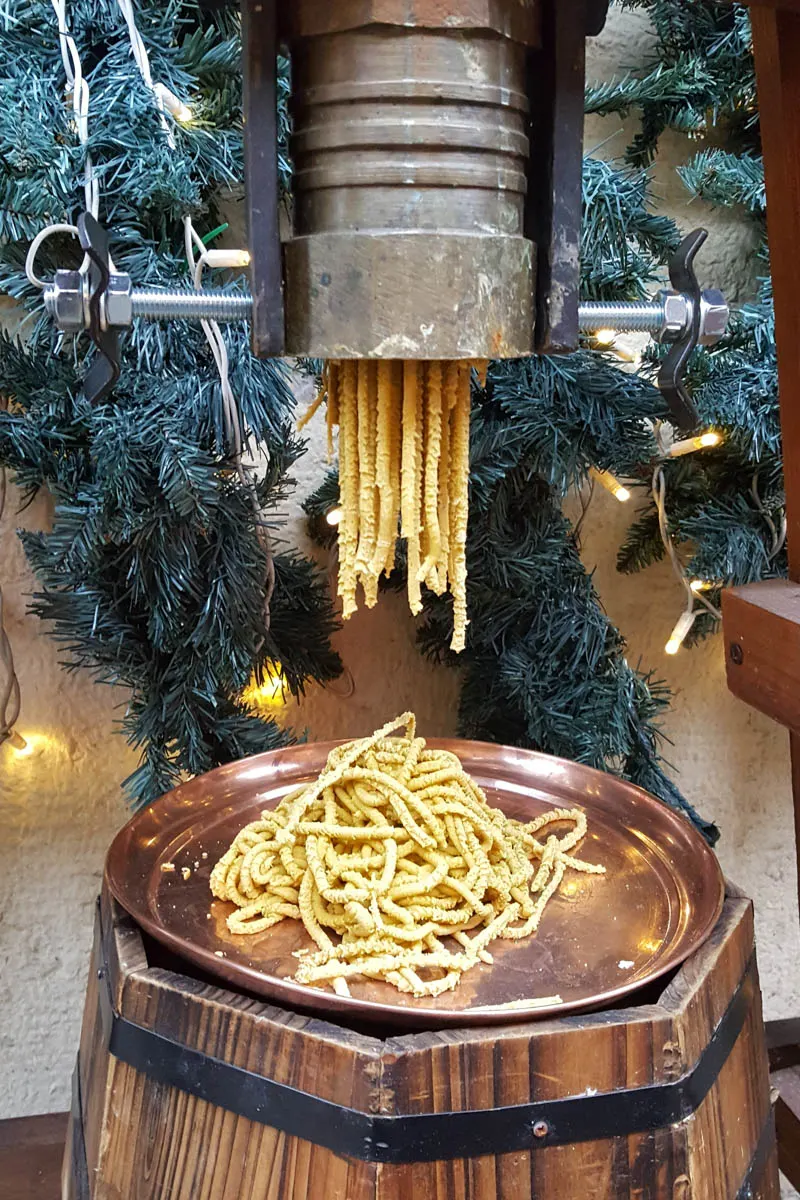
So, this is an easy and tasty adventure you can easily tick off your lost in any city or town of the Veneto. Don’t miss it!
Alternatively, buy a pack of fresh or dry bigoli from a local supermarket here and try to make your own bigoli at home.
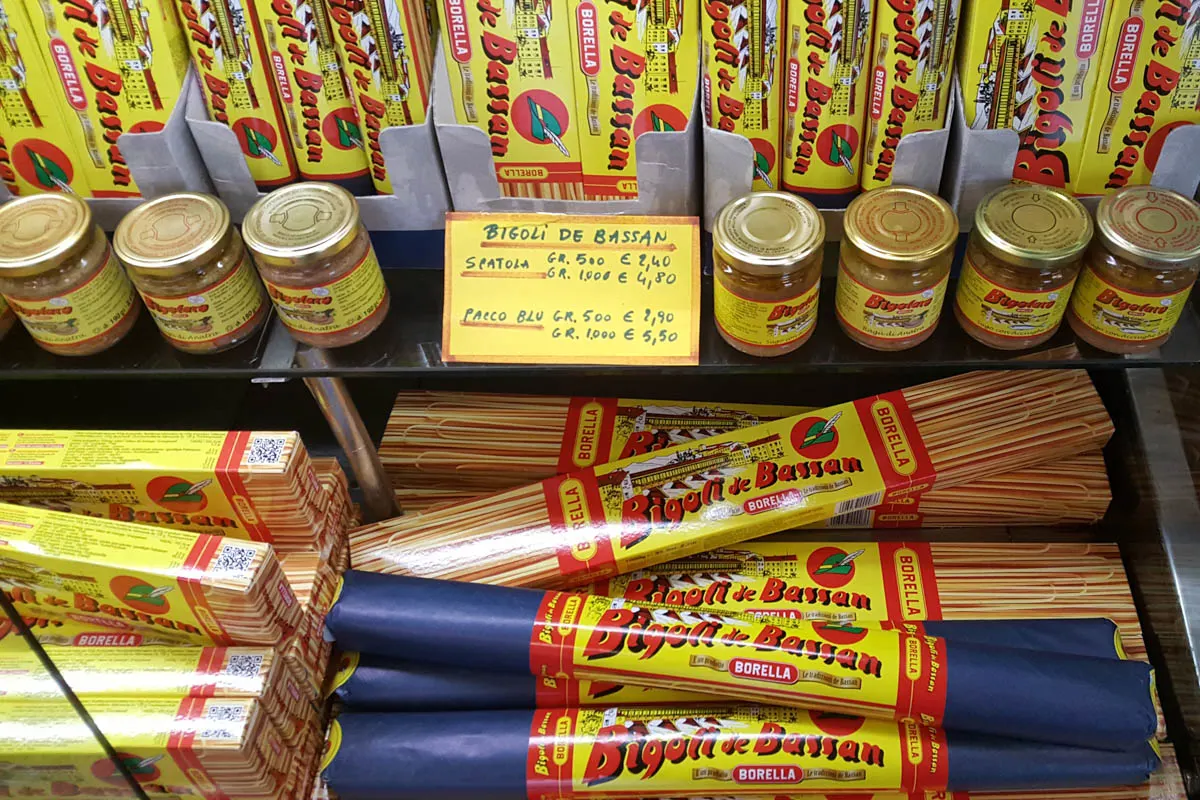
How to do this adventure if you are not in the Veneto, Italy?
You may be able to buy dry bigoli from a local Italian deli. Then search for a good traditional recipe for a bigoli sauce online and give it a try. Enjoy!
24. Visit Veneto’s Casoni
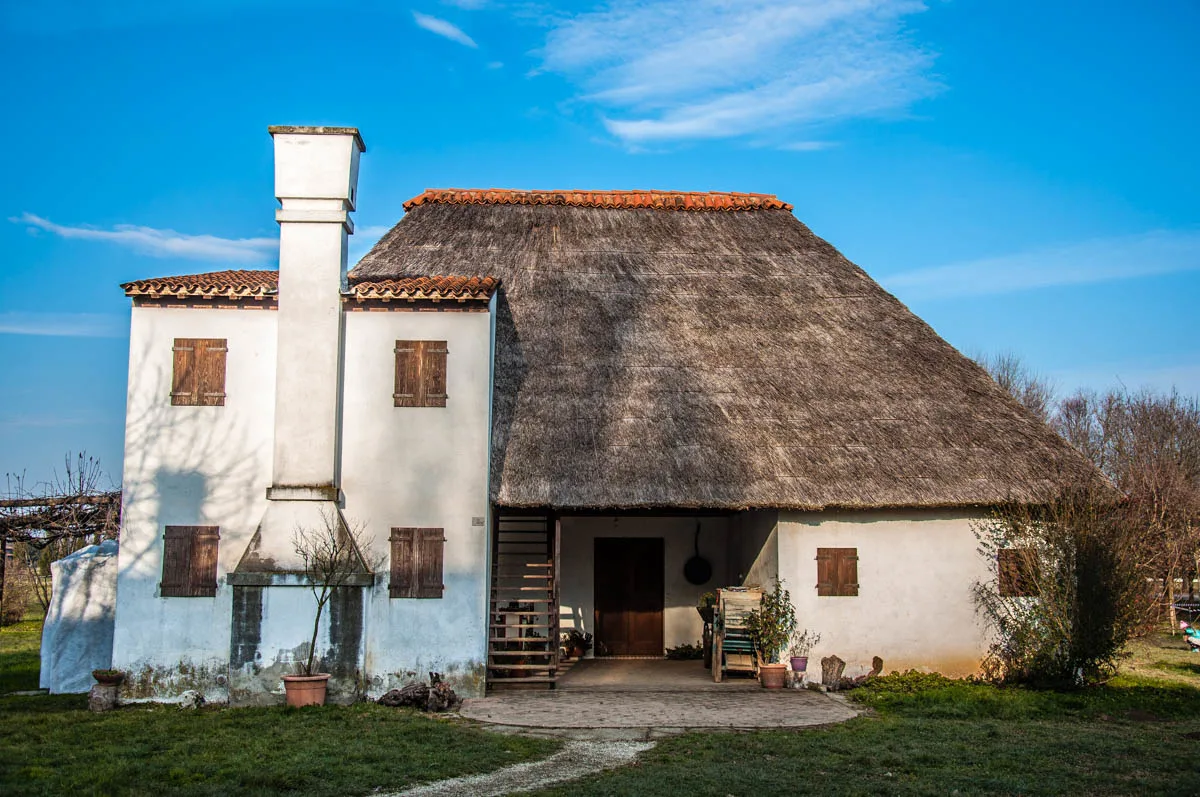
The Veneto is famous for its elegant and sophisticated architecture. Some of the greatest architects of all time worked here designing palaces, villas, and public buildings that to this day continue to inspire new constructions all over the world.
Yet some of the Veneto’s most curious and original buildings are its so-called casoni – traditional houses built by the poor rural communities. The casoni’s history stretches over a millennium. A casone would house the different generations of the same family, their farm animals, and all their earthly belongings – from kitchen equipment to prepare the daily helping of polenta to agricultural tools.
The casoni reached their most complex structures between the 16th and the 18th centuries and with their distinctive straw roofs they could be seen all over the Veneto on the edge of the properties of the large landowners.
Nowadays, there are only a few casoni that have survived the change of times in the Veneto’s countryside. Visiting one or more of them is a great adventure bringing you closer to the rural history of this exciting Northern Italian region:
- You can find information about five different casoni – both original and newly built – to visit in the Veneto at this link;
- Alternatively, you can visit the Parco Etnografico di Rubano where there is a casone built according to the old traditions and furnished with all sorts of tools, furniture, and equipment that a rural family would use a century or so ago.
Another way to take on this adventure is to see a different type of casoni in the Veneto. The same word is used here to describe traditional fishing huts. Especially famous are the ones near the town of Caorle and the ones in the Delta of the river Po.
How to do this adventure if you are not in the Veneto, Italy?
While the casoni are typical for the Veneto, you can delve into researching and visiting old houses which are typical for the place where you live. A local ethnographic museum will be the first point of departure to give you ideas about where to look and what to expect.
25. Surround Yourself with Music
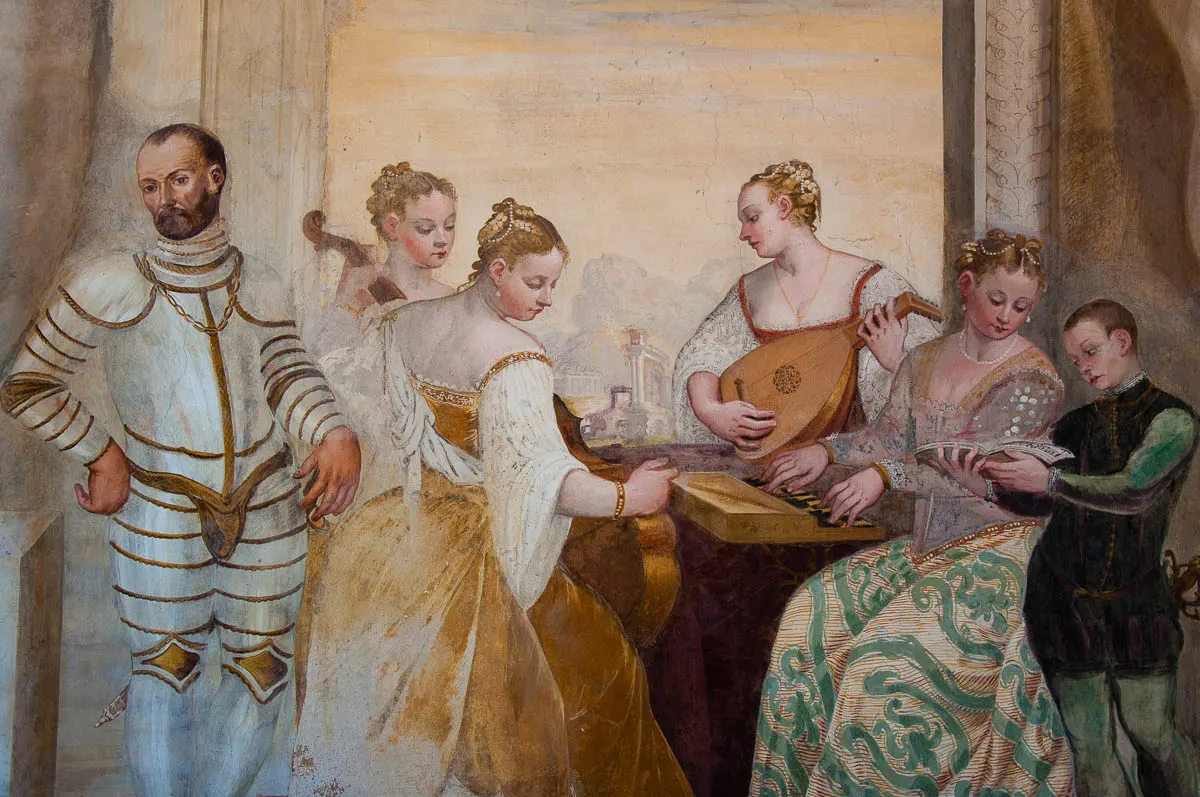
If music is the food of soul than the Veneto is one of the best places to surround yourself with music and feel your soul happy and full. From church concerts to large opera events and quirky jazz festivals, in the Veneto, there are countless opportunities to get close to music and to enjoy it in some stunning surroundings.
Here are some suggestions to get you started on this musical adventure:
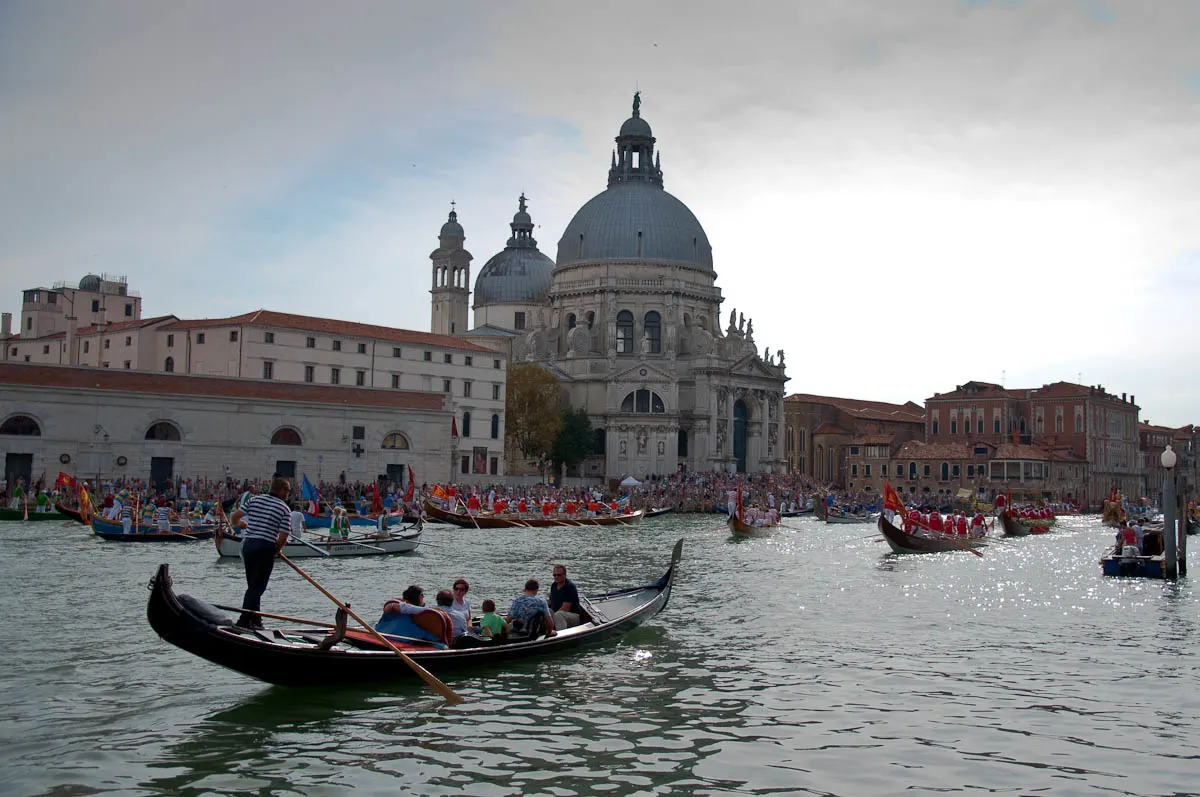
- Concerts and performances in churches and museums – mand museums any churches in the Veneto regularly hold excellent musical events. Often, they are also free of charge. For example, check the free daily organ performances at the Basilica of Santa Maria della Salute in Venice.
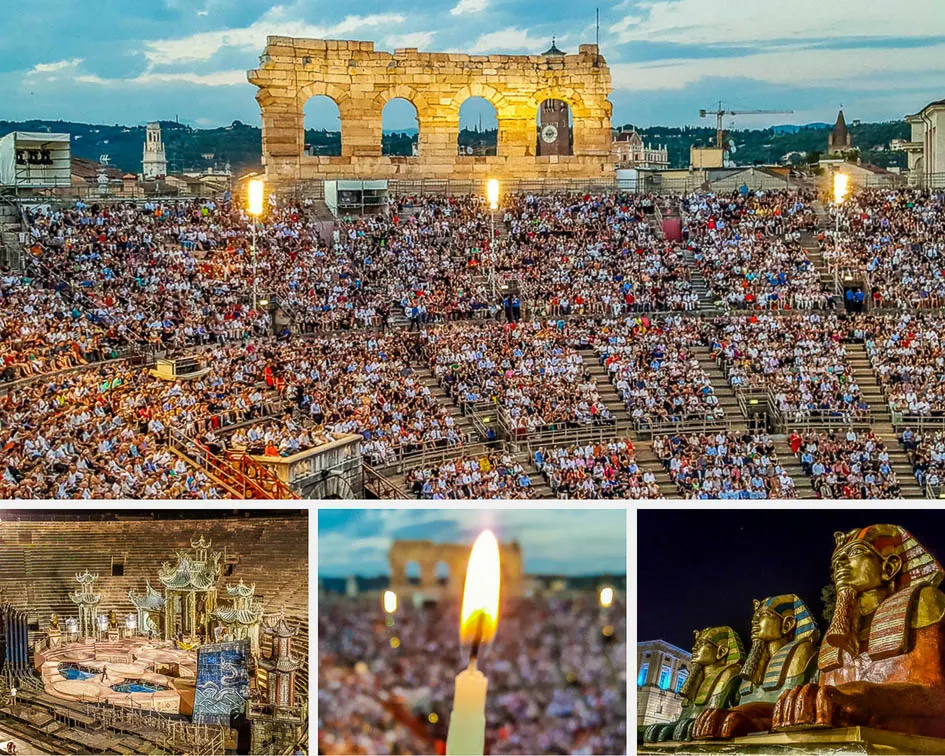
- Music festivals – from Verona Opera Festival – easily the world’s most spectacular opera event – to the Festa della Musica Attiva (held in the splendid Villa Contarini in Piazzola sul Brenta) and the International Festival of Choirs and Orchestras (held in Venice and Jesolo), there are dozens of musical festivals held all over the Veneto all through the year.

- Museums of music and Opera Houses – don’t miss the Museum of Music in Venice and/or the splendid La Fenice in Venice.
Delving into the world of music is a beautiful and deeply satisfying adventure in the Veneto. From old-fashioned musical instruments to some of the world’s most famous musical pieces – this Northern Italian region has a lot to offer to the curious mind seeking to expand its horizons. Plus, the modern piano was invented in Padua – one of Veneto’s main cities!
How to do this adventure if you are not in the Veneto, Italy?
Actually, this is a very easy adventure to do anywhere in the world. On one hand, you can simply spend some time listening to music created by the composers who were born and/or lived and created here. Some famous names are Claudio Monteverdi, Tomaso Albinoni, and Antonio Vivaldi. On the other hand, you can enjoy the music of musical formations, orchestras, and bands who have taken their inspiration from the Veneto and its musical traditions. For example, Rondo’ Veneziano.
More information:
- Exploring Venice: The Museum of Music
- Verona Opera Festival – A Guide to the World’s Most Spectacular Opera Event
- Teatro La Fenice in Venice, Italy – The Opera House with the Phoenix Factor
26. Follow a Thematic Route
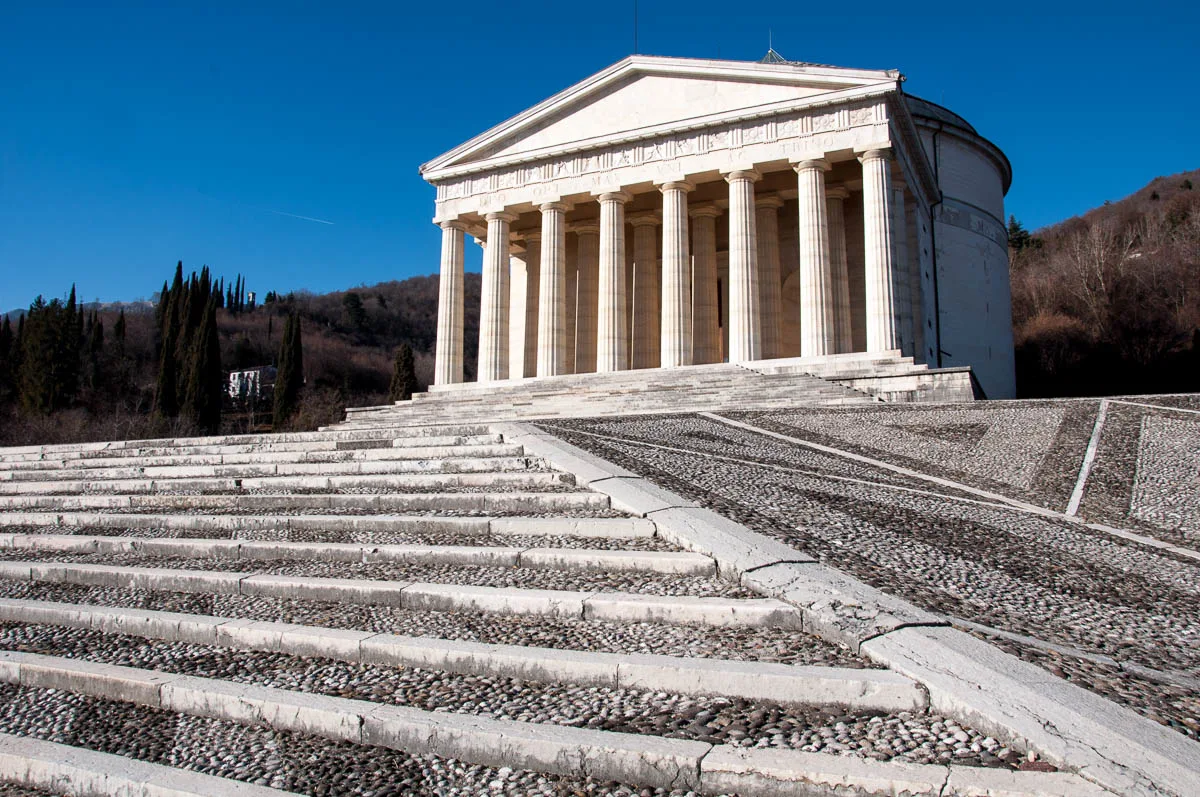
One of the best ways to explore the historical, cultural and gastronomical heritage of the Veneto, is to follow one of the several thematic routes which crisscross the territory of this Northern Italian region. Dedicated to art, architecture, and food (among many other things) these routes (called strade in Italian) take you through landscapes of pure beauty and help you discover sights of local and international interest.
Here are three of the Veneto’s dozens of thematic routes to help you start on this adventure:

- The Architecture Route – discover a trail of architectural gems in the Province of Treviso in the Veneto. From elegant patrician villas to modern architectural masterpieces, this is one road trip to remember.

- The Wine Route of the Euganean Hills – taste the wines of the Euganean Hills – a volcanic group near Padua. You can travel from vineyard to vineyard or sight to sight by car or bike.
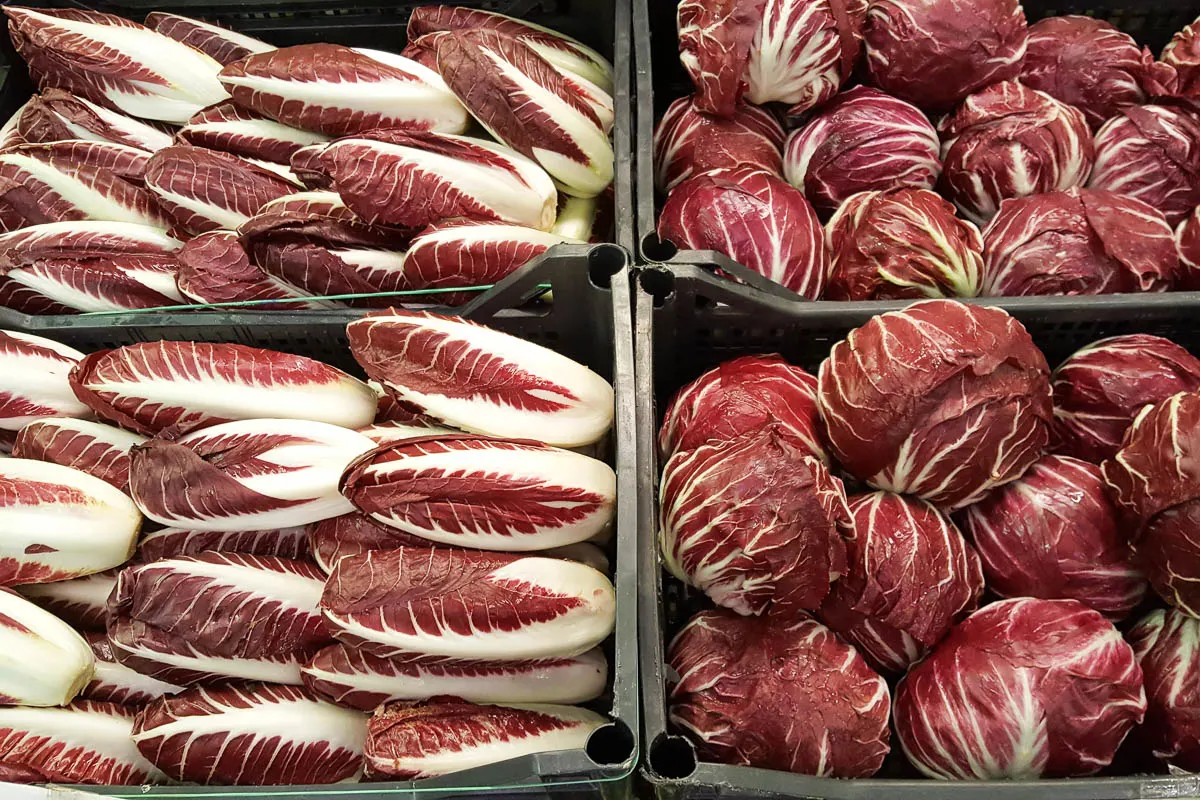
- The Radicchio Route – savour the leafy radicchio both fresh and incorporated in many different dishes. Traditionally grown in the province of Treviso, radicchio comes in several varieties and has a slightly bitter refreshing taste.
Following a thematic route is a great adventure to have in the Veneto. Each route takes you on a journey to discover local traditions, foods and historical events so that you can develop a better understanding of this land and feel closer to it.
How to do this adventure if you are not in the Veneto, Italy?
Check the website of your local tourist organisation for any particular routes or itineraries that have been set up to promote local foods or historic events. Follow the suggestions given. This way you may discover many local traditions – both culinary and artistic – that you have not been aware of before.
27. Fall for Polenta
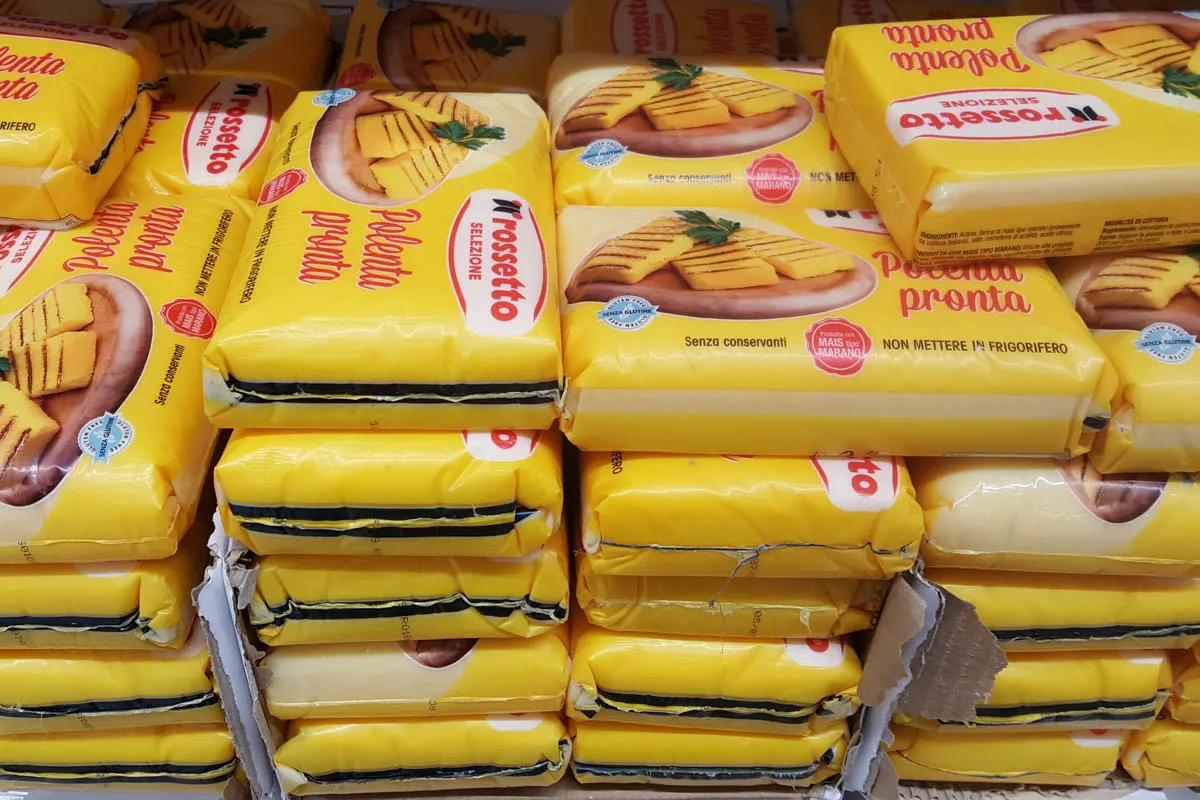
Made from cornmeal, polenta is the colour of gold, it’s easy to prepare and it goes with everything. Plus, for centuries, polenta has been the staple dish of the Veneto. You cannot come here and not tuck into a plate of flavoursome polenta – either as mash or in slices. Otherwise, you would be missing on one of the most authentic expressions of what the Veneto stands for.
So, work up an appetite and head out on this adventure in the Veneto. Here are three options on how to approach it:
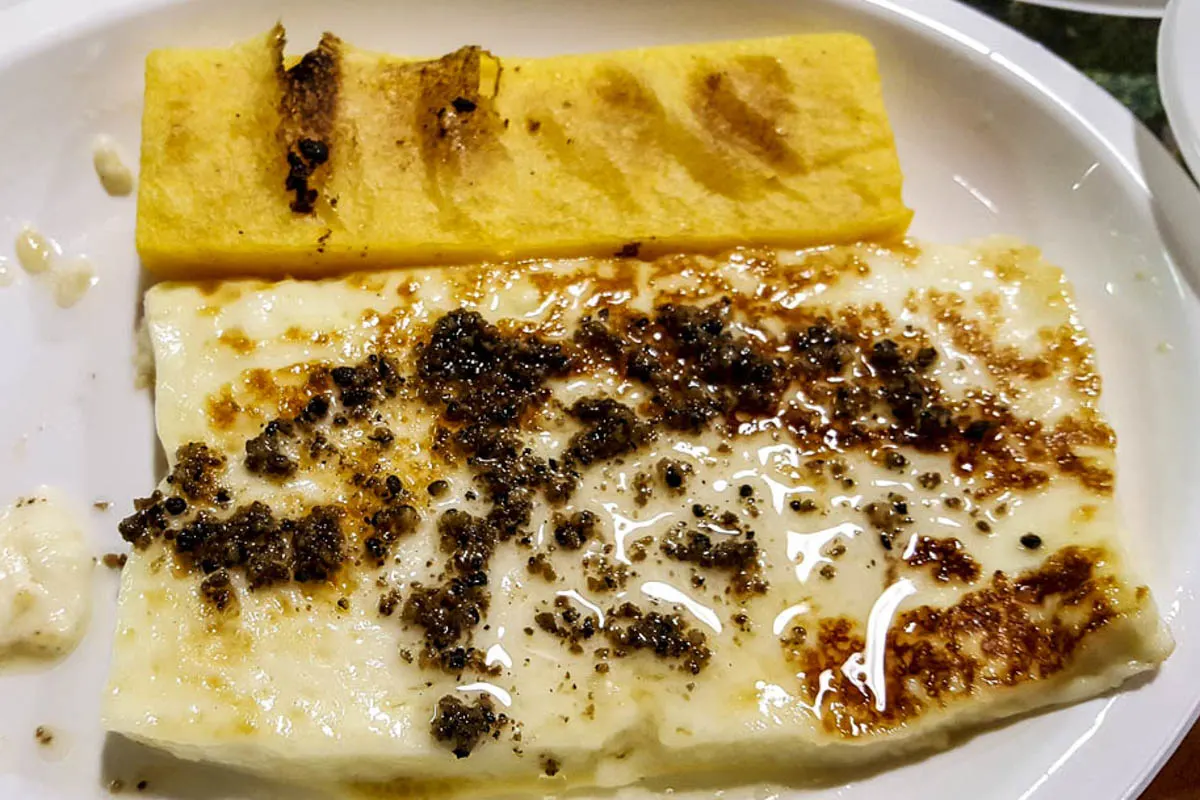
- Order polenta as a side dish in a local restaurant or trattoria in the Veneto. Polenta really goes with everything. It absorbs well the juices of the main dish and it is especially more-ish when combined with a generous helping of grilled cheese.

- Make it your goal to savour white polenta. It’s made of white corn called Biancoperla del Veneto. This is an ancient variety of corn that used to be cultivated in the fields around Padua, Treviso, and Venice. After a decline in its production in the middle of the 20th century, nowadays special efforts are made to re-establish this traditional for the Veneto type of corn on the table of the locals.
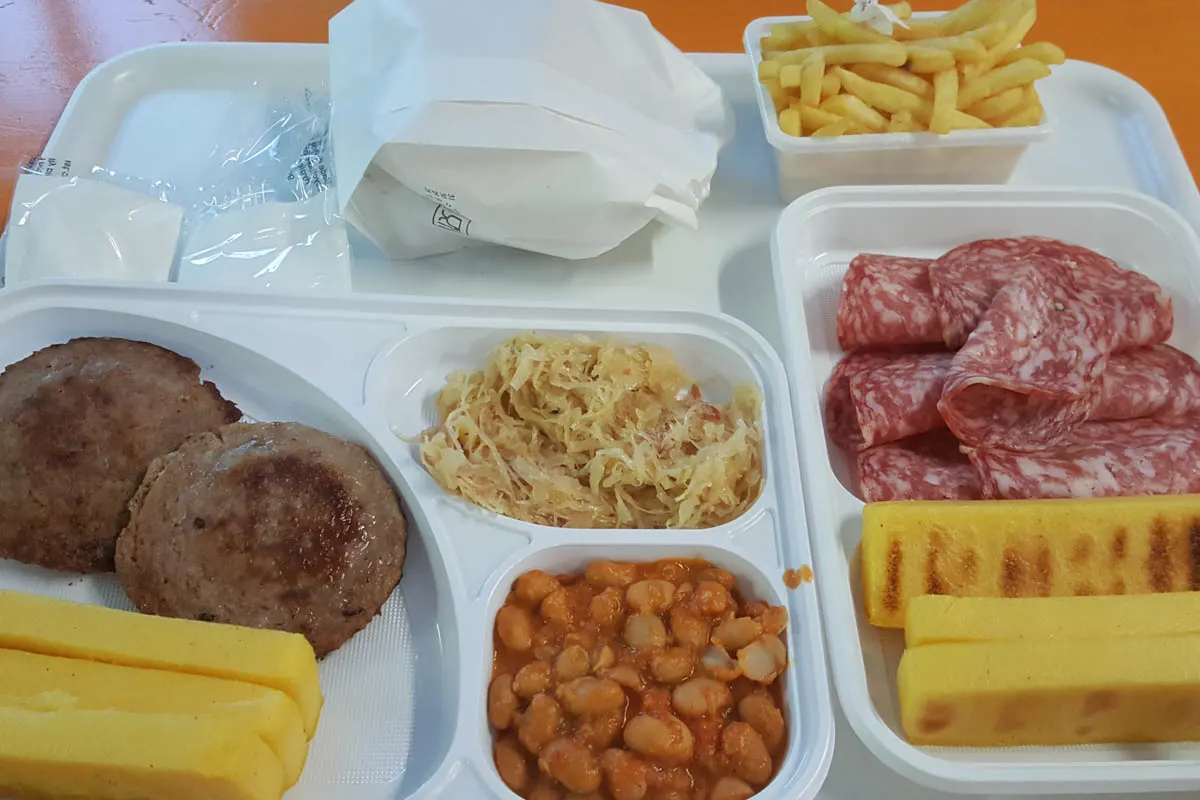
- Delve into the history of polenta and its longstanding relation to the Veneto. This article on my blog is a good starting point.
Polenta really is the soul of Veneto’s rustic culinary traditions. Although some may see it simply as a bland accompaniment, polenta is so much more than this. Its versatility and adaptability make it perfect for the local dishes which polenta helps you mop to the last drop.
How to do this adventure if you are not in the Veneto, Italy?
Nowadays, polenta is easy to find beyond the confines of Italy. Sophisticated delis and large supermarkets stock polenta both as a flour and in tidy ready to be sliced solid blocks. Grab a pack and try your hand at cooking polenta at home. You never know! You may just find your new favourite thing to eat.
More information:
28. Go Clock Spotting
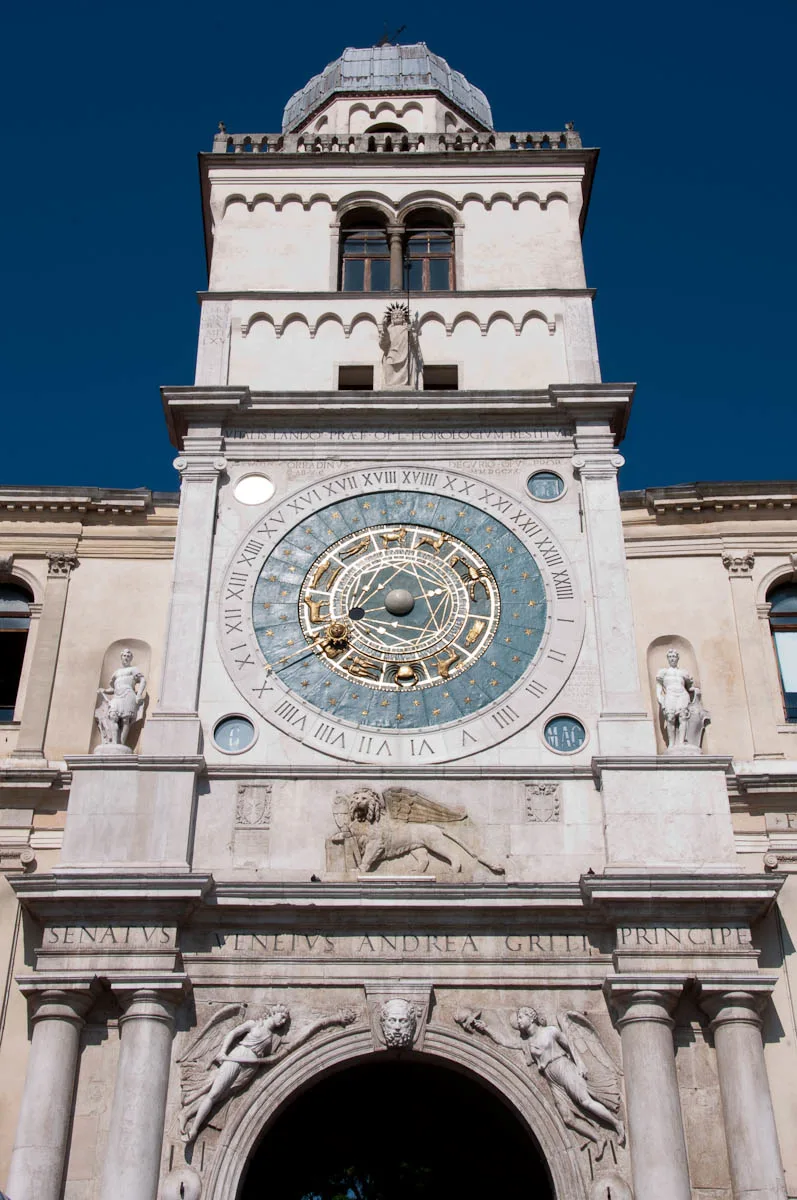
We are nearing the end of our exciting journey through the Veneto and here is one simple but really satisfying adventure to tick off. It’s all about the clocks, so start paying attention to the clocks you will come across in the Venetian cities and towns.
If you ever thought that clocks are boring and that counting minutes is a mind-numbing exercise, you are in for a surprise. For everywhere you go in the Veneto, you are bound to come across some really stunning clocks – from complex mechanisms showing not just the time but also all sorts of astronomical information to hand-drawn sundials on the walls of large houses and buildings. Plus, the world’s oldest tower clock is, allegedly, in the Veneto. You will find it in a town called Chioggia on the southern edge of the Venetian Lagoon.
So, here are three things you can do on this adventure with some examples to start you off:
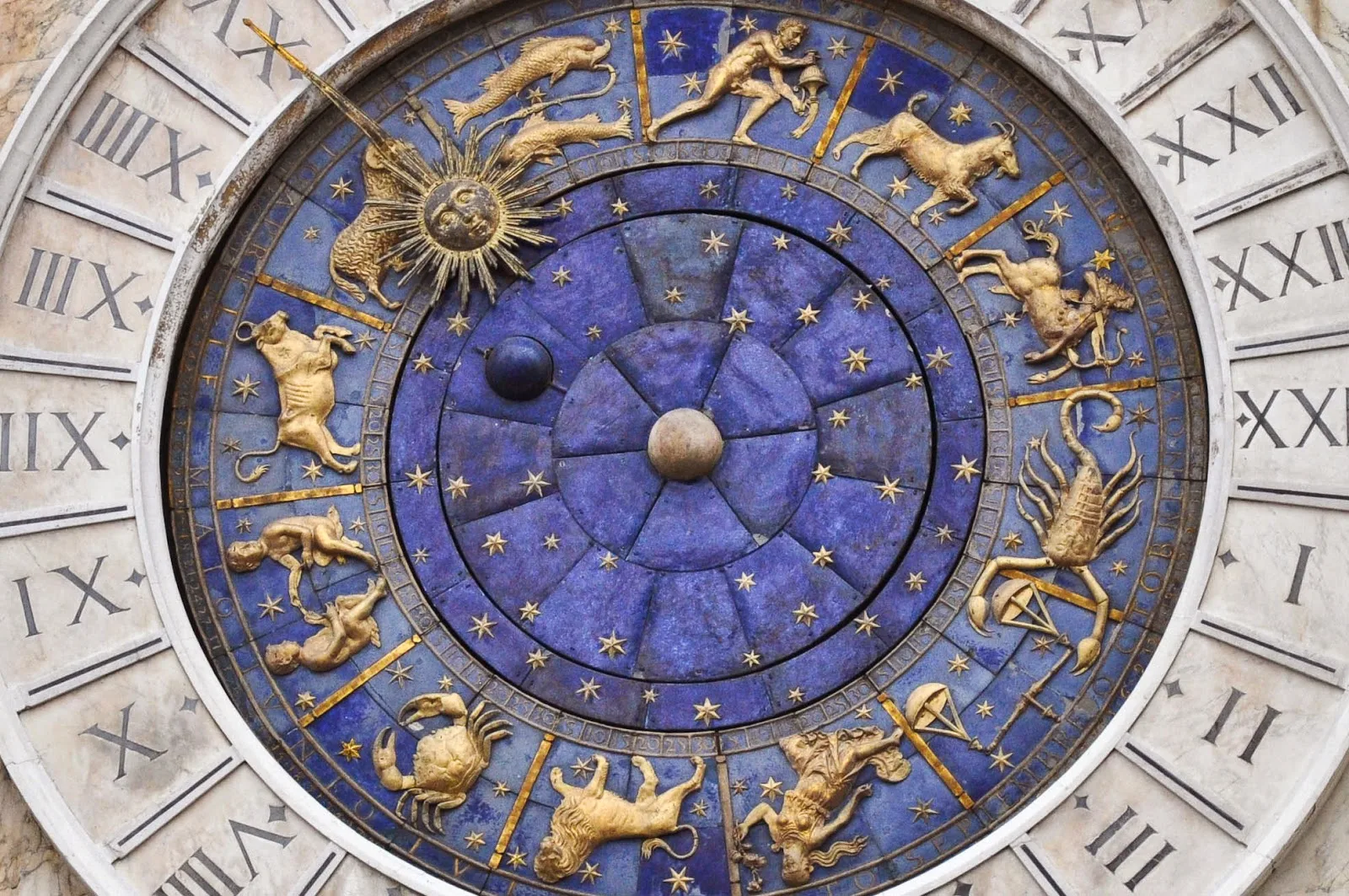
- Astronomical clocks – there are many stunning astronomical clocks around the Veneto. The two most splendid ones are the St. Mark’s Clocktower in Venice and Padua’s Clocktower. Both clocks can be visited as part of guided tours.
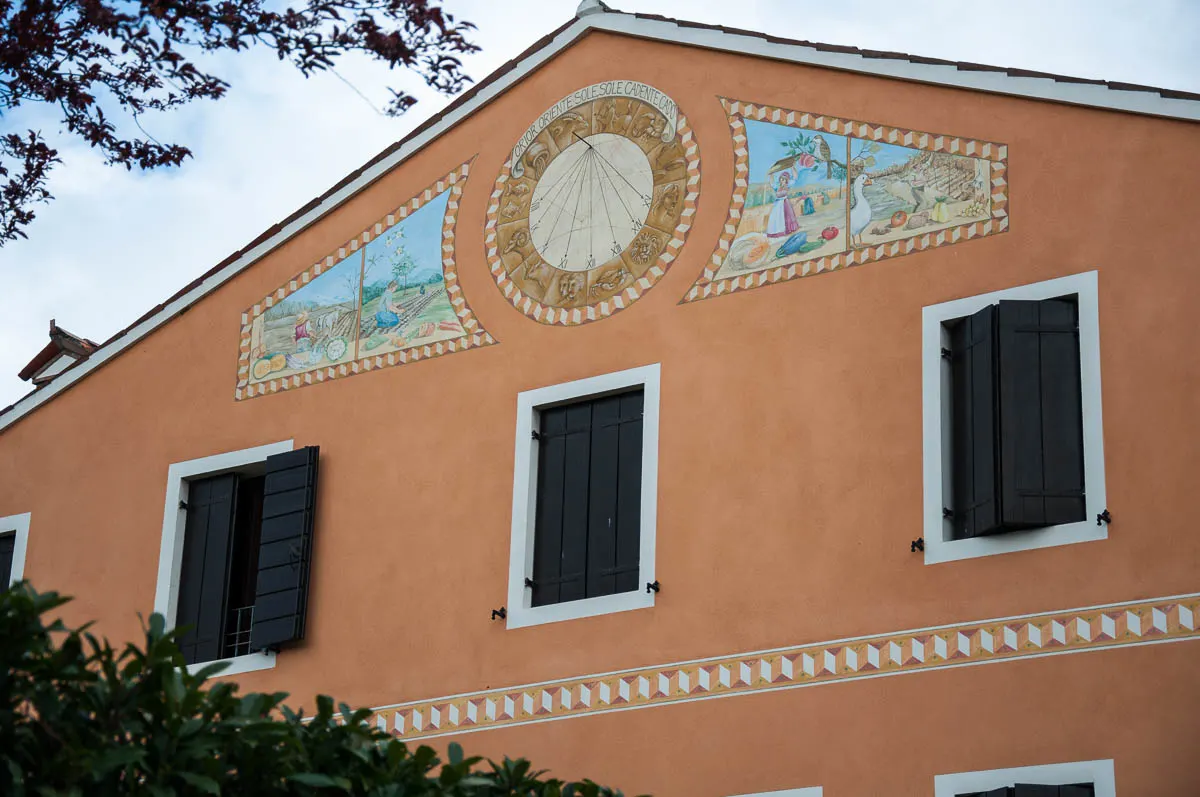
- Wall sundials – beautiful hand-drawn sundials decorate the walls of many private houses and public buildings in the Veneto. Spotting one is always a lovely surprise.

- Antique clocks – have a look at the historic shop of Pendoleria Soprana in Vicenza where clocks dating back to the 18th century can be admired and bought. The shop also has a clock-restoration workshop attached to it and it offers an intriguing glimpse into the world of time-keeping traditions.
Tik-tok, tik-tok! It’s time to get on with this adventure in the Veneto.
How to do this adventure if you are not in the Veneto, Italy?
Clock-making is a craft practiced in many corners of the world. Try finding what clock-making traditions there are at the place you call home. Alternatively, try to dig out curious details and interesting information about the most beautiful and/or complex clocks in your city or town.
More information:
- Padua’s Astronomical Clock – Where Time, Science and History Await You
- Point 4 in 10 Reasons to Visit Chioggia on Italy’s Adriatic Coast
29. Embrace Piazza Life

The piazza (or square in English) traditionally stands at the centre of Italian life. This sprawling open space surrounded by architecturally stunning buildings has come to be synonymous with the dolce vita that so many people would love to experience for themselves.
After all, where do you go when you want to take a coffee and people watch?! To the piazza, of course! Where do you head to for a leisurely after-work aperitivo with friends?! To the piazza! And where do you spend the evenings strolling slowly around dressed in your best clothes and allowing the world to see you while taking your sweet time to see the world? That would be the piazza again and again. The piazza is like a stage where you can see all life events taking place.
Now, the good news is that the Veneto has some of the most stunning piazzas in Italy. So, for this adventure, make sure that you tick off as many of them as you can. In addition and if you are interested, try to discover as much as possible about the history of each piazza and the buildings that surround it.
Here are three of the Veneto’s most splendid piazzas to get you started on this adventure:
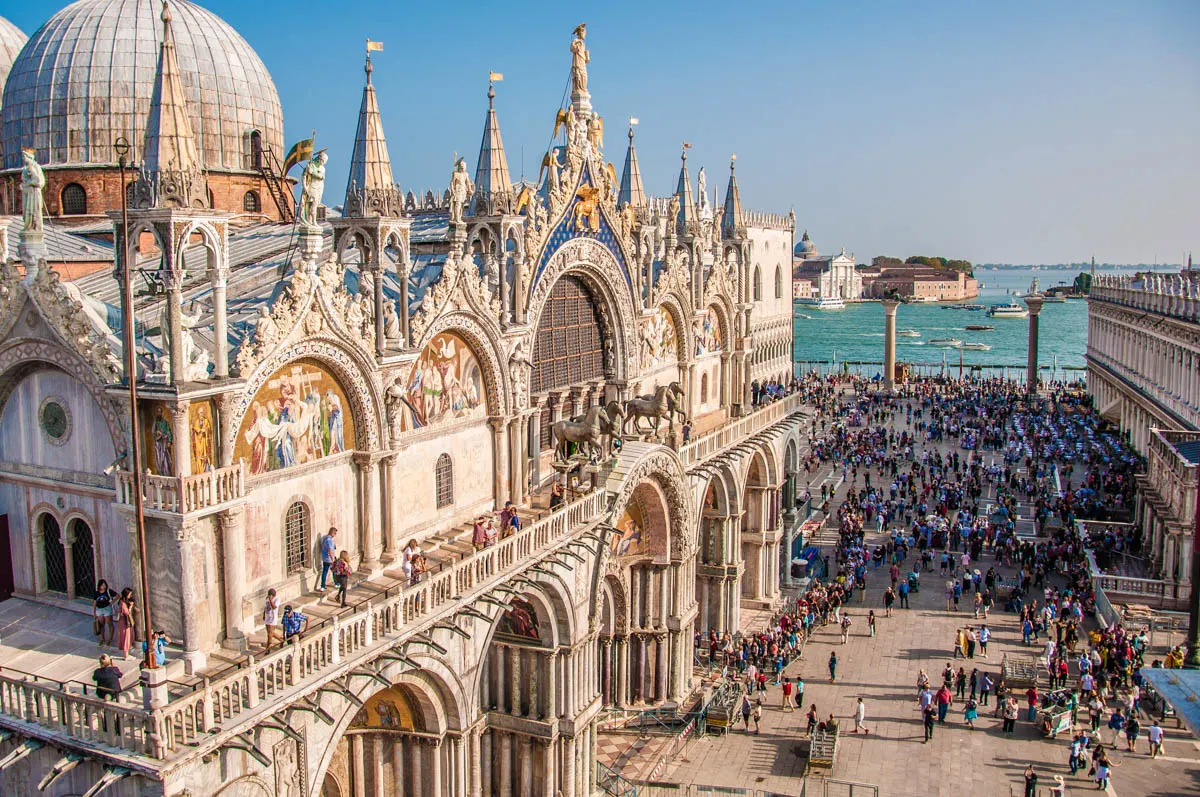
- Piazza San Marco in Venice – called ‘the finest drawing room in Europe’ by Napoleon himself, St. Mark’s Square is a visually and historically striking place. Surrounded by tall imposing buildings with wonderful architecture and containing countless pieces of art, this is one of Italy’s most important and beautiful piazzas. A must-see and a must-explore!

- Piazza delle Erbe in Verona – a noisy and visually overwhelming place, Piazza delle Erbe is full of life both day and night. It stands at the same spot where the city’s Roman Forum once was. It’s overlooked by Verona’s tallest tower – the medieval Torre dei Lamberti. Buildings covered with Renaissance frescoes, busy restaurants, a Baroque palace, a daily market, a large fountain crowned by the symbolic figure of Madonna Verona complete the scene.
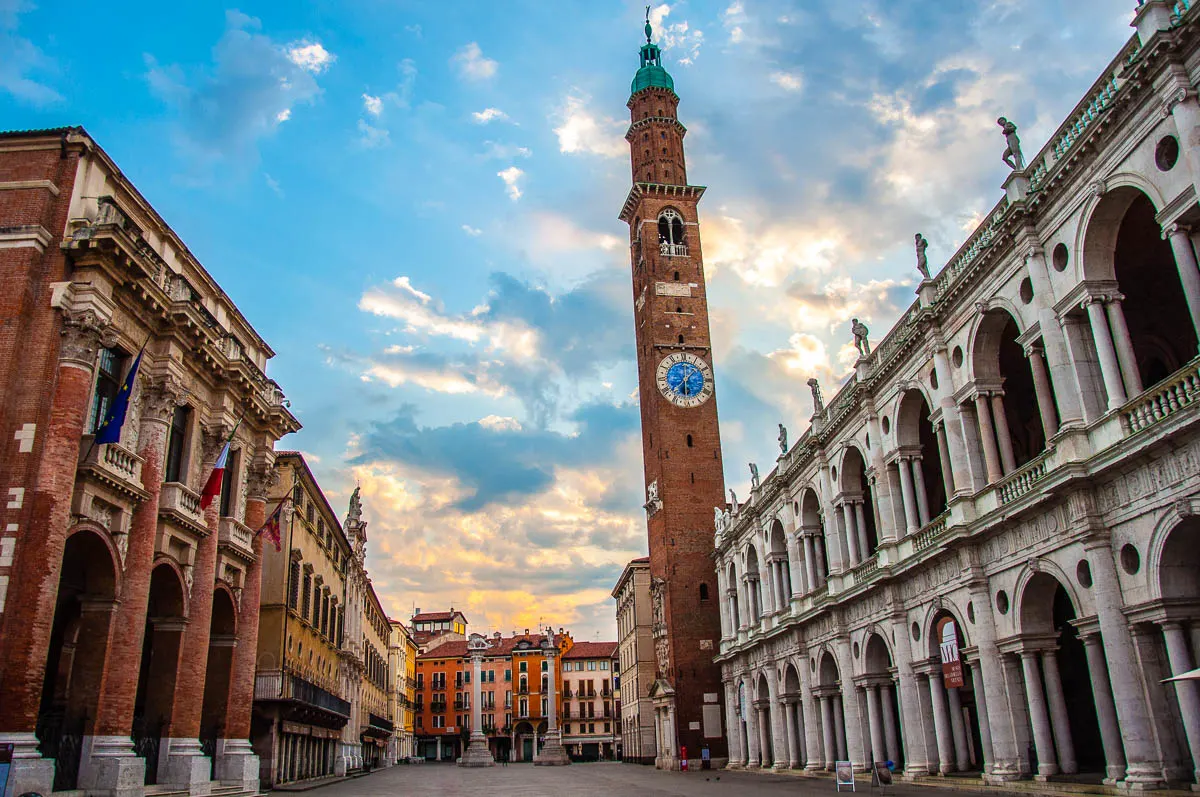
- Piazza dei Signori in Vicenza – this elegant rectangle is dominated by the perfectly symmetrical Palladian Basilica – a centuries-old council hall. The square comes alive during the regularly held markets and events. The rest of the time, Piazza dei Signori is a lovely place to go for a walk, to meet with friends or to simply sit down in one of the open-air cafes and enjoy a cup of coffee while admiring the stunning architecture around.
Don’t stop here! Both the largest and the smallest cities and towns of the Veneto have beautiful historical piazzas. Tick off as many as you can for a joyful adventure full of colour and life.
How to do this adventure if you are not in the Veneto, Italy?
There are many books written about Veneto’s most famous and interesting squares. See if you can get hold of some of them and get acquainted with the history of the piazzas, the buildings that surround them and the traditions in which they are steeped.
More information:
- Point 5 in 20 Best Things to Do in Verona, Italy in One Day – The Ultimate Itinerary with Photos and Tips
30. Discover Veneto’s Coffee Culture
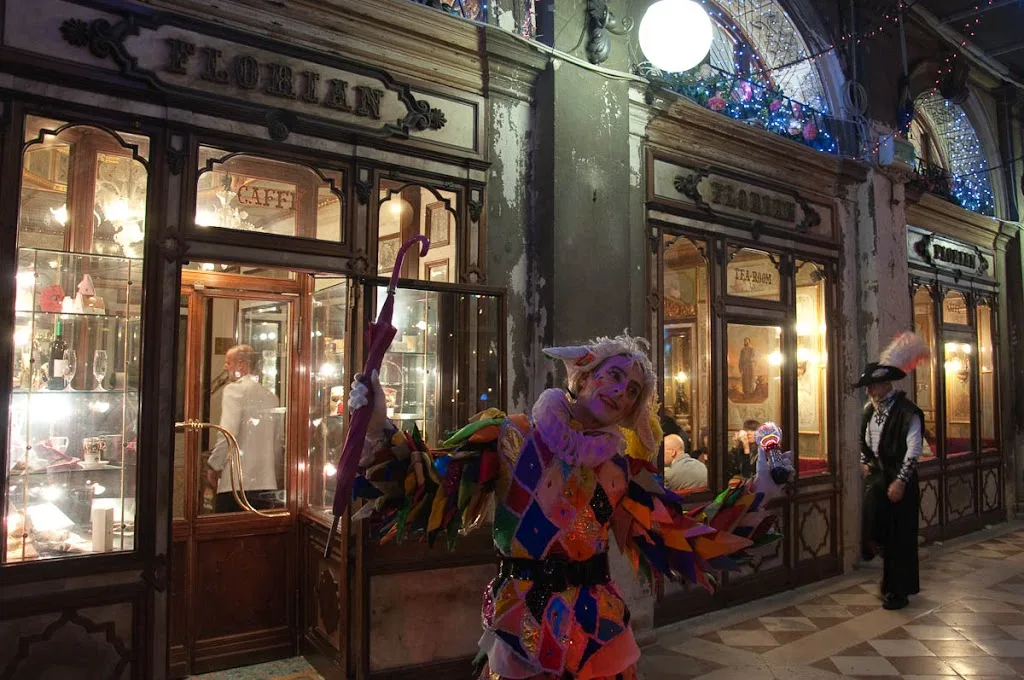
Did you know that the first Europeans to officially trade with coffee as consumer goods were the enterprising merchants of the Republic of Venice?! The first Italian coffee house was also opened in Venice in the 17th century. To this day, the Veneto proudly preserves the local coffee traditions and learning more about them over a cup of excellent coffee is a great adventure not to miss.
So, here are three ways how to approach learning about coffee and its traditions in the Veneto:
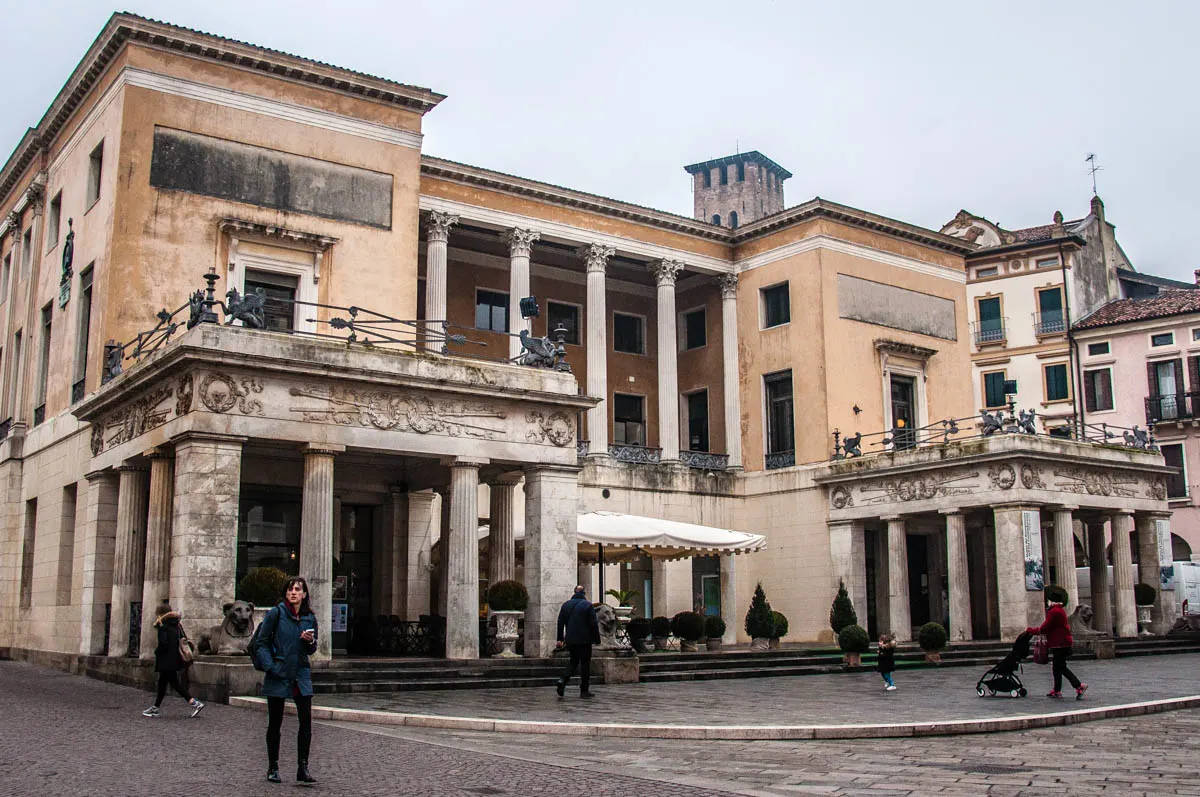
- Visit Veneto’s historic coffee houses like Cafe Flrofain in Venice and Cafe Pedrocchi in Padua.

- Learn about some of Veneto’s most notable in terms of coffee men. For example, Prospero Alpini – a physician, botanist, and director of Padua University’s Botanical Garden – was the first European to scientifically describe coffee and to provide detailed drawings of the coffee plant and its seeds. In his book on Egyptian plants De Plantis Aegypti liber, published in 1592, Alpini even included information about the coffee plant’s pollination.
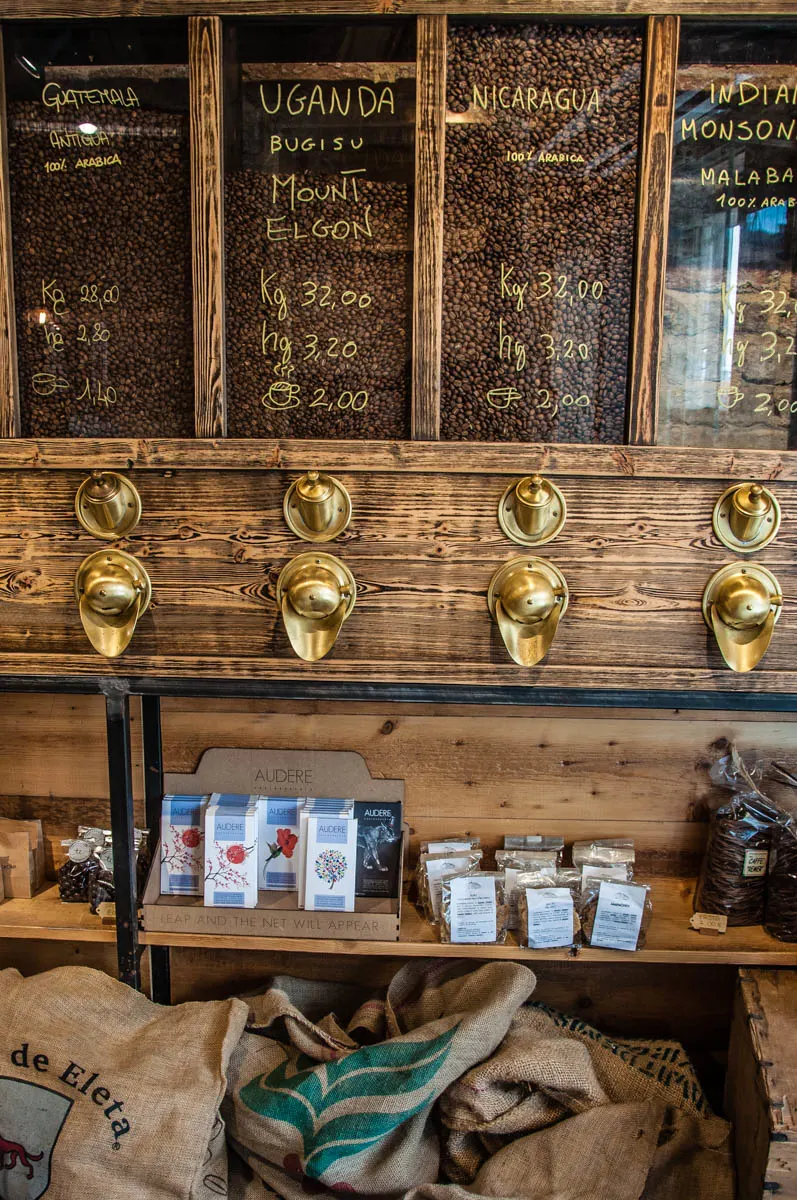
- Visit one of the Veneto’s artisanal coffee roasters in order to savour unique coffee blends. A good starting point is Torrefazione Cannaregio in Venice.
Do you love coffee? Yes?! Great! The Veneto is the right place to go on an adventure to learn so much about the roots and traditions of coffee in Italy and Europe. The best bit is that any coffee breaks you take during this adventure count towards your research.
How to do this adventure if you are not in the Veneto, Italy?
There are many ways to go about it. One is to research through books and scholarly writings the history of coffee and the role that the Republic of Venice played in it. Another is to order special coffee blends from the Veneto’s artisan coffee roasters. And a third is to go out and about and find a new favourite coffee shop in the place where you live. Take as many coffee breaks along the way as you need!
More information:
In Conclusion
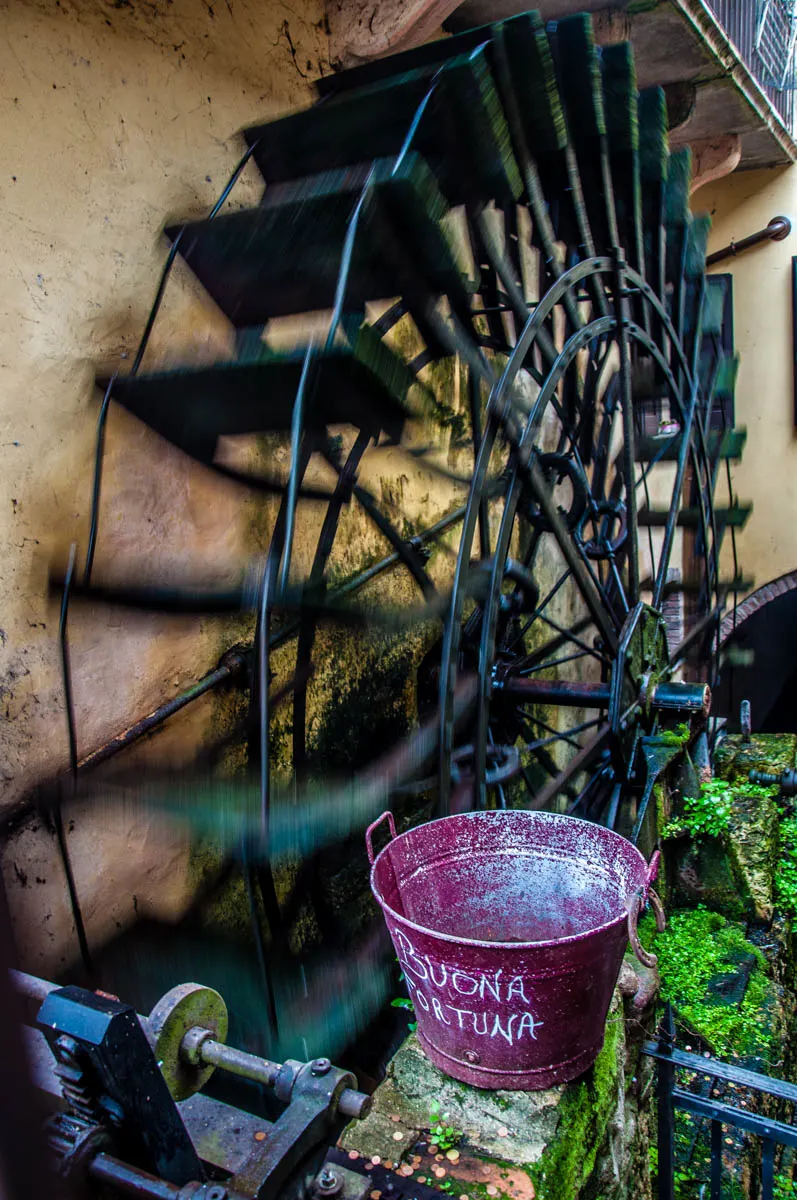
Adventures help us break the shackles of daily life. They open up new horizons in front of our eyes and feed our spirit with new emotions and discoveries.
In the wet embrace of autumn, it is only too easy to feel like life is gray and monotonous. So you quickly lose the will to go out and do new things. To help you feel re-energised inside, I wrote this list with 30 adventures to experience in the Northern Italian region of the Veneto.
Each adventure aims to take you out of your house and a bit beyond your comfort zone. This way you can discover new things and experience them from a different point of view. You can do one adventure each day for 30 days straight or you can spread these 30 adventures throughout a whole year.
Even if you don’t live in the Veneto in Northern Italy, you can adapt each adventure to your place of residence. Above, I have provided tips on how to do it.
Have fun completing all 30 adventures in one big challenge which I have christened #30daysofadventure!
Please, share with me your emotions and your photos from each adventure you have completed!
You can either leave me a text comment in the Comments section below. Or, you can leave a comment and a photo or two on my blog’s Facebook page. I am looking forward to hearing from you about which adventures you loved and enjoyed the most!
If you have suggestions for adventures to be included in the above list, please, let me know, too!
More Helpful Links for Even More Adventures in the Veneto, Italy
- Top 15 Places to Visit in the Veneto, Italy – The Ultimate Guide
- 25 Best Things to Do and See in Vicenza – Northern Italy’s Hidden Gem
- 20 Best Things to Do in Verona, Italy in One Day – The Ultimate Itinerary with Photos and Tips
- 10 Reasons to Stay in Padua During Your Italy Holidays
- Italian Piazzas – 20 Most Beautiful Squares in the Veneto, Northern Italy
- 8 Most Beautiful Villages to Visit in the Veneto, Italy
- Day Trips from Padua, Italy – Over 25 Unmissable Destinations in the Veneto, Lombardy and Emilia-Romagna
- Day Trips from Vicenza, Italy – Over 90 of the Best Destinations
- 11 of the Best Day Trips from Venice (With Lots of Photos, Travel Times and Italy Train Tips)
- Day Trips from Verona – 16 Destinations in Italy to Fall in Love with (With Travel Times and Train Tips)
- Best 12 Towns to Visit around Lago di Garda – Italy’s Largest Lake
- Lake Garda with Kids or the Best 11 Things to Do at Lake Garda for Families
- Italian Food – 13 Ways to Eat Well in Italy Without Breaking the Bank
Thank you for reading! Please, leave me a comment, pin the image below or use the buttons right at the top and at the end of this blog post to share it on social media.
For more useful information like this, please, like my blog’s page on Facebook and subscribe to my weekly strictly no-spam newsletter.
